MALBEC
Well, this grape is a native of southwest France. But try telling that to a modern wine drinker. It’s far more likely that today’s enthusiast will say ‘Argentina’. And they’d be right. But 10 years ago when asked to respond to the question – ‘What is Malbec’?, you’d have been met with a blank stare and a distinct lack of interest. Thanks to Argentina, Malbec is now a seriously thrilling star in the red wine firmament.
In its birthplace of Bordeaux and its traditional French home base of Cahors, it was going nowhere – fast. It’s a soft, juicy grape that gives lovely dark, damsony, perfumed, purple wine in a dry warm climate – but in Bordeaux, it was not replanted after the severe frost of 1956. So its ability to soften the Bordeaux blend has been supplanted by the Merlot – which is less susceptible to coulure and rot and gives a more regular crop.
It is a blending component in many southwest reds, but leads the field only in Cahors, where it must comprise at least 70 per cent of the blend. In a warm dry year (not that common) it can give deep dark wines tasting of damson skins and tobacco leaf. It is grown to a limited extent in the Loire, where it is called Cot, but it rarely ripens fully there.
It was first propagated in Argentina in 1852 (the oldest vines still growing are from 1861), but the cuttings came from Bordeaux, not from Cahors, and the Malbec in Argentina now seems to be rather different from that in Cahors. There is far greater clonal diversity in Argentina than in France, with everything from vines with small berries and lots of concentration to the opposite. The ideal spot for it in Mendoza is 1000m (3280ft) altitude and above – which covers a lot of land including the Uco Valley, because the ground rises to the Andes very gradually. Vistalba, Luján de Cajo, Agrelo are leading areas near Mendoza City; La Consulta, Tupungato and Gualtallary are important in Uco. The newest, highest-altitude wines, planted at 1440m (4700 ft) and above, have elegance, finer tannins, better acidity and fabulous, dark-scented fruit.
A vine-pull scheme in Argentina, in the 10 years to 1993, uprooted a lot of Malbec, most of it more than 50 years old.
Chile already has some Malbec, and it’s doing surprisingly well in cool spots. California uses it as a blender and Washington State in its own right. There are some historic plantings in South Australia, and a few plots in New Zealand, where it contributes richness and scent.
THE TASTE OF MALBEC
At its best, carefully grown and skilfully vinified in Argentina, Malbec has a dark purple colour, a thrilling damson and violet aroma (this violet aroma comes from a molecule called beta-ionnona, since you asked), a lush fat dark fruit flavour and a positively soothing ripe tannic structure. It can take new oak aging, but it’s a pity to smother its natural delicious ripeness with wood. In Cahors the flavour is more likely to be raisins, damson skins and tobacco. In both Chile and Australia you occasionally get the violet perfume and you usually get the soft, ripe, lush texture, but Argentina, by taming the tannins and maximizing the perfume and the lush, chubby texture, is leading the way.
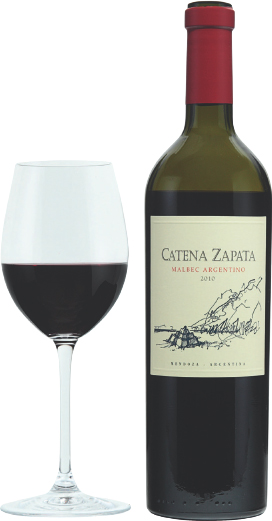
Nicolás Catena can take a lot of the credit for propelling Malbec onto the world stage. He returned to his family winery in Argentina from the USA keen to make wine in the style of California’s Napa Valley Cabernets, but, realizing that by far the best supplies of mature vines in Argentina were Malbec, had no trouble in focusing his attention on them. Mendoza is, in fact, ideally suited to Malbec, with excellent vineyard sites rising from about 1000m (3280ft) in height up to 1500m (4900ft). At higher altitudes, the big difference between day and night temperatures makes the grapes take several more weeks to ripen compared to the hotter, lower altitude Mendoza sites, giving wines of great concentration, balance and scent.
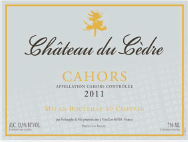
Château du Cèdre
Malbec, alias Auxerrois, is the mainstay of Cahors in southwest France: this cuvée, called Le Cèdre, is 100% Auxerrois from 30-year-old vines. Aged in new oak barrels for 20 months, it will last for at least 10 years.
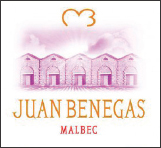
Juan Benegas
The Benegas family are one of the pioneers of Argentine wine. This Malbec marries grapes from 100-year-old Maipu vines with high-altitude Gualtallary fruit in a fine example of modern Argentine Malbec.

Malbec vineyards in the region of Luján de Cuyo in the province of Mendoza, Argentina with the Andes in the background. The cold nights found at high altitudes here extend the growing season, allowing crucial extra ripeness while still conserving acidity. Even so, it’s difficult to get soft tannins at less than 14% alcohol. And while Malbec rots in wet weather, there is precious little rain this side of the Andes, so rot is not a problem.
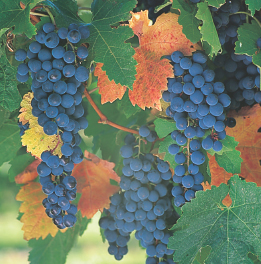
Malbec may be blended with Cabernet and Merlot in small amounts in New Zealand and Australia, for extra aroma and fatness of texture.
CONSUMER INFORMATION
Synonyms & local names
Known in the Loire Valley and the South-West of France as Cot or Côt – in Cahors it is called Auxerrois but this is not the same as the white Auxerrois of Alsace. On Bordeaux’s Right Bank, around Libourne, it is called Pressac. In Argentina, where it is called Malbec, the spelling Malbeck is also found.
Best producers
FRANCE Armandière, la Caminade, du Cèdre, Clos la Coutale, Clos de Gamot, Clos d’un Jour, Clos Triguedina, Cosse-Maisonneuve, les Croisille, de Gaudou, Lamartine, Mas des Etoiles, Mas del Périé, du Prince, la Reyne, les Rigalets.
ARGENTINA Achaval-Ferrer, Alamos Ridge, Alta Vista, Altos Las Hormigas, Altos de Medrano, Altos de Temporada, Andeluna, Anubis, Balbi, Juan Benegas, Luigi Bosca, Bressia, Humberto Canale, Catena Zapata, Colomé, Domaine Vistalba, Etchart, Fabre, Finca El Retiro, O Fournier, La Agricola, La Rural, Medalla, Nieto Senetiner, Noemía, Norton, Salentein, Terrazas de Los Andes, Michel Torino, Trapiche, Weinert.
CHILE Altamana, Viña Casablanca, De Martino, Concha y Toro, Lomo Larga, Montes, MontGras, Morandé, Odfjell, Valdivieso, Viu Manent.
AUSTRALIA Jim Barry, Bleasdale, Cullen, Delatite, Ferngrove, Leasingham, Wendouree, Zonte’s Footstep.
NEW ZEALAND Esk Valley, Mills Reef.
SOUTH AFRICA Druk my Niet, Fairview.
RECOMMENDED WINES TO TRY
Fifteen Argentinian wines
Alta Vista Serenade
Altos Las Hormigos Terroir
Andeluna 1300 Malbec
Anubis Mendoza Malbec
Benegas Estate Malbec
Finca El Retiro Malbec Mendel Finca Remota
Catena Zapata Nicasia Vineyard Malbec
Bodegas Fabre Grand Vin
La Agricola Santa Julia Malbec Reserva Nieto
Noemía J Alberto
Norton Reserva Malbec
O Fournier Alfa Crux Malbec
Senetiner Cadus Malbec
Terrazas de Los Andes Las Compuertas
Zuccardi Aluvional
Ten Cahors wines
Ch. du Cèdre Cahors le Cèdre
Clos la Coutale Cahors
Clos de Gamot Cahors Cuvée Vignes Centénaires
Clos d’un Jour Un Jour
Clos Triguedina Cahors Prince Probus
Dom. Cosse-Maisonneuve Le Sid
Ch. les Croisille Cahors Tradition
Ch. de Gaudou Cahors
Ch. Lamartine Cahors Cuvée Particulière
Ch. la Reyne Cahors
Nine other wines containing Malbec
Jim Barry McCrae Wood Cabernet Sauvignon Malbec (Australia)
Viña Casablanca San Fernando Miraflores Estate Malbec (Chile)
Cullen Mangan East Block (Australia)
Esk Valley Hawkes Bay Reserve The Terraces (New Zealand)
Montes Reserve Malbec (Chile)
MontGras Reserva Malbec (Chile)
Morandé Chilean Limited Edition Malbec (Chile)
Valdivieso Reserve Single Vineyard Malbec (Chile)
Wendouree Cabernet/Malbec (Australia)
MALVASIA
I think the most gorgeous Malvasia I ever had was pink and frothy, heady with the scent of rose petals and hothouse grapes, and it was from northern Italy. We were all entranced by it, but nobody could really say why it was like that – or even if it had ever been like that before. But that’s the thing about Malvasia – it’s not so much a single grape as a whole family. France uses the name of Malvoisie as a synonym for a whole range of grapes, none of which are Malvasia Bianca. And the various Malvasias are mostly unrelated; so think of the name as being a style rather than a family. Most Malvasia is white, but there are a sufficient number of black versions to produce a range of pink and red wines.
Italy and Iberia are its main homes. As a dry white it is blended with Trebbiano all over central Italy, generally to Trebbiano’s benefit because while Trebbiano is often marked by a singular lack of flavour or texture, Malvasia is generally quite fat and soft and should add a bit of peachy plumpness when young and nutty depth when mature. But not too mature: one or two years old is mature in these sorts of wines. In Lazio’s Frascati, where Malvasia certainly improves the blend, the local version is Malvasia di Candia, though the more aromatic Malvasia Puntinata or Malvasia del Lazio is regarded more highly and makes wines with less of a tendency to flabbiness. Emilia’s Malvasia is also called Malvasia di Candia. There is also a Malvasia di Toscana, which is usually only fit for uprooting. In Friuli there is Malvasia Istriana, which is well structured and flavoursome, producing bright, fresh, scented whites here and in Slovenia and Croatia. A few producers barrel-age it and that can produce wines of surprising intensity.
Passito or fortified sweet white Malvasia – the latter have more aroma – is a speciality of southern Italy, though many wines are almost extinct. The few survivors are really good. Malvasia delle Lipari is the best known; others are Malvasias di Bosa, di Grottaferrata, di Planargia and di Cagliari. Black Malvasia Nera is found in Puglia and Tuscany, and adds a very interesting dark, rich quality to Tuscan Sangiovese reds as well as a chocolaty, sometimes grapy warmth to Puglian blends. There is also some in Piedmont.
Malvasia is found in Rioja and Navarra in Spain and old-fashioned, barrel-aged white Riojas benefit from the Malvasia fatness fleshing out the skinnier Viura. You find it in different forms in Portugal, especially the Douro (Malvasia Fina and the inferior Malvasia Rei, which could be the same as Palomino), Beiras, Estremadura and Madeira, where it produces the rich, smoky, acidic Malmsey (see here). There is a scented version in California, and a little in Greece, and knowing Malvasia, it’ll keep turning up in a good few more places yet, under some pseudonym or other.
THE TASTE OF MALVASIA
With so many subvarieties it is difficult to generalize about Malvasia’s flavour, but where lesser versions can be flabby and low in acidity, tending to oxidize easily, better Malvasias are characterful and aromatic, though not as exotically so as Muscat, with flavours of peaches, apricots and white currants. Istrian Malvazija from Croatia is fresh and scented with wild flowers and peach blossom. Sweet ones are apricotty and rich, red ones dark and chocolatey. In Madeira, where it’s usually called Malmsey, the taste is intense, smoky and treacly but cut with a very insistent acidity.
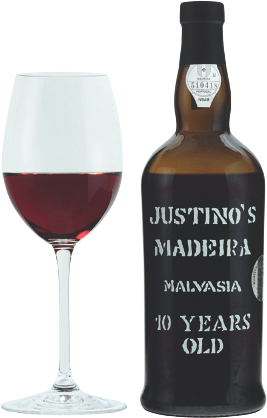
The word ‘Malvasia’ is rarely found on Madeira labels. The traditional name for Madeira wine made using Malvasia grapes is Malmsey. Indeed, for a time the name Malmsey simply referred to the darkest and richest style of Madeira wine and other grapes – in particular Negramoll – could be used. But despite Malvasia grapes being rare on the island, a serious independent producer like Justino will be able to ensure his wines are made of the grape stated on the label. About time too.

La Stoppa
One of Malvasia’s many variants. Ths one from La Stoppa in the Colli Piacentini in Emilia-Romagna is sweet, fizzy and low in alcohol.

Henriques & Henriques
Henriques & Henriques is one of the only Madeira wine companies to have significant vineyard holdings. The wines are always finely focused.

Barrels of Malmsey at the Madeira Wine Company. Because Madeira gains its character from the aging process more than from the grape or from the winemaking, Malmsey Madeiras do not have the peachy, apricot aromas of most Malvasias. Malmsey is the sweetest style of Madeira but even so never loses its acid bite and smoky tang. In Madeira several different strains, or even different grapes, go by the name of Malvasia. Plantings of all Malvasias put together on the island are very small.
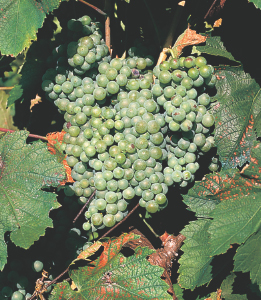
Malvasia is one of the hardest of all vines to pin down, simply because it isn’t just a single vine, and not all vines called Malvasia are necessarily related. They’re not even necessarily the same colour.
CONSUMER INFORMATION
Synonyms & local names
Widely planted in Italy and Iberia, there are many different subvarieties of Malvasia Bianca, usually called Malvasia this or that. Not to be confused with the name Malvoisie which is rarely used as a synonym for Malvasia. Malmsey is a style of wine using Malvasia grapes on the island of Madeira.
Best producers
ITALY/Friuli-Venezia Giulia Borgo del Tiglio, Ca’Ronesca, Paolo Caccese, Cormons co-op, Sergio & Mauro Drius, Edi Kante, Lorenzon/I Feudi di Romans, Eddi Luisa, Marega, Alessandro Princic, Dario Raccaro, Schiopetto, Villanova; Emilia-Romagna Forte Rigoni, Luretta, Gaetano Lusenti, La Stoppa, La Tosa, Vigneto delle Terre Rosse; Tuscany (Vin Santo) Avignonesi, Badia a Coltibuono, Fattoria di Basciano, Bibbiano, Bindella, Cacchiano, Capezzana, Fattoria del Cerro, Corzano e Paterno, Fontodi, Isole e Olena, Romeo, San Felice, San Gervasio, San Giusto a Rentennano, Selvapiana, Villa Sant’Anna; Lazio Castel del Paolis; Sicily Colosi, Carlo Hauner.
SPAIN Carballo, El Grifo, Abel Mendoza.
PORTUGAL/Madeira Barbeito, Barros e Souza, H M Borges, Henriques & Henriques, Vinhos Justino Henriques, Madeira Wine Company (Blandy, Cossart Gordon, Leacock, Rutherford & Miles), Pereira d’Oliveira.
CROATIA Coronica, Kabola.
USA/California Bonny Doon, Robert Mondavi, Sterling Vineyards.
RECOMMENDED WINES TO TRY
Ten dry Italian wines
Borgo del Tiglio Collio Malvasia
Castel del Paolis Frascati Superiore Vigna Adriana
Sergio & Mauro Drius Friuli Isonzo Malvasia
Forte Rigoni Colli di Parma Malvasia
Edi Kante Carso Malvasia
Luretta Colli Piacentini Malvasia Boccadirosa
Dario Raccaro Collio Malvasia
Schiopetto Collio Malvasia
La Tosa Colli Piacentini Malvasia Sorriso di Cielo
Vigneto delle Terre Rosse Colli Bolognesi Malvasia
Five sweet Malvasia Italian wines
Colosi Malvasia delle Lipari Passito di Salina
Carlo Hauner Malvasia delle Lipari Passita
Isole e Olena Vin Santo
La Stoppa Colli Piacentini Malvasia Passita Vigna del Volta
San Giusto a Rentennano Vin Santo
Three Spanish Malvasia wines
Carballo La Palma Malvasía Dulce (sweet) (Spain)
El Grifo Lanzarote Malvasía Dulce (sweet) (Spain)
Abel Mendoza Rioja (Blanco) Fermentado en Barica (Spain)
Five Madeira wines
Barbeito Malmsey
Blandy 15-year-old Malmsey
Cossart Gordon 1920 Malmsey
Henriques & Henriques 15-year-old Malmsey
Justino 10-year-old Malvasia
MALVASIA NERA 
A black form or forms of Malvasia (see here). In Italy Malvasia Nera is found in the province of Bolzano in Alto Adige, and in Puglia, Sardinia, Basilicata, Calabria, Tuscany and Piedmont. It may be blended with Negroamaro in Puglia, and Sangiovese in Tuscany. It often has a black plum richness and hint of floral scent. In Piedmont it has two DOCs, Malvasia di Castelnuovo Don Bosco and Malvasia di Casorzo. Both can be sweet, sparkling and gently aromatic. Best producers: (Italy) Francesco Candido, Leone de Castris, Roda del Golfo, Cosimo Taurino.
MALVOISIE 
This ought to be a French synonym for Malvasia, but it isn’t. Instead, it is a name applied locally to several different varieties in France, among them Pinot Gris (Malvoisie is also the name by which Pinot Gris is known in Switzerland’s Valais), Maccabéo, Bourboulenc, Clairette, Torbato and Vermentino (also known by the name of Malvoisie in Spain and Portugal). Best producers: (France) Vignerons Catalans, Jacques Guindon.
MAMMOLO 
Mammole is the Italian word for ‘violets’, of which Mammolo is said to smell. It is planted in such small quantities now that few Tuscan reds owe much to it. It is permitted in Chianti but has largely been bypassed in the rush to improve Sangiovese. There is also a little planted in the Vino Noble di Montepulciano region and it appears in Corsica as Sciacarello. Best producers: (Italy) Antinori, Boscarelli, Contucci, Dei, Poliziano, Castello di Volpaia.
MANDILARIA 
Widely planted Greek vine that makes dark, powerful, tannic wine, and is found on various islands, including Crete. Best producers: (Greece) CAIR, Archanes co-op, Paros co-op.
MANTONICO 
A Calabrian grape good for both dry and sweet passito wines. Montinico is a synonym for Pagadebit (see here). Best producer: (Italy) Librandi.
MARATHEFTIKO 
Cypriot variety traditionally grown to beef up the less interesting Mavro, but now being taken a bit more seriously. The wines have lots of colour and body, and are nicely aromatic. Best producers: Aes Ambelis, Ezousa, Vasa.
MARÉCHAL FOCH 
Early ripening and with good resistance to winter cold, this French hybrid is popular in Canada and New York State, where it may be made as a varietal. It makes attractively soft, sometimes jammy, sometimes smoky red wines, and may be aged in oak for more substance. Carbonic maceration is used to make lighter wines. It is named after the First World War French general. Best producers: (Canada) Stoney Ridge, Quails’ Gate; (USA) Wollersheim.
MARIA GOMES 
The name given to Fernão Pires (see here) in the Bairrada region of northern Portugal. Best producers: (Portugal) Caves Aliança, Luís Pato, Messias, Quinta de Pedralvites.
MARSANNE 
See here.
MARSELAN 
A 1961 French crossing of Cabernet Sauvignon and Garnacha favoured by a few growers in southern France and Spain, and also the Americas and China. They have good reason: it makes structured, balanced wines of good colour and aroma.
MARZEMINO 
Don Giovanni operatically enjoys Marzemino just before being swallowed up in Hell, and while Marzemino may not be everyone’s idea of the perfect last wish, it is very attractive in less desperate circumstances.
It is found in Trentino and to a lesser extent in Veneto and Lombardy, and has typically northern Italian grassy acidity and cherryish fruit, combined with good colour and ripeness. In Trentino it is usually made as a varietal wine for drinking young; in Lombardy it may also be blended with Sangiovese, Barbera, Groppello and Merlot, though probably not all at once. Sweet passito versions also exist, perhaps blended with other grapes. DNA fingerprinting has shown that it is closely related to Teroldego, and fairly closely to Lagrein. Best producers: (Italy) Battistotti, La Cadalora, Cavit, Concilio Vini, De Tarczal, Isera co-op, Letrari, Mario Pasolini, Eugenio Rosi, Simoncelli, Spagnolli, Vallarom, Vallis Agri.
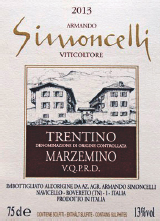
Armando Simoncelli
Marzemino is one of the most refreshing and mouthwatering of northern Italy’s red grapes – making perfect mountain picnic wine.
MATARO 
An Australian name for Mourvèdre (see here), now little used.
MATURANA 
An old Riojano vine which practically died out in the early part of the 20th century, this has now been rediscovered and authorized for the Rioja blend. There is also a red version, Maturana Tinta, not related and probably the same as Trousseau and Bastardo. Both colours are regarded in Rioja as of high quality.
MAUZAC 
A grape of southwest France with a rustic, green apple skins flavour that is best in sparkling versions, Mauzac is found principally in the Gaillac and Limoux regions. It probably takes its name from either the town of Mauzac in Haute-Garonne, or from that of Meauzac in Tarn-et-Garonne. It is usually blended with other grapes – Len de l’El in Gaillac, Chardonnay and Chenin Blanc in Limoux. In Gaillac it appears in many guises, from dry to sweet, still to sparkling. In Limoux it has been partly supplanted by Chardonnay.
In Limoux it is made into sparkling Blanquette de Limoux and Crémant de Limoux, though usually by the Champagne method rather than the old méthode ancestrale (this basically relied on the fermentation dying down in the autumn – Mauzac ripens late and so the fermentation was not finished before the winter – and then starting again in the spring, by which time the only partially fermented wine would have been bottled). Now the grapes are more likely to be picked earlier for acidity and the Champagne method is used to make a good sparkling wine. Mauzac can produce berries that vary in colour from green through russet and pink to black; Mauzac Noir from the Tarn, however, is a different vine altogether. Best producers: (France) l’Aigle, Gineste, Maison Guinot, Labarthe, Robert Plageoles.
MAVRO 
The main red grape of Cyprus is of pretty low quality, and there may be limits to what the most inventive modern winemaking can do with it. Since the name merely means ‘black’ it may, however, cover several different grapes. It is used in the local sweet Commandaria.
MAVRODAPHNE 
A Greek vine which makes sturdy, rich red wines, in particular the porty Mavrodaphne of Pátras. It is nearly always made sweet, and treating it this way seems to bring out all its aroma; dry versions, are, however, now being made, with more concentration and extraction. Best producer: (Greece) Achaia-Clauss.
MAVROTRAGANO 
Greek vine found on Santorini; the name is probably used for more than one variety. It was on the point of dying out when it was rediscovered, and while still grown in tiny amounts, its wines are impressive. It’s best made into a dry wine, but the tannins need to ripen fully to soften their grip; the wines are dark and spicy, very aromatic, and with a vibrant personality. Best producer: (Greece) Hatzidakis.
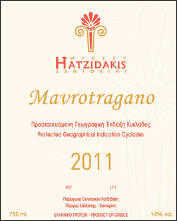
Hatzidakis
The Mavrotragano variety covers only 2% of Santorini’s vineyards, but its dark, spicy, powerful wine is impressive, by itself or in blends.
MAVRUD 
Mainly found in Bulgaria, late-ripening, small-berried Mavrud makes weighty, solid red wines of character but no particular elegance and it adds a broad-shouldered rustic power when blended with Cabernet or Merlot. It is high in tannins and colour and takes well to oak aging. Best producers: (Bulgaria) Assenovgrad, Maxxima, Santa Sarah.
MAZUELO 
The Rioja name for Carignan/Cariñena (see here). It brings acidity, colour and tannin to the blend, but is less prized than Tempranillo. Best producers: (Spain) Amézola de la Mora, Berberana, Martinez Bujanda, CVNE, Muga, La Rioja Alta, Marqués de Riscal.
MELNIK 
Bulgarian vine capable of quite high quality wines. It is found mainly around the town of the same name, near the Greek border, and it needs plenty of heat to ripen. Its wines have very good colour and balance and sometimes assertive tannins, and a certain rich warmth, particularly with oak aging. They can be smoky, coffeeish and toffeeish and very appealing, and can improve in bottle. There is a softer, earlier ripening clone that can be easier to drink.
MELON DE BOURGOGNE 
This is the one and only grape behind Muscadet, and so closely is it identified with the wine that the grape’s other name is Muscadet. But as one might gather from this name, it originally came from Burgundy and travelled west to reach the western end of the Loire Valley around the city of Nantes. It had been much planted in Burgundy, until its destruction was ordered in the early 18th century whereupon, according to the ampelographer Galet, the growers, in order to save such a useful vine, engineered confusion with Chardonnay and managed to get some Chardonnay torn up in its place. There is still some, albeit only a little, planted on the Côte d’Or.
The Burgundy growers favoured Melon so much because of its resistance to cold – although it buds early, so is apt to be hit by spring frosts – and its generous and regular yields. Its secondary buds are fertile, so even after frost it may be able to produce some sort of a crop. It is, however, subject to some of the growers’ worst nightmares, in the form of downy and powdery mildew and grey rot, and may have to be picked before complete maturity to avoid the worst effects of these.
In the Pays Nantais, where it was introduced after the freezing winter of 1709 which pretty much destroyed whatever grapes were there, it has a poor reputation for high acidity and low flavour, and the best that is usually said of it is that it goes well with the local fruits de mer. But in fact winemaking standards have been rising – skin contact, lees stirring and barrel fermentation for the best wines (not usually new barrels, which can unbalance the flavours) all help to give greater weight and richness. There are even some vins de garde being made, and these can improve in bottle for a decade, becoming honeyed with flavours of quince and ripe greengage. Such wines are, of course, not the norm. Muscadet is still at heart a simple wine for drinking young, but even the négoçiants, who still control 80 per cent of the market, and supermarkets have started to stock better examples. In an era where we are turning against oaky styles and too much aggressive Sauvignon, there’s something to be said for the mellow, reflective charm of decent Muscadet. Growers’ wines are the best bet. Sur lie wines, bottled off their lees, have the greatest depth, and the schist soils of the Sèvreet-Maine region give the best quality.
The Coteaux de la Loire appellation has good terroir but is small, and the sandy soil of the Côtes de Grand Lieu appellation produces light wines for very early drinking.
In California and Australia there has been considerable confusion between Melon and Pinot Blanc, with even cuttings from the University of California at Davis being wrongly identified as Pinot Blanc. Plantings are more or less sorted out now, however. Best producers: (France) Chéreau-Carré, Luc Choblet, l’Ecu, Pierre Luneau, Louis Métaireau, Ragotière.
MENCÍA 
This grape of northwestern Spain traditionally gives light, fresh, acidic reds with a raspberry and blackcurrant leaf flavour not unlike a slightly raw Cabernet Franc, and good tannin. It has become increasingly fashionable and is now making many darker examples, often heavily influenced by oak. Which is a pity, since Mencía is delicious drunk young, without oak. It is a rather reductive variety, however, and an enthusiastic adoption of screwcaps has created too many rather sulphidic examples. More careful winemaking will cure this.
It is found in Valdeorra, Ribeiro and, above all, in Bierzo, where it is the main red grape and where it may be blended with Garnacha Tinta. It is delicious young, and doesn’t need the oak it is sometimes smothered in. It is the same vine as Portugal’s Jaen where it can also make delightful juicy reds (see here). Best producers: (Spain) Jesús Nazareno co-op, Moure, Priorato de Pantón, Vire dos Remedios
MENU PINEAU 
A grape of the Loire Valley, also known as Arbois, now in decline. The wine is relatively low in acidity and supple.
MARSANNE
I used to think that Marsanne and Roussanne were the Siamese twins of white Rhône grapes; one was never mentioned without the other, but one was also clearly more favoured. Roussanne was always described as far more fragrant and refined, and the clumsier Marsanne was chided for marching in and taking over most of Roussanne’s best sites. Well, it’s true Marsanne has largely supplanted Roussanne in the northern Rhône – it’s a far more reliable cropper which inevitably influences growers’ decisions – but it’s a good grape. And if the only Marsanne you had ever tasted was Tahbilk’s in Australia or the mighty, throat-filling beautiful beast of a mature Hermitage you’d say it was a superb grape. Anyway, it dominates the white blends in Hermitage, Crozes-Hermitage, St-Joseph and St-Péray but is not permitted in Châteauneuf-du-Pape, whereas Roussanne is.
If Marsanne is to have character it must be grown in the right place, and then vinified with care. In too hot a climate the wine produced becomes flabby; in too cool a spot it has an undeveloped simple, bland flavour. And it’s another of those grapes you can’t overcrop – it becomes neutral and characterless. As for new oak, more than just a splash squashes the grape’s personality.
Most Marsanne is made to be drunk young, within just a few years of the harvest. Grapes for this style are often picked before full ripeness to retain acidity, but you risk having a wine without any real taste. That’s why in the Languedoc Marsanne is often blended with the more aromatic Viognier. If you do let the grapes ripen fully on the vine, as they often do in Hermitage and sometimes in Australia, you get high-alcohol wines that can age a good while, and though they often go through a dumb phase after a few years when they taste flat and unforthcoming, after about 10 years they emerge darker in colour and more complex in flavour, and with an oily, weighty, honeyed character accompanied by nuts and quince fruit. Hermitage and the better wines of the Rhône are the best candidates for this sort of aging; there are also a few suitable examples in Australia, where it is planted in small quantities in Victoria for high-quality wine.
There is some Marsanne in Switzerland, where it produces good wine called Ermitage in the Valais region, and there’s some in France’s Savoie, where it is known as Grosse Roussette or Avilleran. California has a bit of Marsanne, but so far the wine tends to be dull and gluey in flavour.
THE TASTE OF MARSANNE
When young it has a minerally edge, often with a citrus, peachy flavour. With age this matures into a rich palate of honeysuckle and jasmine, acacia honey and perhaps a touch of apricot or quince; it is aromatic, quite oily, nutty, and surprisingly heavyweight. Accordingly, it can partner rich food very well when it’s mature. As a young wine it’s equally good with or without food.

The Tahbilk winery in central Victoria is one of the most beautiful in Australia, and has Australian National Trust classification. Tahbilk’s association with Marsanne can be traced as far back as the 1860s although none of these plantings have survived. Vines dating from 1927 are still in use and reputed to be the oldest Marsanne vines in the world. Chateau Tahbilk Marsanne was served to the young Queen Elizabeth II when she visited the winery in 1953. The wine has a distinct honeysuckle aroma and flavour and is very good young as well as improving with up to 12 years’ aging in bottle.
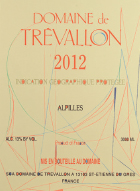
Domaine de Trévallon
This intense wine from Provence is a blend of 45% each Marsanne and Roussanne and 10% Chardonnay; since it fits into no AC rules, it is classified as IGP.
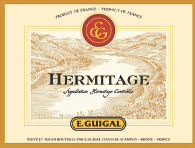
Guigal
A powerful but mildly scented Marsanne wine from Hermitage in the Rhône Valley, impressive when young but also capable of aging for decades.

Picking Marsanne grapes in Chapoutier’s Chante-Alouette vineyard at the top of the Hermitage hill in the northern Rhône. Chapoutier uses Marsanne to make several single-vineyard Hermitage wines as well as a Hermitage Vin de Paille. For the vin de paille the grapes are picked extra ripe and then left to dry indoors for two months before being fermented into an intensely sweet dessert wine.
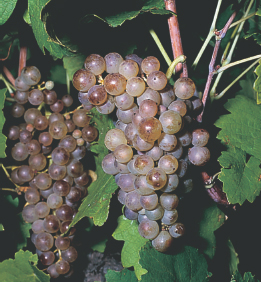
Marsanne can be a bit of a love-it-or-hate-it grape; but much depends on how well it is handled. Bland, gluey Marsanne is no one’s idea of a good time; but get the balance right and you’ll be rewarded with one of the most unusual whites of all, with weight and complexity and the ability to transform from a bright honeysuckle, fresh youth to a deep, waxy, quincy maturity.
CONSUMER INFORMATION
Synonyms & local names
Known in Savoie as Grosse Roussette and in Switzerland as Ermitage or Ermitage Blanc.
Best producers
FRANCE/Rhône Beaucastel, Belle, Chapoutier, Chave, Coursodon, Cuilleron, Delas, Entrefaux, Florentin, Gaillard, Gripa, Grippat, Guigal, Jaboulet, Lionnet, l’Oratoire St-Martin, Perret, Pradelle, Remizières, Marcel Richaud, Sorrel, Cave de Tain, Trollat, Villard; Provence Clos Ste-Magdelaine, la Ferme Blanche, Pibarnon, Trévallon; Languedoc-Roussillon Alquier, Estanilles, Fabas Augustin, Jau, Lascaux, Pech-Latt.
SWITZERLAND Gilliard, Caves Imesch.
ITALY Bertelli, Casòn Hirschprunn.
SPAIN Celler Mas Gil.
USA/California Cline, Qupé, Tablas Creek; Washington State McCrea Cellars; Virginia Horton.
AUSTRALIA All Saints, Cranswick, D’Arenberg, Marribrook, Mitchelton, Tahbilk, Turkey Flat.
CHILE Errázuriz.
RECOMMENDED WINES TO TRY
Eleven northern Rhône white wines
Chapoutier Ermitage Cuvée de l’Orée
Chave Hermitage Vin de Paille
Pierre Coursodon St-Joseph Blanc le Paradis St-Pierre
Yves Cuilleron St-Joseph Blanc le Lombard
Delas Hermitage Blanc Marquise de la Tourette
Pierre Gaillard St-Joseph Blanc
Grippat Hermitage Blanc
Guigal Hermitage Blanc
Jaboulet Crozes-Hermitage Blanc la Mule Blanche
Sorrel Hermitage Blanc les Rocoules
Cave de Tain Hermitage Au Coeur des Siècles
Ten other French wines containing Marsanne
Domaine Alquier Roussanne/Marsanne
Ch. de Beaucastel Côtes du Rhône Blanc Coudoulet de Beaucastel
Clos Ste-Magdelaine Cassis
Ch. des Estanilles Coteaux du Languedoc Blanc
Ch. Fabas Augustin Minervois (Blanc)
Ch. de Jau Côtes du Roussillon Blanc de Blancs
Ch. de Lascaux Coteaux du Languedoc Pierres d’Argent
Domaine de l’Oratoire St-Martin Côtes du Rhône-Villages Blanc Haut-Coustias
Ch. de Pibarnon Bandol (Blanc)
Domaine de Trévallon Vin de Pays des Bouches-du-Rhône (Blanc)
Eight other Marsanne wines
Bertelli St-Marsan Bianco (Italy)
Casòn Hirschsprunn Contest (Italy)
Cline Cellars Marsanne-Roussanne (California)
Robert Gilliard Ermitage Réserve Choucas (Switzerland)
Caves Imesch Ermitage du Valais (Switzerland)
Celler Mas Gil Clos d’Agon Blanco (Spain)
Tahbilk Marsanne (Australia)
Turkey Flat Butcher’s Block White (Australia)

MERLOT
Merlot: from Grape to Glass
Geography and History here; Viticulture and Vinification here; Merlot around the World here; Enjoying Merlot here
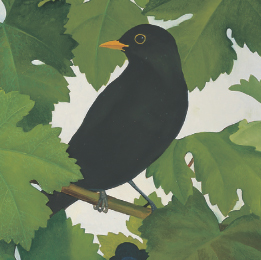
Merlot’s name is said to be derived from merle, French for blackbird, which apparently loves its sweet, early-ripening fruit. Being planted like fury around the world, Merlot has done particularly well in the Napa Valley where the California poppy, as orange as a blackbird’s bill, grows wild.
So what reason would you give for Merlot becoming the world’s most popular red wine style? Would it be because the great Bordeaux reds of St-Emilion and Pomerol, the lush and heady and insanely expensive wines like Pétrus, Le Pin and Pavie are all based on Merlot? Sounds like a good reason. Or would it be because you can make large amounts of red wine out of Merlot which has no hard edges and very little evident flavour so that millions of people who don’t really like red wine at all, can somehow swallow this innocuous brew? Well, I hate to say it, but the second reason is why you’ll find it planted anywhere on the planet where a red grape can ripen.
It all began in 1991, when the prime time USA television show ‘60 Minutes’ covered a phenomenon they titled ‘The French Paradox’, based on the fact that the French eat large amounts of fat and yet have far less heart disease than nations who eat less. So what’s the secret? Supposedly, red wine. Knock back a couple of glasses of red every day and your ticker will glide faultlessly towards a healthy, vigorous old age.
Ever since Prohibition ended in 1933, American wine producers have been trying to turn the USA into a nation of wine drinkers – with limited success. But there’s nothing the Americans like better than being told you can live forever and if the man on the telly tells you you must knock back a couple of glasses of red a day – suddenly millions of Americans who have never drunk wine before are queuing up for their daily dose. American consumption of red wine quadrupled within the year. But these were novice wine drinkers. They didn’t necessarily like the flavour of red wine very much – and what they needed was something that was soft, easy and mild, and yet discernibly, undeniably red. One wine fitted the bill perfectly – California Merlot. It was even easy to pronounce. Suddenly Merlot’s perceived weaknesses were its unique selling point. California couldn’t plant the stuff fast enough, and sold out every vintage, making oceans of, frankly, forgettable but glugglable mellow red. Yet Merlot’s background is a lot more serious than this.
Merlot has traditionally been Bordeaux’s ‘other’ red grape, overshadowed by Cabernet Sauvignon, the dark aristocratic grape that dominates Medoc and Pessac-Léognan. Merlot was planted here too, but simply to soften the Cabernet. Only in St-Émilion and Pomerol was Merlot dominant. When American critics began to swoon over these wines in the 1980s, realizing that their ability to mix the fabled reputation of Bordeaux with a wine you could glug back at only a couple of years old would play brilliantly back home in the States, Merlot finally stepped out from Cabernet’s shadow.
Merlot’s sudden dash to stardom wasn’t lost on the less prestigious Bordeaux regions which always had trouble ripening their Cabernet Sauvignon. As the worldwide rush for red swept through Bordeaux, resulting in a current planting ratio of 88 per cent red to 12 per cent white in a region that was traditionally 50-50 – Merlot was the favoured variety because it didn’t mind damp, clay soils, it didn’t need a massive amount of sun, and it usually gave you a nice, plump bank manager-pleasing crop of something reasonably soft, if a little bit earthy. Much more attractive than thin stalky Cabernet. Bordeaux is now 64 per cent Merlot.
If Bordeaux went mad for Merlot, so did nearly everywhere else. France’s Languedoc and northern Italy have tons of it, mostly making wines that risk being a byword for nothing very much. Spain has a lot, though Merlot is hardly suited to the warm conditions. More encouragingly, it’s really taken off in Eastern Europe – Bulgaria, Romania, Moldova, Croatia all make large amounts of eminently enjoyable Merlot: easy-going red. It’s become a star grape in Chile and New Zealand, Washington State and British Columbia – and California: Napa and Sonoma make some pretty serious stuff. Where else? Oh, pretty much everywhere, really: New York, Brazil, Malta, Bolivia – I’m not joking. Australia has a lot, but has never really got it to work. And the elephant in the room? China. Already the fourth biggest plantings in the world. What will it taste like? We’ll soon know.
GEOGRAPHY AND HISTORY
At first glance the map showing where Merlot is found in the world might look remarkably similar to that of Cabernet Sauvignon. And why not? After all, in Bordeaux they collaborate to excellent effect, and many a Cabernet Sauvignon grower in South Africa, California, Australia and Eastern Europe has found that the traditional Bordeaux blend seems to work pretty well.
And yet there are differences. Merlot is saved from a role of eternal bridesmaid to Cabernet Sauvignon by two factors: its liking for cooler climates than Cabernet Sauvignon, and its ability to produce soft, rich-textured, low-acid, low-tannin red. The latter appeals to many red wine drinkers who don’t care for the rasp of tannin and acidity, but love the appetizing black cherry and chocolate and fruitcake flavours with which Merlot is packed. The former appeals to winemakers in climates that are warmer than typical Pinot Noir conditions (i.e. barely warm enough to ripen any red varieties), but just too cool for Cabernet Sauvignon. In these sites, where Cabernet Sauvignon will turn out too green and raw for fun, Merlot can ripen to soft, silky sweetness. So while the maps of the two varieties might look much the same, they disguise differences of emphasis. Above all, Merlot inhabits the cool fringes and the damper soils where growers look at Cabernet Sauvignon every year and wonder whether to persevere with it. Here Merlot excels.

Merlot likes warmer conditions too, but doesn’t prosper with too much heat because it actually ripens too fast and never develops its lovely plummy personality. This would explain why a lot of budget-priced Californian and Australian Merlot lacks guts. And it needs a firm hand in the vineyard, since it will overcrop like mad if you let it. If you’ve ever stared in disappointment at a glass of pale, flavourless north Italian Merlot, you’re looking at the results of a massively overcropped vineyard. It is far from being as forgiving of unskilful viticulture as Cabernet Sauvignon. Merlot may have wide appeal, but it doesn’t work as an all-purpose grape for lackadaisical producers.
HISTORICAL BACKGROUND
Merlot seems to be native to Bordeaux, but it gets scant attention from commentators on the region until 1784, when a local official called Faurveau named it as one of the best vines in the Libournais region on the Right Bank of the Dordogne; by the mid-19th century it was being planted in the Médoc on the Left Bank of the Gironde for the sake of its ability to blend well with Cabernet Sauvignon and Malbec.
Where did it spring from? It’s part of a local family of grapes which seem to have been interbreeding for centuries. Merlot’s father is Cabernet Franc (which probably originated in the Basque country) and its mother is a terminally obscure little number called Magdeleine Noire des Charentes discovered in an abandoned vineyard near St-Malo in Brittany. I say ‘abandoned’ – St-Malo hasn’t been a wine area for hundreds of years; it’s famous for cider! Honestly, you marvel at the persistence – and the luck – of those scientists who spend their lives trying to unravel the rampant promiscuity of ancient grape varieties. Magdeleine Noire had various names, usually referring to its early ripening, which was around the Feast of Ste Magdelaine on 22 July. So at least we can see where Merlot’s early ripening habits come from. Cabernet Franc and Carmenère are the two vines with which Merlot is most easily confused, and in Chile the confusion was only sorted out in 1997.
Merlot seems to have been noted in Italy at much the same time as it was moving into the Médoc. It is first recorded in the Veneto (as Bordò) in 1855, and in the Swiss canton of Ticino between 1905 and 1910. However, it was brought to Switzerland from Bordeaux, not from Italy.

The limestone côte or hillside on the edge of the town of St-Émilion is one of the best spots for Merlot in the whole of Bordeaux. Merlot is often thought of as a soft, mild wine, but from these steeply sloping vineyards the wines can rival those of the Haut-Médoc on the other side of the Gironde for complexity and longevity, and yet they do retain a delightful suppleness from youth through to maturity.
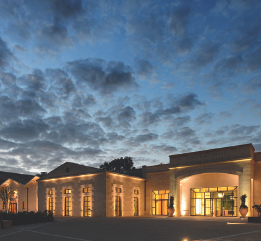
The glitzy new château building at Château Pavie shows the flamboyant self-confidence of Bordeaux’s modern Right Bank. Pavie’s Merlot-dominated, rip-roaring wines create controversy with every vintage.
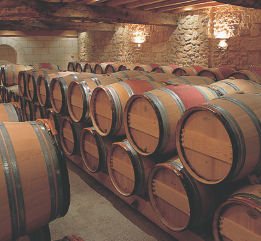
The Clos de l’Oratoire barrel chai in St-Émilion. Merlot comprises about 80% of the blend here, the balance being Cabernet Franc, and the result is an impressively juicy, fleshy, robust wine.
VITICULTURE AND VINIFICATION
It is unusual for a grape to become so fashionable without there being any real consensus about how it should be grown and made. If there is a benchmark style, it is presumably that of Pomerol and St-Émilion, but in much of Bordeaux Merlot has long been as much of an insurance policy as a grape appreciated for its own distinct virtues. Its failings as a varietal wine include poor flavour profile: it can be a doughnut wine, with a hole in the middle of the palate.
Clonal variation is important, and there is undoubtedly more work to be done here. It is possible that only 60 or 70 per cent of Merlot’s potential has so far been realized, as anyone who has suffered a lean, mean Merlot vin de pays will testify.
Climate
The climate in the Libournais – the Right Bank of the Dordogne in Bordeaux, where Merlot is concentrated – is actually warmer than that of the Médoc across the Gironde on the Left Bank. The Libournais has less rain and warmer days, but more chance of frost and colder nights. One might think that such conditions would favour Cabernet Sauvignon, with its greater resistance to cold, and greater need of warmth for ripening, and no doubt the French wine authorities reasoned the same way when they insisted on Cabernet Sauvignon being planted on the lower slopes here in the 1970s. But warmer weather can’t compensate for colder soil – at least, not in Bordeaux – and the soils in the Libournais are mostly cold, damp clay. Merlot’s early budding, early ripening habit means that it can cope with cold soils and still ripen, though early budding increases the risk of frost damage. It is also sadly subject to rot because of its thin skin: the vintages of 1963, 1965 and 1968 were even more rot-ridden in St-Émilion and Pomerol than elsewhere in Bordeaux, and if autumn rains threaten, growers fearfully eye their Merlot crop since the grapes could begin to split and rot within a couple of days. Its thin skin also makes it dangerously susceptible to rot in humid climates.
But at least it buds and ripens up to two weeks earlier than Cabernet Sauvignon, which makes it a better bet in most parts of New Zealand; the same is true of Austria, Germany, northern Italy, Switzerland, New York State and Canada.
Though its reputation is for soft, plummy flavours, it can all too easily exhibit a herbaceous green streak. A touch of herbaceous greenness was long thought of as part of the St-Émilion style, until the present vogue for lush, ultra-ripe wines took over; Washington State, New Zealand, Switzerland and the Veneto in northern Italy have all had problems with greenness, which can often be overcome by better canopy management. Even Australian examples are far from being perfectly ripe all the time. Much Californian Merlot avoids any risk of underripeness by being planted in the hot Central Valley – but the downside is that the wines frequently taste baked and lacking in freshness.
Soil
According to Galet (1998), Merlot likes cool soils that retain their humidity in summer; in dry soils, says Galet, the grapes don’t fill out properly. Jean-Claude Berrouet, the previous technical director of Château Pétrus in Pomerol (his son Olivier has now taken over), believes that, on the contrary, water stress is more important than soil temperature for Merlot, and that it performs far better on well-drained soil than at the foot of a slope. Well, they’re both experts. Take your pick. Château Pétrus itself is located on a tiny blister of clay that bulges through the topsoil of ferruginous sand and gravel, and that imparts more than usual structure to the wine; it is clay and iron that give the wines of Pomerol the backbone that most Merlots lack – helped, usually, by a little Cabernet Franc for perfume and acidity. The percentage of clay in some Pomerol vineyards is as high as 60 per cent.
In the sand, clay–limestone (argilo-calcaire) and gravel-over-limestone soils of St-Émilion, too, the traditional blend is with Cabernet Franc. Styles vary with the terroir: sandier soils give looser-knit wines; clay gives more substance, limestone more elegance and perfume.
Clones – and confusion
In much of the New World, clone and climate currently make more difference to style than soil type. Stephan von Neipperg of Château Canon-la-Gaffelière in St-Émilion believes there are only two or three really good clones of Merlot, though many more than that are available. Some give structure; others have larger berries, larger yields and give soft, early-drinking wine. The right choice of rootstock can also help to control the vigour of this naturally vigorous vine and help keep its cropping under control.
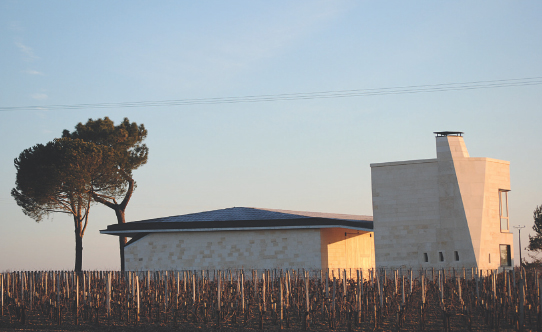
I find it difficult to believe this impressive, elegant building is now Le Pin. When I first visited, you literally had to kick the chickens out of the cobwebby garage where the wine was made. But in 2011 this beauty was built. The vineyard is bigger than on my first visit – all of 2.5ha (6 acres) of surprisingly pebbly clay soil where the Merlot ripens particularly fast. And the pine trees? They’re the same.
Some plantings in California, Australia and Austria are strongly suspected of being Cabernet Franc rather than Merlot: in the Napa Valley, Duckhorn’s best block turned out to be Cabernet Franc; and Christian Moueix of Bordeaux confirms that as long ago as the early 1980s he’d thought that some of the Merlot in California was Cabernet Franc. One grower even reckons he can’t tell the difference between the two varieties until their third year. In Chile there’s been confusion with Carmenère since the 19th century.
Yields
Overcropped Merlot produces a thin, stringy, weedy wine, light in colour and vegetal in flavour. Conversely, some vins de garage in St-Émilion may have yields of as low as 26hl/ha; normal Bordeaux yields reach 60hl/ha, and are generally higher than those of Cabernet Sauvignon unless reduced by the vine’s tendency to poor fruit set. In the Midi yields may rise to 80hl/ha; over 100hl/ha quality falls rapidly. In New Zealand yields are between 8–10 tonnes/ha; in California’s Napa Valley, between 4–4.5 tons/acre; in Argentina, where yields are generally high, 12 tonnes/ha is considered low, and 18 tonnes/ha is not unusual.
Michel Rolland, worldwide consultant winemaker, Merlot specialist, and advocate of ultra-ripe, lush wines, believes that yields of the grape throughout the world are too high. ‘It doesn’t like too much sun, and it is difficult to make very expressive, complex Merlot if the climate is too hot. But if you reduce the yield you can improve quality’.
When to pick
This is one of the main focuses of debate between winemakers around the world. A characteristic of Merlot is that once ripe, it must be picked quickly. It will rush from ripeness to overripeness in a matter of days, sometimes even a matter or hours; in this it is less accommodating than Cabernet Sauvignon.
There are two schools of thought about when to pick. Michel Rolland favours late picking, and welcomes fruit with an element of overripeness. ‘The picking date is vital. Get that wrong and everything else will be wrong; you will lose 80 per cent of the potential. Many properties in Bordeaux pick between a few days and a week too early. But the crop level is the main factor. If the crop is too big, you can wait until Christmas, and it won’t ripen. The ideal crop is 40–50hl/ha. At that level you can successfully delay picking for eight to 10 days more. And if you remove some of the leaves, there is less risk of rot, so you can wait.’

Chris Camarda makes some of Washington State’s most successful Bordeaux blends under his Andrew Will label. The relentless sunshine in the Washington vineyards would make you think it would be too hot for the cool-loving Merlot – but check out that heavy coat Chris is wearing as he considers his Merlot harvest. It may be sunny, but it isn’t hot at vintage time in the near-desert conditions of eastern Washington.
The other side of the Merlot coin, that which advocates traditional elegance, finesse and potential for longevity above richness and lushness, is represented by Christian Moueix of JP Moueix who points out that overripeness means loss of acidity. ‘We want light, elegant wines for drinking, not body-building wines for winning tastings.’
WINEMAKING: THE GREAT DEBATE
At the higher quality levels, Merlot is a wine with an identity crisis. It needs elegance, complexity, fine tannins and silky texture – but can winemakers best achieve that ideal by treating the grape like Pinot Noir, or by treating it like Cabernet Sauvignon?
The issues revolve around extraction and oak. Should Merlot be heavily extracted and tannic, and aged in a high proportion of new oak? Or should it be lighter, more delicate? Fashion is changing. Until a few years ago, it dictated heavy extraction and tannin, soupy textures and high alcohol, but now lighter reds are finding favour again. Napa still focuses on weight, and St-Emilion is divided, but the rest of the world is returning to elegance, recognizing that not all Merlot is naturally as structured as Pétrus, or as concentrated as Valandraud; and that if it’s not, it cannot be made so by long aging in new oak.
Consultant winemaker Michel Rolland recommends extracting the phenols (colour and flavour compounds) at the beginning of the fermentation process with a shorter, faster maceration with frequent pumping over. Researchers in Bordeaux are trying to build up a better picture of Merlot by analyzing the structure of its tannins and phenolic compounds. By compiling a dossier of the aromas and flavours most frequently found in the wine, they hope to arrive at a clearer understanding of its potential.
I have to say, some of the most beautiful St-Émilions I’ve enjoyed have been made in the lighter style, because Merlot gains a gorgeous soft butter and toffee smoothness with age if you don’t try to force more weight and colour out of the grape than it naturally possesses. However, if you’re after something altogether more powerful and lush, Michel Rolland clearly has the answer in Bordeaux and around the world.
MERLOT AROUND THE WORLD
How many great varietal Merlot wines are there in the world? A lot depends on what you mean by ‘great’. If you mean dark, muscle-bound bruisers built for the long haul, or slow-developing intellectual beauties that take a generation to reveal their treasures, then the answer is – there aren’t many. But if greatness can be measured in a hedonistic way, if succulence, sensuous fruit and a perfume that fills your head with sweet ripeness could be called great, there’d be quite a few. High alcohol, dark colour, low tannins and acidity and a cauldron-full of nice, ripe fruit is what Merlot is best at. Pleasure, in other words. But are they great? Look. I’m too thirsty to argue. Hand me the bottle. I’ll drink, you fret.
Bordeaux
Merlot has quietly been staging a takeover in Bordeaux, spurred on by the worldwide demand for softer, earlier-drinking wine. It now constitutes some 56 per cent of plantings overall – but that figure disguises its minority role in the better parts of the Médoc and Graves, where it makes up an average of 25 per cent of the blend, and its dominance in St-Émilion and Pomerol. In the outlying areas of Bordeaux – the areas collectively known as the Côtes – it is very often the majority grape.
In St-Émilion it accounts for more than 60 per cent of plantings; in Pomerol about 80 per cent. In both these appellations it is commonly blended with some Cabernet Franc; there is a little Cabernet Sauvignon in St-Émilion, and some, though less, in Pomerol.
The standard Bordeaux blend of Merlot, Cabernet Sauvignon and Cabernet Franc, with or without the addition of Malbec or Petit Verdot, has a lot to recommend it. Merlot adds softness and fleshiness, Cabernet Franc adds perfume and Cabernet Sauvignon adds the all-important structure. Merlot on its own is generally less long-lived, although St-Émilion and Pomerol can be tight and closed when young, and like Médoc and Graves reds, can need some years to open. It is the crasse de fer – the iron-rich clay subsoil – that imparts structure to Pomerol’s Merlot; the very structure that can be so wanting elsewhere. Château Pétrus is made from 95 to 100 per cent Merlot in most years; Le Pin and Gazin are 90 per cent Merlot. But at some Pomerol châteaux, for example Lafleur with its particularly gravelly, mineral-rich soil, the amount of Merlot in the vineyards goes down to 50 per cent with old Cabernet Franc taking up the rest.
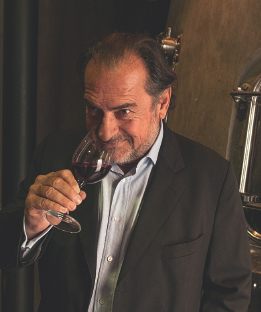
The heart and the muddy boots of Michel Rolland are most at home in the clay-clogged vineyards of Bordeaux’s Right Bank where he grew up, but much of his year is spent travelling since he is the most successful and famous wine consultant in the world, with rich, mouthfilling Merlot reds very much a calling card.
In St-Émilion the vin de garage phenomenon – wines made on so small a scale that one could envisage making them in one’s garage – was fuelled by Merlot. Yields of 30hl/ha or less are the rule here, from tiny vineyards (Gracia is 3ha/7.4 acres; Clos Nardian is 1.52ha/3.75 acres; La Mondotte is a positive giant at 4.3ha/10.6 acres). Picking may be by individual berry; viticulture may be organic or biodynamic; oak will almost certainly be 100 per cent new, and may even be 150 per cent new, this remarkable figure being achieved by putting the wine into 100 per cent new oak to begin with, and then racking it into more new oak.
These wines have enormous and seductive richness and a few have joined the mainstream; otherwise the fashion has peaked amid question marks over longevity.
Vins de garage could be made anywhere: they’re the equivalent of a bigger estate creaming off the very best vat, or couple of vats; something that bigger estates are usually loath to do because of its detrimental effect on the rest of the blend. However, the principle has been accepted across the globe by winemakers and growers (not necessarily of Merlot) who want to make a fast impact.
Other French Merlots
Merlot has now overtaken Carignan and Grenache as France’s most planted grape variety. It is a recommended variety for appellation contrôlée wines and vins de pays in Provence, the Languedoc, the Southwest, the Ardèche, the Charente, the Corrèze, the Drôme, Isère, the Loire, Savoie and Vienne, though in the South it is a fairly recent arrival, having only been recommended there since 1966. In the Southwest it is a traditional part of many appellation contrôlée blends. In the Languedoc most Merlot goes into vins de pays, both varietals and blends. Most are soft, fruity wines for early drinking.
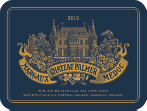
Château Palmer
Palmer often contains 40% Merlot, high for a top Haut-Médoc wine. The result is classic Margaux perfume married with seductive softness of texture.

Château Pétrus
If anyone doubts that Merlot can age, show them a mature Pétrus: nowadays it’s 100% Merlot. But it does come from a unique, Merlot-friendly terroir.
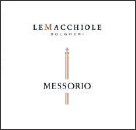
Le Macchiole
You’d expect Bolgheri on the Tuscan coast to be too warm for the cool-loving Merlot, but some of Italy’s most successful Merlots are from here.
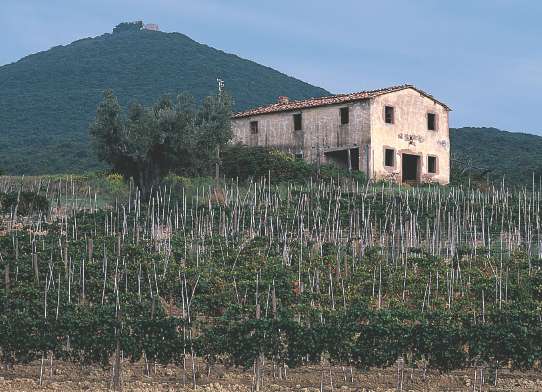
Merlot vineyard at Tenuta dell’ Ornellaia owned by Marchese Lodovico Antinori at Bolgheri. so near the sea that locals in this part of Tuscany used to reckon that the wines from round here tasted of salt. That was before the super-Tuscan brigade got cracking. This Merlot, called Masseto, is one of the world’s best.
Italy
Merlot fever has hit Italy in a big way: in the mid-1990s it was Italy’s fifth most planted grape, but current plantings have pushed it to fourth, even ahead of Barbera. In the northeast it has traditionally been regarded as a high-volume producer, and clones were chosen primarily for their yield. It wasn’t given the best sites, and the wine was easy-drinking stuff, not intended to be taken seriously. This is true of the Veneto, Trentino and Alto Adige, though Merlot from Alto Adige is benefiting from better clones and more attention to site. The best wines come from Friuli, Tuscany and Umbria, and they are very good indeed. Some is varietal; a lot is blended with Sangiovese, and is valued for adding richness without dominating the blend in the way that Cabernet Sauvignon does. In Tuscany it is increasingly being planted in the warmer Maremma, and alcohol levels can easily reach 14 per cent, though acidity doesn’t seem to suffer; perhaps it is added. In more northerly parts of Tuscany, Merlot’s low acidity is often seen as a useful softener for the more acidic local grapes.
Rest of Europe
Almost all of Europe grows Merlot. In Switzerland’s southern canton of Ticino, Merlot accounts for 85 per cent of production. It needs warm sites here, and vineyards no higher than 450m (1480ft), to produce wines of any substance; the best are well structured, and have some oak aging. Some Merlot here is made ‘white’ – pale pink, in other words.
Elsewhere it is concentrated in the cooler areas: it has made little impact in Iberia, though it has experimental status in Rioja. (There are moves to get practically everything on to the list of approved grapes in Rioja.) There is some in Slovenia, Croatia, Serbia & Montenegro, some in Austria and Germany, and more in Romania, Bulgaria, Hungary and Moldova; much is blended with Cabernet Sauvignon.
California
Experience is telling here. More and more Merlot is being planted, and once the current plantings come on stream, California will be the world’s fourth largest producer of Merlot, after Bordeaux, Italy and the Languedoc. Post-phylloxera plantings are on more suitable rootstocks than before, and much has been learnt about trellising: Merlot grows particularly long shoots, which need to be tied, often to an extra moveable wire. Site selection is also better. Cooler spots that wouldn’t suit Cabernet Sauvignon are being chosen – Carneros, for example, gives good bright flavours to Merlot, though Cabernet doesn’t ripen well there. Parts of Napa, like Oakville and Stags Leap, give richer wines, and hillside sites like Howell Mountain, where Cabernet is structured and long-lived, impart similar qualities to Merlot.
These, and other parts of California like Mendocino, Alexander Valley, Dry Creek Valley, Sonoma Valley and the warmer areas of Monterey, are where the serious Merlots are coming from. Some are huge wines, so massive that they make Pomerols look feeble. Extreme ripeness – the US market recoils at any hint of herbaceousness – is obtained by leaving the grapes on the vines for as long as possible, and alcohol levels are high. But those who want light Merlot (or perhaps Merlot lite) are also being catered for. A lot is being planted in the hot Central Valley for high-volume, low-intensity wine. And by low, I mean low.
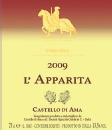
Castello di Ama
Castello di Ama already makes one of the most sensuous and approachable of Chianti Classico wines. This Merlot is in the same delicious vein.
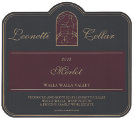
Leonetti Cellar
This Merlot brought attention to Walla Walla, an area in Washington State that is now making some of the Pacific Northwest’s most impressive reds.

Merryvale Vineyards
Merryvale is based near St Helena in central Napa, but the grapes for this Merlot come from the cooler vineyards down toward Carneros and San Pablo Bay.
North America
Cabernet Sauvignon is the leading red grape in Washington State with almost 10,293 acres/4165ha planted, with Merlot following behind in second place with 8235 acres/3332ha of vines in 2011. Merlot gives richer flavours here than Cabernet Sauvignon, and while the wines are riper and plummier than they were, they still tend to be drier than Californian examples, with more freshness and often more personality. Site selection, control of irrigation and later picking have all helped. Cold eastern Washington winters remain a problem for the variety. Classic Bordeaux blends are also successful, and at the moment seem the best way of using Merlot here. Oregon seems generally too cool, and fruit set is poor. New York State is more promising: Long Island’s long growing season means that Merlot ripens reliably here, and Merlot is now the most planted red variety in Virginia. Merlot is important in Canada, and is British Columbia’s most planted variety, as Canadians strive to make grand reds.
South America
The term ‘Chilean Merlot’ used to be somewhere between a euphemism and a nickname, but Chile’s Merlot vineyards are now well sorted out. The reason was that much Chilean Merlot was a field blend of Merlot and Carmenère: the original cuttings were taken to Chile from Bordeaux before phylloxera and propagated as Merlot ever since. Nobody had thought to question the vines’ identity until it was realized in the early 1990s that a lot of Chilean Sauvignon Blanc was in fact the less aromatic Sauvignonasse, or Sauvignon Vert. French ampelographers were then invited to look over the vineyards, and came up with the unsettling discovery that a great deal of the ‘Merlot’ was not Merlot at all.
The two grapes are now separated in new plantings, but it will be years – decades, even – before the existing mixed plantings are superseded. New varietal Merlots on the market are now genuine, but some of the best still boast the extra flavours of Carmenère. According to the latest official figures (2011), Chile has 11,432ha (28,250 acres) of Merlot and 10,040ha (24,810 acres) of Carmenère, respectively the third and fifth most planted varieties in the country. The problem is not that Carmenère is an inferior grape – indeed, it can have greater quality in Chile than Merlot – but that they ripen at different times. Merlot ripens some three weeks before Carmenère, so unless you have each vine marked in the vineyard and can pick the two varieties separately, you will either end up with ripe Merlot and underripe Carmenère, or overripe Merlot and ripe Carmenère, but whereas over-ripe Merlot spoils a blend by being too jammy, under-ripe Carmenère adds a fascinating and refreshing green peppery, leafy, savoury character if mixed with ripe Merlot, which is a uniquely Chilean combination.
Site selection is fashionable now in Chile, and Merlot often seems to be less interesting than Pinot Noir and Syrah to those producers planting in the cooler regions of the far north and south (the north counts as cool when it’s coastal and is cooled by sea breezes; it’s actually cactus country). The Central Valley regions are still Merlot’s stronghold and plantings outside the regions of Maipo, Cachapoal, Colchagua, Maule and Curicó are small or non-existent.

Merlot in Chile: a tale of two vines
‘We were the origin of the discovery that a lot of Chilean Merlot is actually Carmenère,’ say Paul Pontallier and Bruno Prats. These leading Bordeaux winemakers (Pontallier makes the wine at Château Margaux, and Prats used to own Cos d’Estournel) joined forces in the late 1980s to make wine near Santiago in the Maipo Valley – the estate, now called Viña Aquitania, is located at 700–800m (2300–2625ft).
They bought two batches of Merlot vines to plant, and soon realized that if one was Merlot, the other had to be something else. An ampelographer friend from France eventually identified the mystery vine as Carmenère. ‘The latter blends well into Chilean reds,’ says Pontallier, because ‘Merlot doesn’t behave in Chile as it does in Bordeaux: it is harsher than in Bordeaux, whereas Cabernet Sauvignon is softer here. So the classic Bordeaux blend may not be the best thing for Chile.’
The differences between the varieties seem to be glaringly obvious if you look at this post-harvest vineyard scene at Casa Lapostolle’s Clos Apalta in the Colchagua Valley. Look at the different colours of the vine leaves – the green ones are the late-ripening Cabernet Sauvignon, the red ones are Carmenere whose name refers to the redness of the leaves and is derived from an old French word for ‘red’ – carmine. The yellow leaves are Merlot, so how did they ever mix up Carmenère and Merlot?
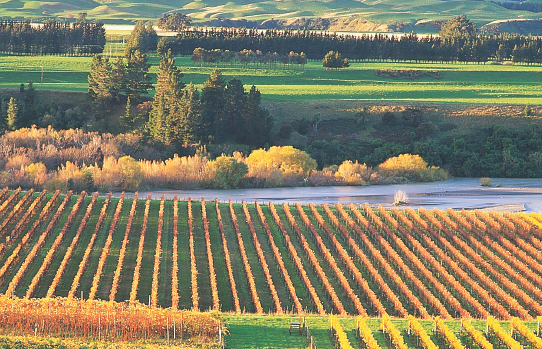
Hawkes Bay is one of New Zealand’s best regions for Merlot, the country’s most successful ‘Bordeaux’ red variety. It ripens earlier and more completely than the other varieties, and provides crucial richness and softness to blends in conditions that are still a little on the cool side for Cabernet Sauvignon.
Merlot in Argentina is less planted than Cabernet Sauvignon or Malbec, and can be trickier to grow. High yields may well be part of the problem. The best, most concentrated wines come from the Mendoza hills at around 1100m (3610ft) and above. Merlot is important in Uruguay for softening the toughness of Tannat, and there’s a fair bit in Brazil.
Australia
Recent years have seen a substantial increase in plantings and Merlot is now the third most popular red variety, but is still some way behind Shiraz and Cabernet. At the moment a lot is still blended with Cabernet Sauvignon, but the number of varietal wines is increasing as growers understand it better. Paul Lapsley, of Coldstream Hills in the Yarra Valley, believes that the clones in Australia are particularly poor. But new clones, released over the last few years, should help to improve flavours and the bane of the Merlot grower’s life, poor fruit set.
New Zealand
New Zealand growers like Merlot because, unlike Cabernet Sauvignon, it’s a reliable ripener in cool climates. Merlot is now the country’s fifth most planted grape, and second most popular red after Pinot Noir. It is at its best in the North Island, with the South Island being a little chilly even for Merlot. Over half the plantings are in Hawkes Bay, particularly in Gimblett Gravels and the Ngtarawa Triangle, where it produces dense, dark wines that dominate the local Bordeaux blends. Most of the rest is in Auckland and Marlborough: it may have a good future in cool-climate Marlborough, where Cabernet Sauvignon is a poor ripener. Blends are usually with the other Bordeaux varieties; some producers prefer a Cabernet Franc and Malbec blend.
South Africa
By 2013 Merlot accounted for just under 7 per cent of total plantings; Cabernet Sauvignon, by contrast, was top with 11 per cent. Since there was no Merlot planted in the country at all until the 1980s, that is a rapid increase – and expect plantings to continue to rise.
Two basic styles of Merlot are emerging in South Africa: the soft, juicy, easy-drinking version, and something altogether more impressive, powerful and potentially long-lived. One-third of the vines are planted in Stellenbosch, with a fair number also in Paarl, followed by Worcester and Malmesbury and cool-climate Constantia. New virus-free clones have helped its advance in recent years.
Asia
China has taken to Merlot in a big way as part of the classic red Bordeaux blend and may well have the largest Merlot plantings in the world after France by the time you read this – things are moving at lightning speed in Chinese

Bedell Cellars
Bedell make some of New York’s best reds on the sandy loam soils of Long Island’s North Fork. The elegant label shows their love of modern art. .
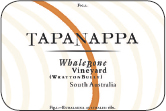
Tapanappa
Australia’s largest limestone area is South Australia’s Limestone Coast, with Wrattonbully at its heart. Tapanappa’s Whalebone Vineyard takes full advantage to produce soft but beautifully balanced red wines.

Craggy Range
Craggy Range make use of Merlot’s suitability for the warm Gimblett Gravels in New Zealand’s North Island to produce the rich, sensuous but powerful Sophia Merlot.
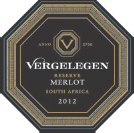
Vergelegen
Vergelegen’s Helderberg vineyards are cooled by strong southerly winds whipping in from False Bay, creating one of South Africa’s freshest, juiciest Merlots.
ENJOYING MERLOT
A great deal of the time, the question of how well Merlot ages is irrelevant. Most is made to be drunk young, even immediately: modern Merlot is the epitome of the red wine that gets all the bottle age it needs on the way back from the wine shop.
That is true both of simple, juicy Merlots and of big, concentrated ones. Merlot’s low tannins and low acidity make it a less than obvious wine for the cellar; the majority of Merlots not only don’t need bottle age, but often positively don’t want it. Age these wines and your patience will be rewarded by fading fruit and disintegrating structure.
Yet Merlot can age perfectly well as part of the Bordeaux blend – and not just because it has Cabernet Sauvignon to prop it up. St-Émilions and Pomerols, usually with little or no Cabernet Sauvignon in the blend, will easily last a decade, and the very best wines will see in their 30th birthday. Such wines need time to come round in the first place: from two or three years to longer, depending on the property and the vintage. Top Pomerols and St-Émilions with decades ahead of them are, however, exceptions even in Bordeaux: normally if a Bordeaux proprietor simply wants to make earlier-maturing wine, he plants more Merlot and doesn’t prune too hard.
The structure of Merlot from Bordeaux is also found in the best examples from California, Italy and elsewhere. There is no question about these balanced wines having the grip and backbone to last at least 10 years and perhaps more; the question is how many get the chance.
The taste of Merlot
This is where one has to raise the biggest question mark of all. Merlot tastes of all sorts of things: it can be anything you want, from light and juicy through Pinot Noir-silky to Cabernet-oaky and extracted. What should it taste like? That’s the very question that winemakers across the world are asking themselves. The lack of benchmarks means that there is no easy answer.
At its best it is succulent and silky, with velvety tannins: ‘smooth’ is the word that has cropped up most often in US market research. Fruit flavours can be of strawberry, raspberry, black cherry, blackcurrants, plums, damsons, figs or prunes. Fruitcake flavours are often found in Bordeaux. There can be spice, too: cinnamon and cloves and a touch of sandalwood, and truffles, tobacco, liquorice and toasted nuts. Warm climates can give stewed fruit flavours; cool ones, or overcropped vines, can give minty, lean, herbaceous notes. It can be gamy, chocolatey or coffeeish; yet for every Merlot that exhibits such appetizing complexity there are 20 examples that aim for no more than sweet juicy fruit and that seductively velvety texture.
To many a Californian winemaker, Merlot is about texture more than flavour. Texture is what they believe consumers notice most; and if Merlot mania is a fair guide, perhaps they’re right. But what they are often really saying is ‘lack of texture’: blandness, total smoothness, with a flavour as mild as can be, sometimes helped along with a little sugar. This is lowest common denominator ‘wine without tears’, and the phenomenon has been massively boosted by the claims of red wine being good for your heart. These claims meant that millions of people who didn’t like red wine, and never drank it, would drink it for their health – so long as it didn’t taste like red wine. Many of the budget-priced commercial American Merlots are merely trying to satisfy that market. Good luck to them. May it keep their customers healthy. I’ll stay healthy by drinking equal amounts of something slightly more interesting.
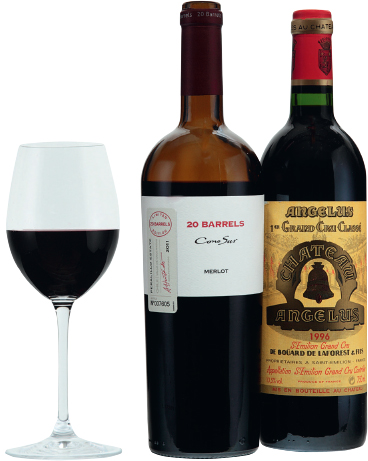
Merlot was the wine that made Chile famous, but Merlot wine wasn’t necessarily made from Merlot grapes in those days – the Merlot vineyards were co-planted with Carmenère, a rare Bordeaux grape at one time thought to be extinct. Indeed, Carmenère used to be called Merlot, while Merlot was called Merlot-Merlot! Nowadays, Carmenère sails under its own colours, as does Merlot, and 20 Barrels is a high quality special selection of true Merlot. Angelus has made one of the top St-Émilions for 20 years, and was promoted to the highest classification of 1er Grand Cru Classé (A) in 2012. Merlot is St-Émilion’s leading grape variety, and Angelus is usually 90% Merlot.
MATCHING MERLOT AND FOOD
Merlot makes soft, rounded, fruity wines that are easy to enjoy without food, but it is also a good choice with many kinds of food. Herby terrines and pâtés, pheasant, pigeon, duck, goose and spicier game dishes all blend well with Merlot. It can also partner subtly spiced curries and tandoori dishes. Meaty casseroles made with wine are excellent with top Pomerol châteaux; and the soft fruitiness of the wines is perfect for savoury foods with a hint of sweetness such as ham, savoury pancakes and gratins.
CONSUMER INFORMATION
Synonyms & local names
Also known as Merlot Noir, and in Hungary as Médoc Noir. Not to be confused with the unrelated Merlot Blanc, also found in Bordeaux but now almost extinct.
Best producers
FRANCE/Bordeaux/St-Émilion
Angélus, Ausone, Beau-Séjour Becot, Canon, Canon-la-Gaffelière, Clos Fourtet, Grand-Mayne, Magdelaine, Monbousquet, la Mondotte, Pavie. Pavie-Macquin, le Tertre-Roteboeuf, Troplong-Mondot, Valandraud; Bordeaux/Pomerol le Bon Pasteur, Certande-May, Clinet, la Conseillante, l’Église-Clinet, l’Evangile, la Fleur-Pétrus, Gazin, Hosanna, Latour-à-Pomerol, Petit-Village, Pétrus, le Pin, Trotanoy.
ITALY/Veneto Maculan; Friuli Borgo del Tiglio, Livio Felluga, Graf de la Tour, Russiz Superiore; Tuscany Castello di Ama, Avignonesi, Castelgiocondo, Ghizzano, Le Macchiole, Ornellaia, Petrolo, San Giusto a Rentennano, Tua Rita; Lazio Falesco; Sicily Planeta.
SPAIN Can Rafols dels Caus, Pago del Ama, Torres (Atrium).
SWITZERLAND Brivio, Huber, Werner Stucky, Tamborini, Vis, Zanini, Christian Zündel.
ISRAEL Barkan, Dalton, Margalit.
USA/California Arrowood, Beringer, Buccella, Chateau St Jean, Frog’s Leap, Matanzas Creek, Merryvale, Newton, Pahlmeyer, Rubissow, Shafer, Truchard; Washington State Andrew Will, Canoe Ridge, L’Ecole No 41, Leonetti, Long Shadows, Northstar, Quilceda Creek, Woodward Canyon; New York Bedell, Lenz, Macari, Paumanok, Shinn Estate, Wölffer.
CHILE Carmen, Casa Lapostolle, Viña Casablanca, Concha y Toro, Cono Sur, Errázuriz, Gillmore, Viña Leyda.
AUSTRALIA Brand’s, Coldstream Hills, Elderton, Fermoy Estate, Irvine, Parker Coonawarra Estate, Tapanappa, Tatachilla, Yalumba.
NEW ZEALAND Alluviale, Craggy Range, Esk Valley, Fromm, C J Pask, Sacred Hill, Trinity Hill, Villa Maria.
SOUTH AFRICA Bein, Eagles’ Nest, Laibach, Shannon, Steenberg, Thelema, Vergelegen.
RECOMMENDED WINES TO TRY
Ten classic Bordeaux red wines (as well as the Best producers, left)
Ch. Canon-de-Brem Canon-Fronsac
Ch. Canon-la-Gaffelière St-Émilion
Clos Fourtet St-Émilion
Ch. la Conseillante Pomerol
Ch. Gazin Pomerol
Ch. Grand-Mayne St-Émilion
Ch. Fontenil Fronsac
Ch. Latour-à-Pomerol Pomerol
Ch. Pavie-Macquin St-Émilion
Ch. Roc de Cambes Côtes de Bourg
Seven good-value Bordeaux reds
Ch. d’Aiguilhe Côtes de Castillon
Ch. Annereaux Lalande-de-Pomerol
Ch. Carsin Premières Côtes de Bordeaux Cuvée Noir
Ch. Pitray Castillon-Côtes de Bordeaux
Ch. la Prade Côtes de Francs
Ch. Segonzac Premières Côtes de Blaye
Ch. Siaurac Lalande-de-Pomerol
Six top Italian Merlots
Castello di Ama Vigna l’Apparita
Falesco Montiano
Livio Felluga Colli Orientali del Friuli Rosazzo Merlot Riserva Sossó
Le Macchiole Messorio
Tenuta dell’Ornellaia Masseto
Tua Rita Redigaffi
Seventeen New World Merlots
Andrew Will Ciel du Cheval Merlot (Washington State)
Bedell Merlot (New York)
Buccella Merlot (California)
Casa Lapostolle Cuvée Alexandre Merlot (Chile)
Cono Sur 20 Barrels (Chile)
Craggy Range Sophia (New Zealand)
Fermoy Estate Merlot (Australia)
Leonetti Merlot (Washington State)
Long Shadows Pedestal (Washington State)
Sacred Hill Brokenstone Merlot (New Zealand)
Shafer Merlot (California)
Steenberg Merlot (South Africa)
Tapanappa Whalebone Vineyard (Australia)
Thelema Merlot Reserve (South Africa)
Vergelegen Merlot (South Africa)
Wölffer Christian Cuvée (New York)
Woodward Canyon Merlot (Washington State)
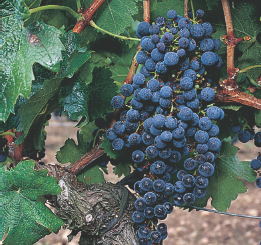
Merlot magic: put it on the shop shelf and watch it disappear. But Merlot’s commercial success goes hand in hand with an identity crisis. Merlot winemakers around the world can never agree about what the wine should taste like.
Maturity charts
Merlot, even premium Merlot from Napa or Sonoma, does not fit into a single pattern. Not all will age well in bottle, or be meant to.
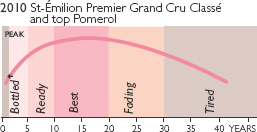
A classic Merlot year: the wines are lush and drinkable early, but their excellent structure ensures a long peak of pleasure and a gentle decline.
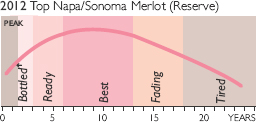
Reds ripened a little more slowly than usual and the grapes have excellent colour and concentration. The wines are rich, dark and supple with good acidity.
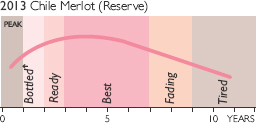
An unusually late vintage with bright flavours and fair concentration. The wines have excellent balance and varietal flavours for remarkable aging.
MERWAH 
Lebanese white grape best known for its role in the white wine of Château Musar. Owner Serge Hochar picks it in October, after the black grapes, at 11–15% potential alcohol. The untrained bushvines grow there on chalky gravel, give yields of 10–20hl/ha, and are ungrafted. The wine, which is a blend of Merwah and Obaideh (alias Chardonnay, perhaps) is complex, citrus and rich, with notes of hay and honeysuckle.
MISKET 
Bulgaria has three different Misket grapes: two are modern crosses, with Misket Cherven (Red Misket) by far the most important. The berries are pink rather than red, and it is not related to Muscat, though its white wines do have a simple mild, grapey perfume. Often blended with Dimiat. Best producer: (Bulgaria) Domaine Boyar.
MISSION 
If you were an early Spanish settler in the Americas, Mission was your everyday wine. It may seem odd that the Franciscan missionaries who brought it from Spain, didn’t take the trouble to bring something better. However, the southwest of Spain wasn’t exactly awash with decent black varieties – it was Palomino and Muscat country – and since Mission also had the traditional name of Palomina Negra, it may have been what passed for a local black grape in Andalucia. It turns out that Palomina Negra is actually Listán Prieto, a traditional variety from the centre of Spain. It isn’t there anymore, but it is grown on the Canary Islands and used to be called Moscatel Negro. And anyway vine exports from Spain to her colonies were banned, so the missionaries took whatever they could find.
Mission has the advantage of producing good crops in drought conditions, and because of the wine’s high resveratrol content it is said not to turn easily to vinegar. Both of these attributes could account for its survival in large quantities to the present day. In Chile, País is mostly grown in the south of the country, in Maule and Bío-Bío, where it may also be called Negra Peruana. The vines are bush trained and head pruned, and can yield 3000 kilos per hectare of grapes on the unirrigated hills, and 10 times that amount on the irrigated plains. There are some attempts to make serious País (Movi are important here), but while it can have some character, and soft plums and sweet chocolate fruit, it also keeps its red currant acidity and rustic bite.
In Argentina the lighter-skinned Criolla Chica is less commonly planted than Criolla Grande, and is of marginally higher quality.
Mission can still be found in California, but it is in decline. It would be nice to think that some will always be made, however: it is part of California’s history. And it was the first vinifera vine to reach the Americas. Best producers: (USA) Sobon, Story.
MOLETTE 
A neutral grape grown in the Savoie region of France, albeit in declining quantities, for sparkling wine. Altesse is often added to the blend to give more character. Best producer: (France) Varichon et Clerc.
MOLINARA 
A minority grape in the Valpolicella blend, Molinara is easy to drink and light in body but pale in colour and contributes little except acidity. It’s being gradually phased out. Best producer: (Italy) Quintarelli.
MONASTRELL 
The Spanish name for Mourvèdre – although, since the variety originated in Spain, it would be more accurate to say that Mourvèdre is the French name for Monastrell. Be that as it may, the grape is best known by its French name.
Quality in Spain has risen, having been pretty dismal for years. The use of new and better virus-free clones and some serious investigation into how best to handle Monastrell – when to pick it, how long to macerate it, how hot or cool to ferment it and when to bottle it – have paid off. The grape may be made as a varietal (perhaps with carbonic maceration for early drinking) or it may be blended with Tempranillo, Cabernet Sauvignon and Merlot. The wines of Yecla, where Monastrell is also the majority grape, are not yet up to those of Jumilla, but improvements continue to be made. Garnacha and Merlot are commonly blended in here. Best producers: (Spain) Agapito Rico, Castaño, Salvador Poveda, Primitivo Quilés, Señorio del Condestable.
MONDEUSE NOIRE 
Mondeuse was perfectly content with being a fairly obscure but, in my experience, really tart and spicy variety grown in the seductive savage wilds of Savoie’s mountain valleys. Sure, history implied it might have something to do with the Rhône’s Syrah grape, and indeed one of its names was Grosse Syrah (the big-berried Syrah), but people thought it more likely to be the same as Refosco dal Pedunculo Rosso, which made pretty clunky stuff round the Adriatic coastal curve of Italy’s Friuli and Slovenia. Certainly, the best Mondeuse reds do have an Italianate dark-scented, plum and blackberry fruit, spice, and a bitter cherry twist to the end. Well, it may taste Italian, but the grape is pretty solidly French, nothing to do with Refosco but a good deal to do with the mighty Syrah, perhaps its grandparent – which in grape-breeding terms is about as direct a family connection as a grandad is for you and me. And suddenly I do find myself thinking, Hmm, that spice, that blackberry, that ... well, it is quite like Syrah, after all. The tremendous worldwide popularity of Syrah has actually pushed Mondeuse just a little way into the limelight. Which is a good thing because it’s a really good grape we should hear more of, not just from its Savoie hidden sites. So far, there’s a tiny bit in California and Australia, but it would be nice to see that increase. Best producer: (France) Rocailles.
MONEMVASSIA 
Right, get ready. Monemvasia is the name of a Greek island in the Pelopponese. It’s also, we’re always told, the name which was corrupted into Malvasia, that famous sweet wine of the Middle Ages. Malvasia, you will be glad to hear, was a blend, and might have had nothing to do with the Malvasia grape. Nor is the Malvasia grape anything to do with the Monemvassia grape, although the latter probably originated in Monemvasia, and somewhere along the line gained an extra ‘s’.
On to happier matters: it’s one of the indigenous Greek vines currently enjoying a revival. It tends to be big and fat, and needs cool spots to keep its acidity. It can be made dry or sweet.
MONICA 
Monica is found in Sardinia, where it makes easy-to-drink everyday red, often with low tannin and low acidity. It is sometimes said to be the same as Mission and País and to have been taken to the Americas from Spain. Well, it certainly doesn’t taste like Mission to me, because it produces nice tart, cranberryish red wine to drink young. It is said to originate in Spain, although it is no longer found there, but Spain was at one time the overlord of Sardinia, so that’s presumably how it got there. Best producers: (Italy) Argiolas, Dolianova co-op, Santadi co-op, Trexenta co-op.
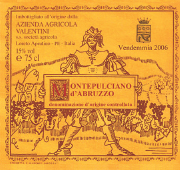
Valentini
Valentini make a big, powerful but sumptuous Montepulciano d’Abruzzo that benefits from several years’ aging.
MONTEPULCIANO 
Montepulciano the grape should not be confused with Vino Nobile di Montepulciano, which is a wine made from Sangiovese from an area around the town of Montepulciano in Tuscany. Montepulciano the grape is planted in central Italy (including Umbria and southern Tuscany) and the South. Its best known form is as Montepulciano d’Abruzzo, a round, plummy and weighty red with ripe tannins, good acidity and a low price tag. Its most useful contribution is probably as a dominant partner in Rosso Conero in the Marche.
It is also found blended into many reds in much of the southern half of Italy. It is late ripening and perhaps would not be successful north of Tuscany and Umbria. It ought to do well in California and Australia. There’s a little now in New Zealand. Best producers: (Italy) Boccadigabbia, Cornacchia, Garofoli, Illuminati, Masciarelli, Moroder, Nicodemi, Saladini Pilastri, Le Terrazze, Umani Ronchi, Valentini.
MORELLINO 
A synonym for Sangiovese in the Scansano region just inland of the Maremma in southern Tuscany. Morellino di Scansano is traditionally an appealingly fruity, cherryish, fairly light red with soft tannins; not as elegant or refined as the wines of the best Chianti estates, but with plenty of charm. However, some producers are now making more gutsy examples with sweet sour fruit and a herbal rasp.
Scansano has the advantage of an almost perfect mesoclimate for Sangiovese: it ripens easily here, and gives good concentration and structure providing yields are kept well under the legal maximum of 84hl/ha. True, the summers can be very hot and dry, but irrigation is a possibility for the future, which should solve any ripening problems induced by drought. Up to 15 per cent of other varieties are permitted under the DOC rules: Alicante and Spagna are the vines most commonly grown in the area, apart from Sangiovese; Merlot and Cabernet are also used for more international flavours. It’s now being pioneered in Australia. Best producers: (Italy) Erik Banti, Carletti, Cecchi, Il Macereto, Mazzei, Montellassi, Moris Farms, Poggio Argentaria, Le Pupille. See also Sangiovese here.
MORILLON 
Chardonnay goes by this name in Austria’s Steiermark region; Morillon was also a synonym for Chardonnay in much of France. Best producers: (Austria) Frühwirth, Neumeister, Polz, Erwin Sabathi, Manfred Tement.
MORIO-MUSKAT 
This over-scented German crossing is now mercifully on the decline. It used to be a standby of the Liebfraumilch industry, and was much grown in the Rheinhessen and Pfalz, where most Liebfraumilch originates. But demand for Liebfraumilch has slumped and much Morio-Muskat has been uprooted. It has a coarse aroma and flavour, as grapy as Muscat but without any of the latter’s elegance or lightness, and in fact does not seem to be related.
It is at its most aggressive, mixing musky perfume with grapefruit acidity, when picked slightly unripe, which it usually is because it needs good sites to ripen properly, and good sites are quite rightly reserved for the best grapes. It is subject to downy mildew, oidium and rot. Very small amounts are planted in South Africa, Japan and Canada. Don’t ask me why.
MORISTEL 
Light-coloured red grape found in Somontano, Spain. It is nothing to do with Morrastel, alias Graciano (see below), or Monastrell (see facing page). (Moristell, however, is a synonym for Graciano.) Its wines are aromatic, quite light, best unoaked and young, and often blended with Tempranillo and others. Best producers: (Spain) Borruel, Monclús, Pirineos.
MORRASTEL 
See Graciano (see here). Morrastel Bouchet is a separate grape, a 19th-century crossing of Graciano and Petit Bouschet bred in southern France.
MOSCATEL 
Iberian name for Muscat (see here). Wines labelled Moscatel are basic, sweet and golden and usually made from Muscat of Alexandria, or Moscatel de Alejandría; another name for this grape is Moscatel Romano. Muscat Blanc à Petits Grains is Moscatel de Grano Menudo. Moscatel de Malaga is believed to be a variety local to southern Spain. Best producers: (Spain) Gandía, López Hermanos, Ochoa.
MOSCATELLO 
Muscat Blanc à Petits Grains sometimes takes this name, sometimes Moscato, in Italy. See Muscat (here) for more details.
MOSCATO DI ALEXANDRIA 
Muscat of Alexandria in Italian. See Muscat (here) for more details.
MOSCATO BIANCO 
Italian name for Muscat Blanc à Petits Grains (see here). It is found pretty well all over Italy, and most regions have a tradition of lightly sweet, low-alcohol aromatic Moscato. The South and the islands produce sweeter, richer wines, and Trentino-Alto Adige makes good crisp, dry versions.
MOSCATO GIALLO 
A high-quality, golden-berried strain of Muscat found in northeastern Italy. See Muscat here for more details.
MOSCATO ROSA 
A high-quality pink-berried strain of Muscat found in north-eastern Italy. See Rosenmuskateller here for more details.
MOSCHOFILERO 
An aromatic Greek grape of rather good quality, used either as a varietal or as part of a blend. Its aroma is somewhere between that of Gewürztraminer and that of Muscat, but with better acidity than either. Its grapes are pink, and it is used either for white wine or for pink. It is genetically unstable, and has many versions, like Asprofilero, Xanthofilero and the black Mavrofilero, which may look, behave and taste different to each other. Best producer: (Greece) Cambas.
MOURISCO 
One of the lesser Portuguese grapes used in the Port blend and best suited to warm spots. The wine is light in colour and quite high in acidity; it is not one of the five favoured varieties planted in the newer vineyards of the Douro Valley. It crops up elsewhere in Portugal and Spain under a variety of names.
MOURVÈDRE
The French call it Mourvèdre, the Australians and Californians may call it Mataro, but the Spanish call it Monastrell, the grape from the monastery. Why? Well, the grape originated in Murviedro, a wine port near Valencia now called Sagunto, but called Morvedre in Catalan. The name suggests it was originally grown by monks. It was probably shipped to France from Murviedro, but also from the nearby coastal town of Mataró. Hopefully, this explains the different names. No one except the Spanish uses the Monastrell name and, frankly, Mourvedre is much more honoured away from its birthplace. In Spain it’s the key to many reds from south of Madrid, giving high alcohol and plentiful tannins but so far rarely bringing much distinction in its wake. The growers here are being persuaded to time their picking better and recently there has definitely been an improvement in fruit flavour, particularly in such DOs as Alicante, Jumilla, Valencia and Yecla, injecting much needed life into what had been a forgotten part of vinous Spain.
Mourvèdre is, however, best known by its French name. It is very much a grape of the South – it won’t ripen north of Châteauneuf-du-Pape, and it doesn’t even ripen properly there in cool years. But in Bandol on the Mediterranean coast, which is substantially warmer, it produces big, hefty wines which are nevertheless not without finesse. It is a finicky grape to get right: it needs the warmest, south-facing sites, but cool, shallow, clay soil to tame its vigour. Growers must get a minimum of 13 per cent alcohol because it simply has no flavour at a lower strength; they have to pick in a small window when the grape finally has body and fruit but before it becomes too pruney.
In the winery and in bottle it also has its idiosyncrasies. It is very reductive, and distinctly farmyardy more often than not. This means that it’s a surprisingly good partner for the lush, fat Grenache, which is prone to oxidation and which benefits from the rather meaty aromas of Mourvèdre. What fruit it has is blackberryish and there’s generally quite a rasp of herbs. It’s easy to think a young Mourvèdre is faulty, but after an even more farmyardy middle age, it usually emerges into a rich, leathery maturity after five years or more.
It’s only quite recently that people have started to take Mataro/Mourvèdre seriously in South Africa, California and Washington, and Chile is testing its first plantings. In Australia, where a lot of the clones come from Spain, old bush vines are increasingly revered, and give dark, herby, rich but rustic, and tannic reds that are part of the classic blend: GSM, or Grenache-Shiraz-Mourvèdre.
THE TASTE OF MOURVÈDRE
Young Mourvèdre, picked at low yields, has a fairly wild mix of rasping hillside herbs, more than a hint of the farmyard, and, if you’re lucky, flavours of blackberries and bilberries. It is solid in style, with high alcohol and tannin. Most is blended, often with other southern French grapes like Grenache and Syrah. Blended or not, Mourvèdre will always add a farmyardy, herby roughness for a few years before developing flavours of leather, gingerbread and game.
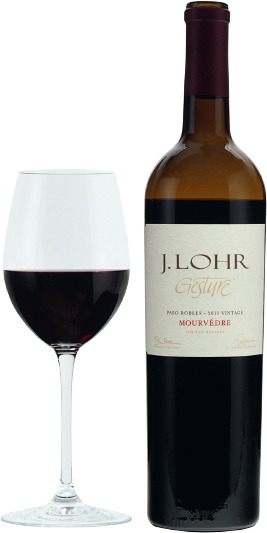
Californian examples of this grape tend to be less broodingly tannic than examples from Bandol in southern France, but J. Lohr’s version still has a fair amount of beefy personality, although the warm growing conditions of Paso Robles, south of San Francisco, also create pretty dark, rich fruit to balance it out.
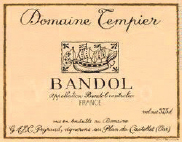
Domaine Tempier
One of the two top Bandol estates (the other is Pibarnon), Tempier uses a high proportion of Mourvèdre in all its reds; this one is 100% Mourvèdre and can age 20 years.
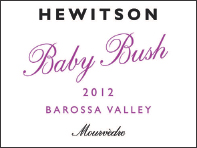
Hewitson
Barossa Valley is famous for old vine Shiraz, but Mourvèdre was also planted in the 19th century, and a few vines survive. Sometimes called Mataro, it used to be made into Port, but is now sought after for strong, dry reds.
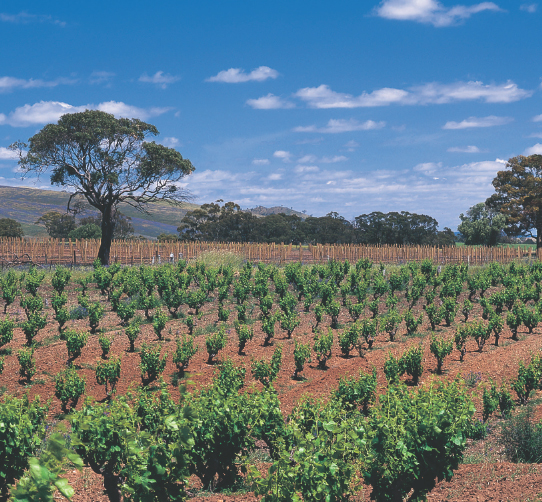
Mataro/Mourvèdre growing in the Barossa Valley in South Australia. The name Mourvèdre is supplanting that of Mataro in Australia as demand for old vine fruit soars. Aficionados reckon that if you call it Mataro, you don’t take it seriously. And wines from old bush vines like these are very serious indeed: they’re not as immediately likeable as Shiraz or Grenache but can add a fascinating extra something to red blends.
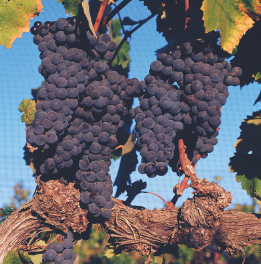
Mourvèdre is not a variety that is terribly easy to grow successfully: it is said to like its face in the hot sun and its feet in the water, which is a tall order even for many of the Bandol vineyards perched on the cliffs high above the Mediterranean. It’s an even taller order for most of Australia.
CONSUMER INFORMATION
Synonyms & local names
Called Monastrell, Morrastel or Morastell in Spain. Mataro is a synonym used in the New World (Esparte is also used in Australia). One of its more picturesque French names is Estrangle-Chien or ‘Dog strangler’.
Best producers
FRANCE/Southern Rhône Beaucastel, l’Oratoire de St-Martin, Richaud, Dom. Ste-Anne; Provence la Bastide Blanche, la Bégude, la Courtade, d’Esclans, Frégate, Galantin, Jean-Pierre Gaussen, Gavoty, Gros’ Noré, l’Hermitage, Mas Redorne, Moulin des Costes, la Noblesse, Pibarnon, Ch. de Pradeaux, Ray-Jane, Roche Redonne, Romassan, la Rouvière, Ste-Anne, Salettes, Simone, la Suffrène, Tempier, Terrebrune, la Tour du Bon, Vannières; Languedoc-Roussillon Jean-Michel Alquier, Canet-Valette, la Grange des Pères, l’Hortus, Mas Blanc.
SPAIN Agapito Rico, Bodega Balcona, Castaño, Julia Roch Melgares, Torres; Alicante Fondillón Bodegas Alfonso, Bocopa, Bodegas Brotons, Salvador Poveda, Primitivo Quiles.
USA/California Bonny Doon, Cline Cellars, Edmunds St John, Jade Mountain, J Lohr, Qupé, Ridge, Sine Qua Non, Tablas Creek, Sean Thackrey, Zaca Mesa, Villicana; Virginia Horton; Washington State McCrea Cellars.
AUSTRALIA Boireann, Grant Burge, Cascabel, D’Arenberg, Henschke, Hewitson, Langmeil, Charles Melton, Mitchelton, Penfolds, Pikes, Rosemount, Seppelt, Spinifex, Torbreck, Veritas, Wendouree, Yalumba.
SOUTH AFRICA Beaumont, Fairview.
RECOMMENDED WINES TO TRY
Ten southern French wines
Domaine de la Bastide Blanche Bandol Cuvée Fontanieu
Ch. de Beaucastel Châteauneuf-du-Pape
Domaine de l’Hermitage Bandol
Ch. de Pibarnon Bandol
Ch. de Pradeaux Bandol
Domaine Ray Jane Bandol
Ch. de la Rouvière Bandol
Domaine Tempier Bandol Migoua
Domaine de Terrebrune Bandol
Ch. Vannières Bandol
Five New World Mourvèdre wines
D’Arenberg The Twenty Eight Road Mourvèdre (Australia)
Hewitson Barossa Valley Old Garden Mourvèdre (Australia)
Spinifex Indigène (Australia)
McCrea Cellars Mourvèdre, Ciel du Cheval Vineyard, Red Mountain AVA (Washington)
Ridge Vineyards Evangelo Mataro (California)
Ten New World Mourvedre blends
Bonny Doon Le Cigare Volant (California)
Cline Cellars Oakley Cuvée (California)
Edmunds St John Les Côtes Sauvage (California)
Jade Mountain La Provençale (California)
Charles Melton Nine Popes (Australia)
Qupé Los Olivos Cuvée (California)
Rosemount GSM (Australia)
Sine Qua Non Red Handed (California)
Villicana Winemaker’s Cuvée (California)
Yalumba Antipodean (Australia)
MTSVANE KAKHURI 
Go to Georgia and just about every white wine you see that’s not Rkatsiteli will be Mtsvane. Georgia boasts, in theory, hundreds of indigenous grapes: it’s just that it seems to forget to grow them. This one finds favour because – well, I’m not quite sure. It yields quite well, gets high sugar levels and tastes quite nice: some citrus and floral notes, a bit of tropical fruit, decent acidity. But it’s difficult to see it setting the world on fire.
MÜLLER-THURGAU 
It is a curious fact that all the world’s greatest grape varieties have happened by accident. Man may be a dab hand at the selective breeding of pigs or cattle, but when it comes to grape vines nature has always (so far, anyway) done better on her own.
Müller-Thurgau is a case in point. It was bred in 1882 by Dr Hermann Müller-Thurgau, working at the Geisenheim Institute in Germany. His aim was, as usual in Germany, to produce a crossing that would combine all the advantages of Riesling – high quality, elegance, complexity – with the earlier ripening of Silvaner. Müller-Thurgau proved so popular that by the early 1970s it was the most planted grape in Germany – though it is hard to believe that anyone thought the vine had one iota of the quality of Riesling. It is now in decline, but has a long way to go yet, and still accounts for 12.6 per cent of total plantings (2013).
Ironically, it has now been shown not even to be the Riesling x Silvaner cross that it was long believed to be. DNA fingerprinting has revealed its parents to be Riesling and Madeleine Royale (first tests suggested that they were Riesling and Chasselas de Courtillier). Madeleine Royale is no longer grown, and was itself a 19th-century crossing of Pinot and Schiava. It seems to have inherited little from its Riesling parent, however, being merely dull, aromatic in a rather unspecific way, and with little structure. But it is easy to grow and yields extremely generously, easily giving 200hl/ha, and that, in an era of Liebfraumilch and associated wines – Piesporter, Niersteiner and Bernkasteler – was a great attraction for the growers of most German regions. It even made inroads to the tune of 20 per cent in the Mosel.
It is true that if yields are restricted and the vineyards are well managed, then Müller-Thurgau is capable of producing respectable wine, attractively scented and with a pleasant acidity. But the problem is that to produce a top Müller-Thurgau you need to plant it in a top Riesling site, which is a terrible waste of a top Riesling site. In a third-rate site you’ll get a third-rate Müller-Thurgau – but then Riesling from such a site wouldn’t be worth drinking at all. It is also a grape that seems to be at its best in categories not higher than Spätlese since it seems to lose what definition it has as it gets riper. For most cheap German wines it is blended with something more assertively aromatic, like Morio-Muskat.
Its disadvantages (apart from the above) in Germany are that it is less resistant to winter cold than Riesling, and susceptible to rot, downy mildew and a painful sounding fungal affliction called Rotbrenner.
A great deal of Müller-Thurgau was planted, on German advice, in New Zealand in the 1950s and 1960s, when that country was just beginning to think seriously about modernizing its wine industry. Plantings have declined to less than 2.6ha (6 acres) in 2013 – but in fact New Zealand examples can have reasonable balance, are less overcropped than German ones and can be rather good. The same can be said of Müller-Thurgau from northern Italy, where the high-altitude vineyards of the Alto Adige region keep good acidity in the wine.
It is found across Europe from Austria eastwards, but seldom produces anything of note. England and Luxembourg (where it is called Rivaner), on the other hand, have cool climates, and produce some quite nice snappy wines, but it is falling out of favour here, too, due to unreliable cropping. Oregon and Washington State have produced some decent ones, but are unlikely to continue doing so for much longer. Best producers: (England) Breaky Bottom, Chapel Down, Three Choirs; (Germany) Karl-Heinz Johner, Juliusspital, Dr Loosen, Markgraf von Baden (Salem/Durbach); (Italy) Nilo Bolognani, Caldaro co-op, Casarta Monfort, Cortaccia co-op, Graziano Fontana, Pojer e Sandri, Pravis, Enrico Spagnoli, Tiefenbrunner, A & R Zeni.
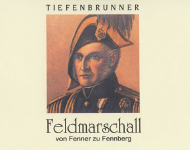
Tiefenbrunner
When Müller-Thurgau struggles to ripen, its wine can be deliciously sharp and mouthwatering. Tiefenbrunner Feldmarschall from vines 1000m (3280ft) up in the Dolomite mountains is a prime example.
MÜLLEREBE 
A German name for Pinot Meunier (see here). The name – ‘Miller’s grape’ – means the same as the French ‘Pinot Meunier’; both names derive from the floury appearance of this downy-leaved vine. Best producers: (Germany) Drautz-Able, Fürst zu Hohenlohe-Öhringen, von Neipperg.
MUSCADELLE 
Muscadelle is unrelated to Muscat, although its flowery, grapy aroma might suggest some connection. It is found in the sweet wines of Sauternes as a minor part of the blend: just 2–3 per cent Muscadelle added to the Sémillon and Sauvignon Blanc can give this sweet wine an attractive lift and some extra finesse. Further east in Monbazillac it is the second most planted grape after Sémillon, but is losing ground to the latter.
In dry white Bordeaux from Entre-Deux-Mers, Premières Côtes de Bordeaux and other areas it can form up to 40 per cent of the blend but seldom does, since it is an irregular yielder and rots easily. In the gravelly south of Entre-Deux-Mers it can be picked earlier and is often quite good, but these regions are mad for red wine these days and are busy uprooting their white vines of all types.
Where Muscadelle reaches its apogee, however, is at Rutherglen and Glenrowan in northeastern Victoria, Australia, where it used to be known as Tokay and made the dark, sticky fortifieds known as Liqueur Tokay that are the counterpart to the Liqueur Muscats produced there from the Muscat grape (see here). Now, in a gesture of appeasement to Hungary and the EU, the name of Tokay has been changed to the faintly silly one of Topaque, though the wines are the same. With age, Muscat and Muscadelle become more like each other, though Muscadelle always has a more malty, butterscotch flavour which contrasts with the tea rose scent and raisininess of Muscat, and Muscadelle is the less fleshy and syrupy of the two wines. Best producers: (Australia) All Saints, Baileys of Glenrowan, Campbells, Chambers, Peter Lehmann, Morris, Stanton & Killeen.
MUSCADET 
This grape is just as well known by this name as it is by the name of Melon de Bourgogne (see here). Although it originally arrived in the Pays Nantais having travelled from Burgundy, it is now associated almost entirely with the Muscadet wine produced in the flat lands at the mouth of the Loire around the city of Nantes, which goes so well with the local seafood. Best producers: (France) B Chéreau, Chéreau-Carré, Luc Choblet, Gadais, l’Ecu, Pierre Luneau, Louis Métaireau, Ragotière.
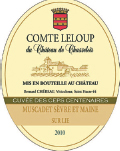
Chéreau
Muscadet is often thought of as being a simple, neutral, bone-dry glugger to drink as young as possible, But Chéreau makes wines from old vines – in this case centenarians – which can age successfully for years.
MUSCARDIN 
This grape comprises a small part of the blend for red Châteauneuf-du-Pape in the southern Rhône Valley. It appears to have no synonyms, which is extremely rare for a vine, and little is known of its origins. The wine is light in colour, but with an appealingly floral aroma and faint acidity.
MUSCAT 
See here.
MUSCAT OF ALEXANDRIA 
Muscat of Alexandria has less finesse than Muscat Blanc à Petits Grains, but is widely grown throughout the world. See Muscat here.
MUSCAT BLANC À PETITS GRAINS 
The strain of Muscat that almost invariably produces the best, most elegant, most finely aromatic wines. See Muscat here.
MUSCAT CANELLI 
Californian synonym for Muscat Blanc à Petits Grains derived from the name Moscato di Canelli or Moscato Bianco. See Muscat here.
MUSCAT DE FRONTIGNAN 
French synonym for Muscat Blanc à Petits Grains when used for Muscat de Frontignan, the Languedoc’s main fortified wine. See Muscat here.
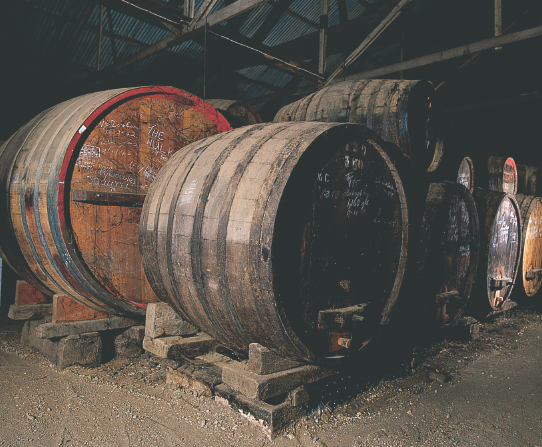
The colour of these old casks of Liqueur Muscats and Tokays (now renamed Topaque to avoid upsetting the Hungarians) in the corrugated iron winery of Morris Wines, Rutherglen, Victoria, Australia, echoes the colour of the wine. It can stay in cask for decades, becoming ever blacker, more concentrated and stickily sweet.
MUSCAT GORDO BLANCO 
Australian name for Muscat of Alexandria. See Muscat here.
MUSCAT OF HAMBURG 
A dual-purpose wine and table grape, but more often grown for the latter. As a wine grape it is found mostly in eastern Europe. See Muscat here.
MUSCAT OTTONEL 
An addition to the Muscat family bred in 1852 in the Loire Valley, and with less intensity than either Muscat Blanc à Petits Grains or Muscat of Alexandria. It is the main Muscat variety grown in Alsace unfortunately. See Muscat here.
MUSKADEL 
South African name for Muscat. It generally refers to Muscat Blanc à Petits Grains. See Muscat here.
MUSKAT-SILVANER 
Sauvignon Blanc (see here) is sometimes called by this name in German-speaking countries. Best producers: (Austria) Alois & Ulrike Gross, Lackner-Tinnacher, Erich & Walter Polz, Otto Riegelnegg, Sattlerhof.
MUSKATELLER 
German name for Muscat (see here). It generally refers to Muscat Blanc à Petits Grains: Gelber Muskateller, the gold-skinned version found in Austria’s Steiermark region and in Slovenia, and Weisser Muskateller are both forms of this strain of Muscat. Rotmuskateller is the Austrian Roter Veltliner and Grün Muskateller is Grüner Veltliner – neither of which taste like Muscat, but then Austria sometimes calls Sauvignon Muskat-Silvaner.
MUSKOTÁLY 
Muscat takes this name in Hungary: most of the local Muscat planted there is Muscat Ottonel, but there is some Muscat Blanc à Petits Grains, which goes by the name of Sárga Muskotály, or ‘Yellow Muscat’. See Muscat here.
NARINCE 
Turkish variety, also a table grape, with good citrus or floral flavours. Can age well, and takes happily to some oak aging.
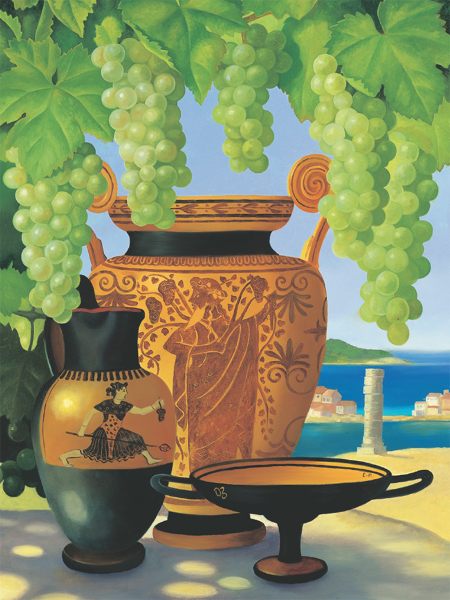
MUSCAT
Muscat: from Grape to Glass
Geography and History here; Viticulture and Vinification here; Muscat around the World here; Enjoying Muscat here
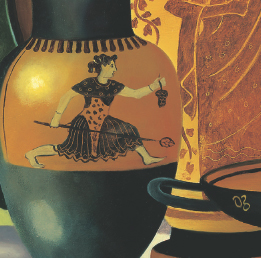
The wine-dark sea around the island of Samos, a home of the Muscat grape, lies in the distance. Was this the wine drunk by Dionysus, the Greek god of wine? The ancient Greeks clearly loved wine and all its paraphernalia. Here is a mixing jar, a wine jug and a beautiful kylix or two-handled wine cup. And, goodness me, some hooligan has been scrawling his name on the side of the cup. Disgraceful.
We had this old greenhouse at home when I was a kid. Out past the potting shed and the wood pile, just before you got to the potato plot. For most of the year I didn’t bother with it much; it was grimy, unkempt, with a great sprawl of branches and shoots pressing against the windows and cutting out most of the light. I’d venture in once or twice in the summer, when the place was like a forest and a canopy of broad green leaves added to the gloom. But come the autumn, just before I had to go back to school, that’s when I’d creep inside and breathe in an air so muggy and hot and thick with scent I could hardly open my throat wide enough to draw it in. The perfume was so heady, so exotic you’d think it should have been coloured purple and gold and been as impenetrable as clouds. But it wasn’t. There was just enough light for me to look above my head and see vast clusters of purple black grapes, so ripe and fat that they threatened to tumble and crush me if I so much as touched them.
These were our Black Muscats or Muscats of Hamburg. Just once a year, I’d gorge myself on their succulent wildly aromatic flesh before stumbling back to the house with no plausible excuse as to why I was too full to eat tea. And the next day the man from the Savoy Hotel would come and measure the grapes. All the complete bunches of all the biggest grapes, he’d buy. It was usually worth making myself pretty scarce when my mother discovered how many he wasn’t going to buy. No money for the cinema that week.
But the perfume in that hothouse and the flavour of those succulent grapes has never left me. The scent of Muscat haunts me in an entirely pleasurable way, and I can’t smell a top-notch Muscat wine without being wreathed in the happy memories of childhood. And it makes me wonder. If Muscat was the original wine grape – and there’s a fair amount of opinion suggesting that it was – what on earth made producers move on to other lesser, leaner varieties when they already had this irresistible headspinning grape? As it was, Muscat led the wine grape’s conquest of the Mediterranean – spreading from the East through Greece and Italy, then on to southern France and down the Spanish coast to Málaga, within sight of the shores of Africa. And for hundreds of years it was highly prized for its fabulous perfume and for the fact that, of all the wine varieties, it was just about the only one that made wine that tasted of grapes.
And yet today it’s treated with casual disregard by the majority of wine drinkers. This marvellously adaptable grape with the unmistakeable scent of the vine in full bloom is even sneered at. What does a grape have to do to earn a little respect? Producing utterly delicious wines for anyone with half a palate and a heart that beats obviously isn’t enough. Having a gorgeous hothouse scent that makes you swoon with delight doesn’t seem to do the trick. Being so versatile that it can make outstanding wine sweet, medium or dry, sparkling or fortified – is that enough? No, it doesn’t seem to be.
There are some signs of hope. Moscato has suddenly become very popular in the United States. Fizzy, fruity, scented, quite sweet; the perfect party pop, surely. Brazil’s known this for ages. Some of the best Muscat fizzy is made in Brazil, Party Central of whatever hemisphere you find yourself in. Maybe this explains why Italy – famous for sparkling Muscat-like Asti Spumante – is enjoying a planting boom while most of the world’s plantings of Muscat are in genteel decline. In tough times, they still like to party in Italy and Asti does the trick better than most.
But elsewhere, I’m afraid, Muscat is commonly the victim of a current white wine obsession driven by the distinctly unexotic charms of Chardonnay, the tangy attack of Sauvignon and the all-pervasive influence of vanilla-scented oak. But when these fashions have all faded away, Muscat, the original wine grape, will still be there to remind us why this whole wine thing got started in the first place.
GEOGRAPHY AND HISTORY
If there is a more complicated family of grapes than the Muscats, it has yet to be discovered. There are over 200 vines in the world called Muscat Something-or-Other, and some are related, some not. Muscat Blanc à Petits Grains, Muscat of Alexandria and Muscat Hamburg – the three best-known Muscats – are related, and their capacity for mutation can make the Pinot family look positively regimented. Their berries can be golden, pink or black, and Muscat Blanc à Petits Grains is notorious for its ability to produce one colour one year and another the next. If they were human the Muscat family would be regarded as hopelessly feckless. Which just goes to show that orderliness is not everything.
Muscats of different sorts are planted all around the Mediterranean and across Central and Eastern Europe, as well as in Australia, New Zealand, parts of North and South America, and South Africa. They make light dry wines, light, sweet sparkling ones, late harvest and sweet fortified wines. In theory Muscat could make nobly rotten sweet wines, though in practice it generally doesn’t because the Botrytis cinerea fungus would destroy its extraordinary aroma.
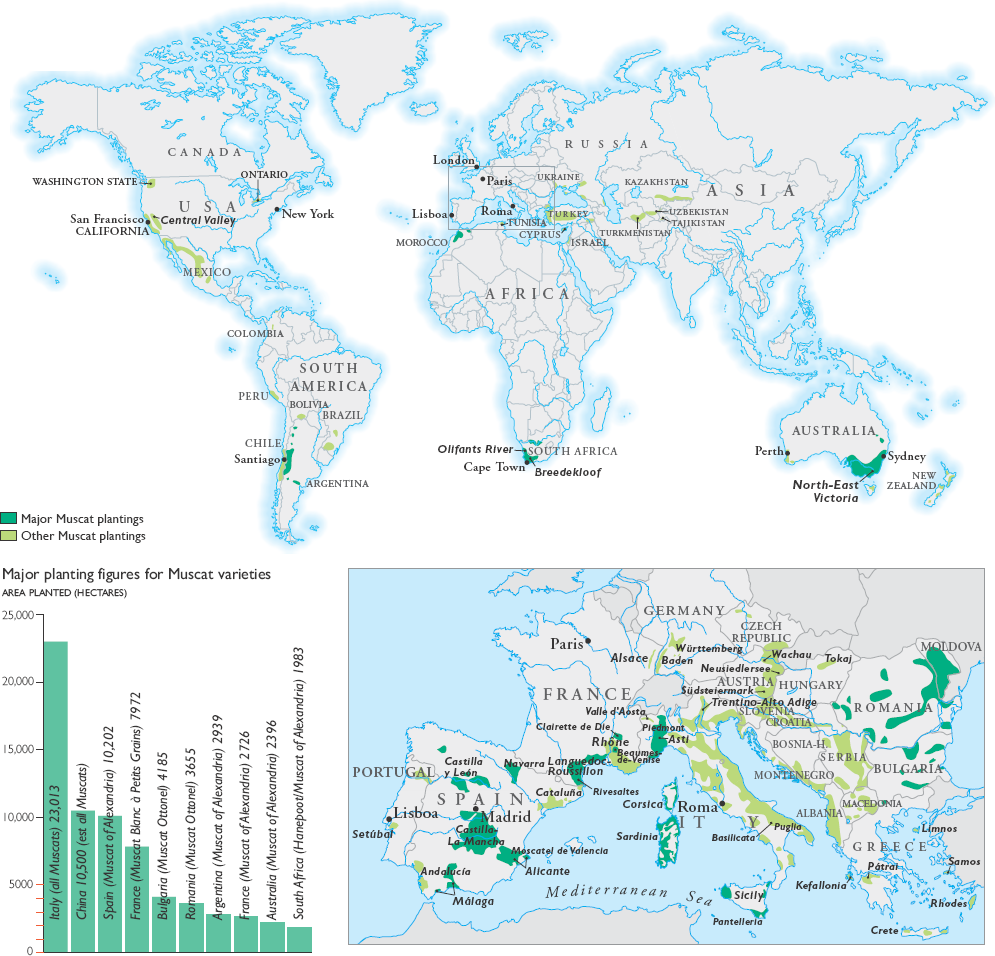
But don’t think that this blanketing of the vinous globe with Muscat means that it produces some of the world’s most popular wines. It doesn’t. Some of the world’s most delicious wines – yes. Wines that express the pure perfumed essence of the grape in a way no other variety can approach – yes. But these wildly aromatic styles – dry, medium and sweet – are not in fashion right now although Moscato has enjoyed a sudden vogue in the USA. Its superb, heady, grapy fragrance makes it one of the very few wine grapes that is good eating. Indeed Muscat of Alexandria and Muscat Ottonel are widely grown for table grapes or raisins, and these plantings can distort the picture if one is only looking at wine grapes. Much of the Muscat of Alexandria in Chile and Peru, in addition, is grown for distillation into pisco brandy.
HISTORICAL BACKGROUND
Muscat Blanc à Petits Grains may well be the oldest grape variety we have. The ampelographer Galet (1998) identifies it with the Anathelicon moschaton vine of the Greeks, and the Apianae vine of the Romans because of the fondness of insects, particularly bees (apis in Latin) and wasps, for the grapes. Fairly thin evidence, you might think; but there is more romance connected to Muscat than to most, and that’s saying something.
This Muscat, the oldest member of the family, was probably brought to the province of Narbonne by the Romans, though the Greeks seem to have known it earlier and might have brought it to Marseille. Frontignan was exporting its Muscat wines by the time of Charlemagne. As Muskateller it is recorded in Germany in the 12th century, and it had certainly reached Alsace by the 16th century.
Muscat of Alexandria was also spread around the Mediterranean by the Romans, probably being a Muscat cross from the Eastern Mediterranean, as its name suggests. Its Australian synonym is Lexia.
Muscat Ottonel is a more recent arrival, having been bred in the Loire in 1852. Its parents were Chasselas and the undistinguished Muscat d’ Eisenstadt.
The most recent addition to the family is a cross between Muscat Ottonel and Pinot Gris, bred (for greater resistance to coulure) in Alsace and so known, for the time being at least, as Muscat Cendré. The grape is still at an experimental stage. One just hopes fervently it was bred with beauty and fragrance in mind, not just high yield and disease resistance.
Other members of the Muscat family include Italy’s red Aleatico and Moscato Rosa del Trentino, and Argentina’s Torrontés Riojano.

Muscat vines on the slopes of the Dentelles de Montmirail at Lafare, Beaumes-de-Venise in the southern Rhône. The appellation’s name is a combination of the old Provençal word for grotto – beaumes – and a corruption of venaissin, an Old French word denoting church property. In the Middle Ages the Avignon Popes claimed all this area as their property.
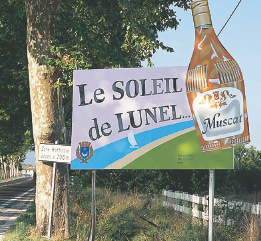
A sign for the local Muscat at Lunel in France’s Languedoc. According to the local growers, Napoleon drank Muscat de Lunel in exile on St Helena. Well, it’s a nice story, but it didn’t seem to do him much good.
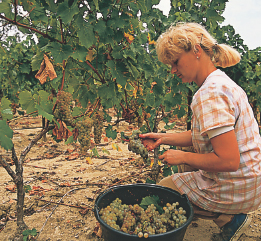
Harvesting Muscat at Beaumes-de-Venise. The most aromatic wines come from the highest altitudes; the wines from Beaumes-de-Venise are in any case lighter than other fortified Muscats.
VITICULTURE AND VINIFICATION
One might think, from the spread of Muscat across the globe, that it is easy to please in terms of soil and climate. In some ways this is true, since the same type of Muscat will make different styles of wine, from light and dry to rich and fortified, according to where it is grown. But it is far from being an easy grape to grow. It tends to crop erratically, and acidity is low. In the winery new oak is anathema, and blending with other grapes unusual, though a little Muscat may well be blended in with other varieties – red or white – when a bit of fruit and fragrance is needed.
Muscat is the opposite of Chardonnay: flamboyantly itself where Chardonnay is all things to all winemakers; yet temperamental and sickly where Chardonnay is robust. And it’s far from being a name on every wine drinker’s tongue.
Climate
All Muscats like a fair amount of warmth. Mediterranean climates, especially those of the south of France, Spain, southern Italy and Greece, are its natural habitats, and its most famous New World incarnations, Australia’s fortified Muscats, come from a pretty hot, though not scorching, region.
The varying susceptibilities of the different Muscats limit their suitability to different regions: Muscat Blanc à Petits Grains buds early and ripens late, and so needs a long growing season. It is a martyr to leaf roll, oidium, downy mildew and grey rot, and dislikes too much humidity; Muscat of Alexandria needs warm weather during flowering to avoid coulure and millerandage, and is also susceptible to mildew, though it endures drought well, so is happy in hot, dry regions. Muscat Ottonel is the earliest ripening of the three, and so is often planted in relatively cool Alsace (cool relative to the south of France, that is), though it nevertheless suffers from coulure here. In Alsace all Muscat needs sites with the best exposure to the sun.
Soil
It is not hard to guess that this multi-faceted grape is planted on a huge variety of soils throughout the world. In Alsace it favours loamy, sandy or calcareous soils, and Muscat Ottonel likes soils that are deep and rather damp; in Mireval and Frontignan, in Languedoc, the soils are red clay and limestone. In Piedmont it grows on chalk and limestone; in Australia’s Rutherglen and Glenrowan soils vary from alluvial loam over gravel to deep, friable granite-derived soils. Soil type probably has little influence on the fortified Muscats of Rutherglen, however; much of the character of this wine comes from the aging process, and the availability of well-aged stocks of rich, sticky wine to blend in with younger stuff is more important.
Cultivation and yields
The maximum legal limit for French vins doux naturels is 28–30hl/ha, though on deep fertile soils even the medium-vigour Muscat Blanc à Petits Grains can produce double this. However, its sugar level then falls and its aroma disappears, and aroma and sugar are essential to these wines. In Rutherglen, in northeast Victoria, some growers take around 2.5 tonnes per hectare, others irrigate and get much higher yields. It’s not difficult to tell which producer does which when you taste a sumptuous mouthful of grapy gorgeousness next to a simple, sweet quaffer, both from the same region. Muscat of Alexandria is more vigorous, more robust and higher yielding, but less perfumed and beguiling; Muscat Ottonel is low vigour and reasonably scented.
At the winery
Muscat may be made into a dry wine, as in Alsace; a light, sparkling one, as in Asti and Brazil; or a sweet, fortified one, as in the French vin doux naturel or the Liqueur Muscat of Rutherglen. It may also be made into a late-harvest sweet wine, or made sweet from passito (dried and shrivelled) berries. You very occasionally see a noble-rotted (Sélection de Grains Nobles) sweet Muscat from Alsace.
Neither the sparkling nor semi-sparkling Moscato wines of Piedmont are made by the traditional method – i.e. the Champagne method. Instead the must, fermented to up to 2–3 per cent alcohol, is kept in pressurized steel tanks called autoclaves at about 0°C (32°F) until it is needed; the fermentation is then continued until over half the sugar is fermented. The grapes have been picked at a potential alcohol level of around 11 per cent, and the rest of the sugar remains in the wine as sweetness. Asti is fully sparkling, Moscato d’Asti semi-sparkling, and the minimum alcohol content of Asti is 7 per cent. Lightness is everything with these wines: light sweetness, elegant fruit. They should be full-flavoured, yet always delicate. As befits a Party Animal place like Brazil, they make excellent Asti-type Moscatos there to lubricate carnival. And, of course, youth in the wine, as in the Carnival, is everything.
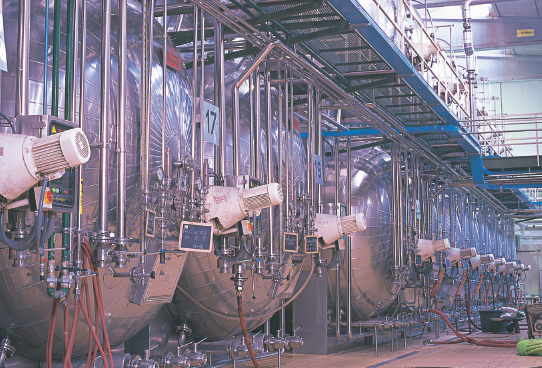
Asti and Moscato d’Asti have never pretended that they’re made by anything other than industrial methods. And why should they? They wouldn’t be nearly so refreshing if these large pressurized steel tanks, known as autoclavi, didn’t keep the partially fermented juice fresh until it’s ready to finish, bottle and ship.
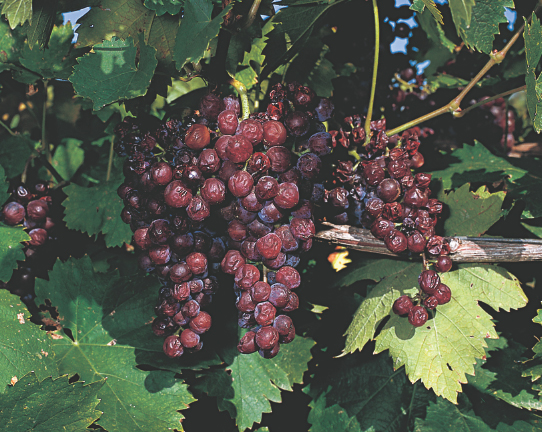
Brown Muscat grapes starting to raisin at Rutherglen in Northeast Victoria, Australia. Nobody really knows why Muscat was first planted in this flat, unpromising region, but probably the gold rush was the reason: goldminers and prospectors tend to be thirsty, and where they go wine tends to follow.
The southern French fortified wines or vins doux naturels (VDN) are made by mutage, which involves adding spirit halfway through fermentation to knock out the yeasts – the same technique that is used to make port. For VDN the fermentation is allowed to continue until the alcohol has reached about 6 per cent, and the addition of alcohol brings the total to 15 per cent or slightly over. At around 95 per cent, the alcohol used for VDN is stronger than that used in the Douro Valley for port, which is usually 77 per cent.
Some skin contact may be used, particularly in Rivesaltes, where the vineyards are dominated by Muscat of Alexandria. This increases the perfume, but must be used sparingly if heaviness, even bitterness, is not to result.
Rutherglen’s methods of producing its fortified Muscats vary. Some producers pick their grapes at potential alcohol levels of 16 per cent, others prefer to pick at 20 per cent. In some years 30 per cent is possible. Some like to pick raisined grapes, some don’t.
A typical method of winemaking is to ferment the must for a mere 24 hours before fortifying so that the juice changes enzymatically, but the alcoholic fermenation is barely started. Some producers operate a gradual solera blending system, or a version thereof, generally employing hogsheads or large casks for aging, though as the wine ages and loses volume to evaporation, barrels are likely to get smaller and smaller; others blend selected wines before bottling. Some add alcohol to the unfermented must, so that no fermentation at all takes place. Whatever the method, the final figures are around 17–18 per cent alcohol and 9–14° Baumé residual sugar. Aging, usually in pretty torrid conditions under the tin roofs of the wineries, may be for years, decades or even longer: some wineries boast a barrel or two of dark, treacly wine from the 19th century, used in tiny quantities to give depth and viscosity to younger wine.
WHICH MUSCAT?
Of the three main Muscat grapes used for winemaking, Muscat Blanc à Petits Grains is the star. It produces the most refined wines, with the greatest elegance, and with aromas that are both the most intense and the most delicate and complex. Its name, however, is deceptive: its berries are certainly small, but to describe them as white flies in the face of all the evidence. Golden yellow is their most common colour, although they can be all shades of pink and can even have dark skins, though seldom dark enough to make red wine.
Australians, typically, do not beat about the bush: the Muscat Blanc à Petits Grains that grows in Rutherglen is known simply as Brown Muscat. The astonishingly rose-scented deep pink or red Rosenmuskateller of Italy’s Alto Adige and Trentino is also a variety of Muscat Blanc à Petits Grains. Galet lists a Muscat de Rivesaltes which has downy leaves; this is a mutation of Muscat Blanc à Petits Grains.
Muscat of Alexandria is less refined. Its wines are sweet and intense, but they lack the complexity of Muscat Blanc à Petits Grains, and they tend to be clumsier, lacking the balance and focused perfumed beauty of the best Muscat. Muscat of Alexandria’s more assertive and less subtle aroma is accounted for by a higher proportion of geranium-scented geraniol, and a lower proportion of fragrant nerol. It is much used for grape concentrate, raisins and brandy, as well as for table grapes.
Muscat Ottonel has less powerful aromas than the previous two Muscats. It is also paler in colour.
Muscat of Hamburg is always black, and is best as a table grape. Its quality is lower than the previous three, though it is planted to some extent in Eastern Europe for light red wine, and is found elsewhere as well.
The names of all these Muscats seem to have mutated at an even faster rate than the vines. We list the main synonyms of each variety on here; but it is worth noting that while anything called Moscato, Moscatel, Moscadello, Muskateller or Muscadel is Muscat, any vine called Muscadelle, Muscadet or Muscardin is not. Muscat Bailey A is a hybrid grown in the Far East. Morio Muskat is a flashily scented German variety unrelated to Muscat. Muskat-Sylvaner is an Austrian synonym for Sauvignon Blanc.
MUSCAT AROUND THE WORLD
There are vast swathes of Muscat of Alexandria growing in the warm vineyards of the world. But remember, a considerable percentage is not destined for winemaking but for eating. There’s less Muscat Blanc à Petits Grains planted, but most of it is destined for winemaking and it makes some of the most exotically scented wines in the world.
France
Both Muscats are used in southern France’s cluster of vins doux naturels. Several of the ACs specify Muscat Blanc à Petits Grains: it should be the only variety in the delicious, scented Muscat de Beaumes-de-Venise (whose residual sugar level is 110g/litre instead of 125g/litre in the other ACs). Mireval, St-Jean-de-Minervois, Lunel and Frontignan should also be Muscat Blanc à Petits Grains but aren’t always. Muscat de Rivesaltes is dominated by Muscat of Alexandria grapes, although Muscat Blanc à Petits Grains is on the increase here thanks to new clones which yield more reliably. Rivesaltes also produces VDNs called simply Rivesaltes, from blends of grapes: both Muscats may be mixed with Grenache, Maccabéo and Malvoisie du Roussillon (alias Torbato), and these wines turn out every imaginable colour, and in styles from young and fresh to rancio. Naturally, they do not have the pure Muscat aroma of Muscat de Rivesaltes.
There is also some dry, unfortified Muscat in the South, usually with more body and substance but less ethereal perfume and crunchy fruit than the dry versions from Alsace. Muscat Blanc à Petits Grains also dominates the blend in light, sweet and sparkling Clairette de Die Tradition, often to the virtual exclusion of Clairette and to the great benefit of the wine.
In Alsace, Muscat takes up only about 3 per cent of the vineyard, and while Muscat Ottonel is the preferred variety, it never produces such delightful wine as Muscat Blanc à Petits Grains, which also makes good fresh wines on Corsica, some fortified.
Italy
Moscato (mainly the superior Muscat Blanc à Petits Grains) is grown all over the peninsula. In Piedmont, where it is grown for light, sweet, sparkling Asti and Moscato d’Asti, Muscat Blanc à Petits Grains is planted up to 550m (180ft), with the higher, steeper vineyards giving more acidity and the lower vineyards more body. But even at relatively low potential alcohol levels (about 11 degrees for Moscato d’Asti) there is no shortage of aroma. Moscato Rosa, or Rosenmuskateller, is a variation of the same Muscat, used for intensely rose-scented (and even rose-coloured, if the roses in question are red) still wines in Trentino and Alto Adige; Moscato Giallo or Goldmuskateller is another variant, and makes orange-blossom-scented dry or sweet wines in Trentino and Alto Adige. Sweet red Aleatico is a close relation of Muscat Blanc à Petits Grains.
On the island of Pantelleria, between Sicily and Tunisia, Muscat of Alexandria, often under the name of Zibibbo, is grown for amber-coloured Moscato di Pantelleria, made from passito grapes. Sardinia, Basilicata and Puglia also have traditions of sweet Moscato, though they’re hardly flourishing.
Spain and Portugal
Simple, sweet, grapy Moscatel is grown all over Spain, and usually the grape in question is Muscat of Alexandria (Moscatel de Alejandría), though there is some Muscat Blanc à Petits Grains (Moscatel de Grano Menudo) in the North. Moscatel de Málaga is a speciality of the South, and is probably a synonym for Muscat of Alexandria. Moscatel de Setúbal is Portugal’s best known, made from Muscat of Alexandria, but crisp, dry Muscats are made in the same area.
Austria
Gelber Muskateller or Muscat Lunel (both synonyms for Muscat Blanc à Petits Grains) is the grape behind Austria’s best Muscats, though Muscat Ottonel takes up more of the vineyard. Muscat Ottonel is, however, currently being uprooted to make way for red vines. Muscat Ottonel makes good late-harvest wines in the Neusiedlersee, while Muscat Blanc à Petits Grains appears as dry wine in the Wachau and Südsteiermark. There is also some in Burgenland.
Greece
Muscats Blanc à Petits Grains and Alexandria are grown here, though only the former is used for the high-quality sweet wines of Samos, Pátrai and Kefallinía; these may be unfortified, fortified in the manner of vin doux naturel, or made from grapes dried in the sun. Muscat of Alexandria rules in Cyprus. Greece has obvious potential, given its current talent for making crisp, dry, characterful whites, for aromatically dry Muscat.
Rest of Europe
Muscats are grown in Germany, Bulgaria, Romania, Croatia, Slovenia, Moldova, Uzbekistan, Kazakhstan, Tajikistan and Turkmenistan, and in Crimea (now back in Russia), where the Massandra winery continues its tradition of making both white and pink Muscat. The former is aged for six years before release, the latter for 20. Hungary has some Muscat in Tokaj, which is picked late (and, yes, botrytized) for sweet Tokaji, but which also has potential as a dry wine.
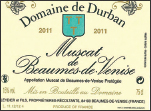
Domaine de Durban
One of the principal producers of Muscat de Beaumes-de-Venise, Domaine de Durban’s wine has a style that is delicate but beautifully scented.
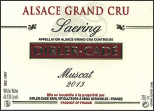
Dirler-Cadé
Muscat is one of the four noble varieties that can be planted in Alsace’s Grand Cru vineyards. The sandy soil here gives this Muscat lightness and perfume.
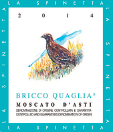
La Spinetta
Bricco Quaglia is the Rivetti family’s top Moscato from its La Spinetta estate near Asti. ‘Bricco’ is a Piedmontese dialect word meaning ‘hilltop’.
Australia
Of the two great fortified wines made in Rutherglen and Glenrowan, in northeastern Victoria, one is made from Muscat grapes. This is, not surprisingly, known as Rutherglen Muscat, or Liqueur Muscat; the other wine, made from Muscadelle, known locally as Tokay, is now called Topaque. Yes, lovely name, isn’t it? Not.
Both wines darken with age until they are thick, brown and viscous, but both start out much paler. Young Muscat tastes grapy/raisiny and rich, often with a tea-rose scent; with increasing maturation in barrel it becomes more concentrated and complex, and takes on flavours of figs and blackberries, coffee and chocolate, and the acidity at length becomes more apparent, though Muscat always tastes sweeter and fleshier than Topaque. A four-tier quality system puts Rutherglen Muscat at the basic level. Above it, in ascending order, are Classic, then Grand, then Rare. There are no specific criteria for any of these categories; peer pressure, in this small community of growers, is supposed to ensure high quality at every level.
Not all Australian Muscat is used for such styles. Both Muscat of Alexandria (Muscat Gordo Blanco, or Lexia) and Muscat Blanc à Petits Grains (White Frontignac or Brown Muscat) are used to make light, fruity bulk wine sold in wine casks. Plantings are declining slowly.
South Africa
The star Muscat is Vin de Constance. It’s made from Muscat de Frontignan, aka Petits Grains, picked really shrivelled and sunburnt, and it has elegance, delicacy, raciness, concentration – everything you want, really. It’s a reinvention by Klein Constantia of the style that made South Africa famous right at the start – and since there are apparently no records of Muscat vines having been imported since the early days of the colony, those that make Vin de Constance are quite possibly descendents of the originals.
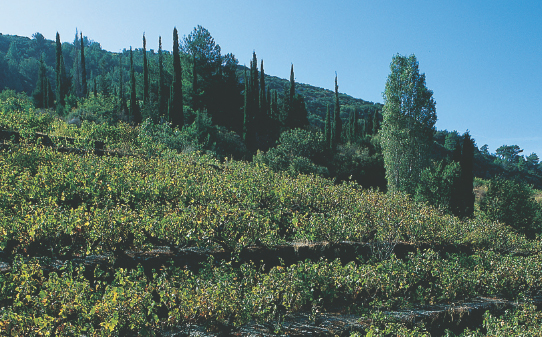
Terraced vineyards on the Greek island of Samos. Muscat is grown at altitudes of up to 800m (2620ft), and grapes from the highest, coolest spots may be picked as much as two months after those grown lower down.
Otherwise Hanepoot, alias Alexandria, is concentrated in Worcester and Olifants River, but is found in most regions and is used for everything: dry, sweet and fortified wine, table grapes, raisins and grape juice. Quality is generally dull, excepting a few top fortifieds. Muscadel (Muscat Blanc à Petits Grains) is the grape behind Jerepigo, made by adding grape spirit to unfermented grape juice.
USA
Plantings of Muscat of Alexandria outnumber those of Muscat Blanc (Muscat Canelli, or Muscat Blanc à Petits Grains), but are falling fast. It grows mostly in California’s Central Valley, where it was planted for raisins and also makes bulk wine for blending. Muscat Canelli is planted both in the Central Valley and in the coastal regions, and is generally made light, medium-sweet and slightly sparkling. There are also some fortified versions.
California also has small amounts of orange-flower-scented Orange Muscat, which appears to be related to Muscat Blanc à Petits Grains, and some rose-scented Black Muscat, which is presumably Muscat Hamburg. Both can make exciting sweet fortified wines in the right hands.
Rest of the world
Brazil makes good use of Muscat – usually Petits Grains – for high-quality sparkling wines. Elsewhere in South America large quantities of Moscatel of different sorts are grown for pisco brandy, table grapes and bulk wine. Tunisia manages to make some dry rosé from Muscat of Alexandria.

Marco De Bartoli
Moscato grapes are allowed to dry naturally in the autumn sunshine for Marco De Bartoli’s passito wine. Zibibbo is the local name for Muscat of Alexandria.
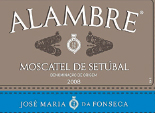
José Maria da Fonseca
This wine is a blend of Moscatel with Bual and Malvasia; other Moscatels de Setúbal from the same house may be different blends, or pure Muscat.
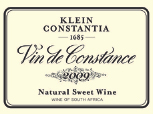
Klein Constantia
Constantia wine was first made in South Africa in the late 17th century. It is an unfortified but intensely sweet wine with a lime and orange zest acidity.
ENJOYING MUSCAT
Enjoying Muscat is so easy, I feel a bit silly even considering writing down any lists of dos and don’ts. But it is that very fresh, fragrant, blossomy beauty which is at both the heart of the pleasure and the core of the decline. It rarely lasts. It fills the glass with the heady scents of summer ripeness, the sweet perfumes of a Mediterranean bower laden with fruit – and then, just as summer always crumbles into autumn, the scent becomes dulled, the youthful beauty becomes coarsened and fat. Summer is gone. And so is the succulent, sybaritic fleeting beauty of Muscat. It would be hard to bear were there not another harvest every year: another chance to revel in young Muscat yet again.
Well, this is the case with most Muscat. Most dry examples have a beautiful but fleeting perfection – though some Alsace ones can age to a fascinating scented decadence. Even the sweet vins doux naturels of southern France gain nothing from aging, though they decline gracefully.
Lack of acidity is the problem. Perfume almost always needs balancing acidity in wine to develop past its first bright-eyed flush of youth, and Muscat simply doesn’t have the requisite acidity. If the aroma tires, Muscat wines quickly fade to an oily sullenness. Yet there are a few exceptions – fortified wines made from small crops of grapes, their flavours intensified by overripeness and shrivelling on the vine, their dark sensuous fruit arrested and preserved by the fortification process, and their intoxicating scent married with the mystical tastes of age and decay by long barrel-aging and blending. The greatest of these are the Muscats of Glenrowan and Rutherglen in Australia, though South Africa can occasionally come up with the goods too.
The taste of Muscat
Light young Muscat tastes of rose petals spiked with orange blossom, sometimes elderflower, and perhaps a touch of orange zest; it is this slight citrus tang that can help to balance the wine’s low acidity. Sometimes the roses dominate; sometimes there is a peachy richness; sometimes the orange comes to the fore. With so much variation even within Muscat Blanc à Petits Grains vines, it is hardly surprising that the wines can taste different.
Oh! And grapes. There is always a crisp, crunchy grapiness about good examples of Muscat Blanc à Petits Grains, and it is this crispness, as well as greater finesse and subtlety, that makes Muscat Blanc à Petits Grains wines such sublime drinks. Muscat of Alexandria is simpler, broader, less perfumed, less beautiful; Muscat Ottonel less powerfully scented, sometimes verging on the vegetal.
Dark, aged Muscats that have been sitting in old oak barrels for years acquire an oxidative bouquet of figs, blackberry and coffee, prunes, treacle, nuts and chocolate, immensely complex and pungent. These wines can be so thick and viscous that they coat the glass with a thick film of translucent brown; the smell will remain in the glass long after the wine has been drunk.
And, of course, most Muscat is sweet. Sweetness is certainly what such a perfume leads you to expect – and it is generally what you get – a sweetness so fruity that such wines are the best all-purpose wines to go with dessert. Even so, with Alsace in the lead, the number of wines of crystalline fragrant dryness is increasing.
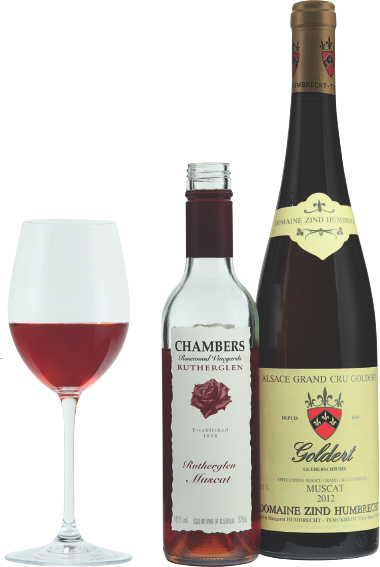
Chambers Liqueur Muscat is dark, rich and very sweet indeed, although it is by no means the most heavyweight Muscat to come from Rutherglen in Northeast Victoria, and it retains its glorious scent. By contrast, Goldert is an east-facing Grand Cru vineyard in Alsace and Zind Humbrecht make a golden and full-bodied and wonderfully perfumed wine from its grapes.
MATCHING MUSCAT AND FOOD
These fragrant, grapy wines range from delicate to downright syrupy. The drier ones are more difficult to pair with food, but are a good choice with delicately spiced Thai or Indian food. The sweeties come into their own with most desserts (try chilled Liqueur Muscat with really good vanilla ice-cream). Chilled Moscato d’Asti, delicious by itself, goes well with rich Christmas pudding or mince pies.
CONSUMER INFORMATION
Synonyms & local names
Muscat Blanc à Petits Grains, the most important variety, is also called Muscat de Frontignan, Muscat Lunel, Muscat Blanc, Muscat d’Alsace, Muscat Canelli, Muskateller in Germany, Brown Muscat or Frontignac in Australia and Muskadel or Muscadel in South Africa; the Italians call it Moscato or Moscato Bianco, Moscato Canelli or Moscato d’Asti. Moscato Giallo (Goldmuskateller) and Moscato Rosa (Rosenmuskateller) are mutations with darker berries from Alto Adige and Moscadello is a Tuscan variant. Spanish synonyms are Moscatel de Grano Menudo or Moscatel de Frontignan. Tamîioasa is the Romanian name. The less thrilling Muscat of Alexandria or Muscat Romain is called Moscatel in Spain (local names include Moscatel de Alejandría, Moscatel de España, Moscatel Gordo Blanco and Moscatel de Málaga), Moscatel de Setúbal in Portugal and Moscato di Alexandria in Italy (Zibibbo in Sicily). It is called Muscat Gordo Blanco in Australia and Hanepoot in South Africa. Muscat Ottonel is Muskat-Ottonel in Germany and Muskotály in Hungary. None of these should be confused with Muscadelle or Muscadet.
Best producers
FRANCE/Alsace J-M Bernhard, Bott-Geyl, Burn, Dirler-Cadé, Kientzler, Kuentz-Bas, René Muré, Ostertag, Rolly Gassmann, Schoffit, Sorg, Trimbach, Weinbach, Zind-Humbrecht; Rhône/Midi Achard-Vincent, Bernardins, Cazes, Clairette de Die co-op, Durban, Jaboulet, Jau, la Peyrade, Pigeade, Poulet, Raspail, Sarda-Malet, Vidal-Fleury.
GERMANY Bercher, Dr Heger, Huber, Müller-Catoir, Rebholz.
AUSTRIA Gross, Alois Kracher, Lackner-Tinnacher, Opitz, F X Pichler, Polz, Sattlerhof, Tement, H Tschida.
ITALY Bava, Bera, Braida, Caldaro co-op, Castel de Paolis, Cascina Fonda, La Caudrina, Col d’Orcia, G Contratto, La Crotta di Vegneron, De Bartoli, Forteto della Luja, Gancia, Franz Haas, Lageder, Icardi, Ivaldi, Conti Martini, Murana, Perrone, Saracco, Schloss Salegg, La Spinetta, Tiefenbrunner, Thurnhof, Vignalta, Voyat, G Voerzio.
SPAIN Bocopa co-op, Camilo Castilla, Chivite, Gandía, Garcia, Juan Gil, Gutiérrez de la Vega, Lustau, Enrique Mendoza, Ochoa, Miguel Oliver, Ordóñez, Primitivo Quiles, Telmo Rodriguez, Torres, Valdespino.
PORTUGAL/Moscatel de Setúbal Bacalhõa, José Maria da Fonseca, GREECE Samos co-op.
USA/California Robert Mondavi, Quady, St Supery, Philip Togni; Washington State Chateau Ste Michelle, Covey Run, Kiona.
CHILE De Martino.
AUSTRALIA All Saints, Baileys of Glenrowan, Brown Brothers, Buller, Campbells, Chambers, Crittenden, Kosovich, McWilliams, Morris, Pfeiffer, Seppeltsfield, Stanton & Killeen, Talijancich, Yalumba.
SOUTH AFRICA Delheim, Klein Constantia (Vin de Constance), Nederburg, Nuy.
BRAZIL Courmayeur, Monte Paschoal, Salton.
RECOMMENDED WINES TO TRY
Five Alsace Muscat wines
Albert Boxler Muscat Brand
Ernest Burn Muscat Goldert Clos St-Imer
Dirler-Cadé Muscat Spiegel
Schoffit Alsace Muscat Vendange Tardive
Zind-Humbrecht Muscat Goldert
Five other European Muscat wines
Bercher Burkheimer Feuerberg Muskateller Spätlese Trocken (Germany)
Alois & Ulrike Gross Steiermark Muskateller Kittenberg (Austria)
José Maria da Fonseca Moscatel de Setúbal 20-year-old (Portugal)
Alois Kracher Muskat Ottonel TBA (Austria)
Salvatore Murana Moscato Passito di Pantelleria Martingana (Italy)
Five French Vins Doux Naturels
Bernardins Muscat de Beaumes-de-Venise
Durban Muscat de Beaumes-de-Venise
Jaboulet Muscat de Beaumes-de-Venise
Sarda-Malet Muscat de Rivesaltes
St-Jean de Minervois co-op Muscat de St-Jean-de-Minervois
Five Australian fortified Muscats
All Saints Rutherglen Museum Release Muscat
Campbells Rutherglen Merchant Prince Muscat
Chambers Rutherglen Special Liqueur Muscat
Morris Rutherglen Old Premium Muscat
Seppelt Rutherglen Show Muscat DP63
Five Italian sparkling wines
Bera Moscato d’Asti Canelli
Caudrina Moscato d’Asti La Caudrina
G Contratto Asti De Miranda
Saracco Moscato d’Asti
La Spinetta Moscato d’Asti Bricco Quaglia
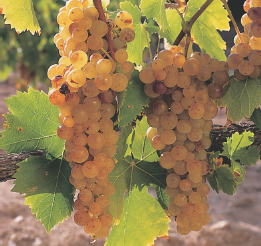
Muscat is the most protean of vines, and exists in many local variants around the world. The ‘standard’ colour of the berries may be white – though golden would be a better description – but many Muscats have pink, red or even brown berries.
Maturity charts
This is not a grape to age in bottle. Fresh, aromatic young Muscats will only lose their aroma and gain nothing in its place.
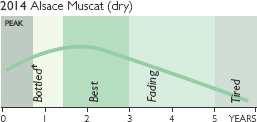
Alsace Muscat should be drunk young while the wine is fresh and floral.
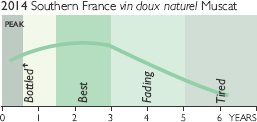
Another Muscat wine for which bottle age is not an advantage. Again, these wines lose aroma and freshness if kept longer than a year or two.
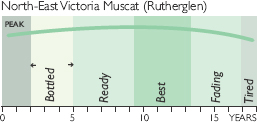
Bottled after years in barrel, these wines hardly change in bottle. Dark, sticky and super-raisiny, they will stay much as they are for up to a couple of decades.
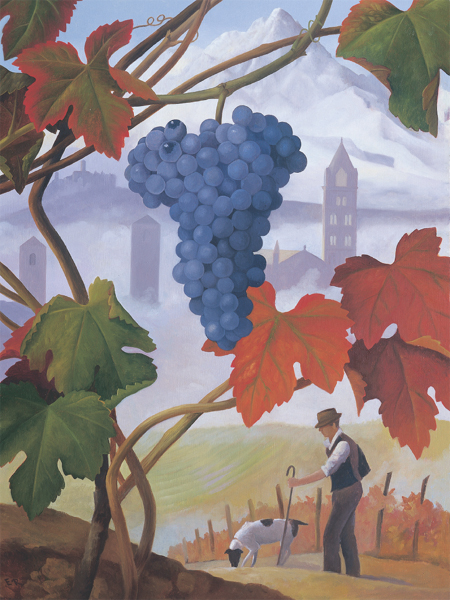
NEBBIOLO
Nebbiolo: from Grape to Glass
Geography and History here; Viticulture and Vinification here; Nebbiolo around the World here; Enjoying Nebbiolo here
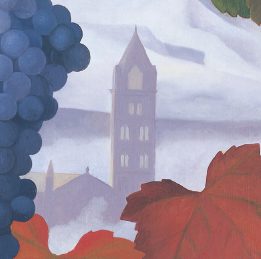
Dusty purple grapes and bright red leaves seen against a background of snow and fog – this is the Piedmontese town of Alba, famous for red wine and white truffles, in autumn. Against a backdrop of snow-capped Alps, the town’s medieval towers emerge from the late autumn fogs, or nebbie, that have given the Nebbiolo grape its name. In late autumn truffle hunters and their specially trained dogs set off into the oak forests bordering the vineyards in search of the revered delicacy.
I don’t know. I tried hard enough. But for years I just couldn’t get to grips with Nebbiolo. Oh, I used to leap at the chance to taste it – ideally in its Barolo or Barbaresco manifestations. I’ve hummed and hawed, nodded my head as I listened to my elders and betters, all the while trying to stifle a grimace on my face as my gums withered at the brutal assault of tannin and acidity from whatever wine they’d brought. Phew! Expectoration was never such sweet pleasure. And slowly the life would creep back into my battered palate. What were those people going on about, with all their reverential verbiage about tar and roses and blackberry and sloes. And how it was time for lunch.
Well, in my callow, know-all state of mind, I rarely stayed for the food. I should have done. For two reasons. First, many of the old-timers would never dream of bringing out their true treasures – their 20- and 30-year-old Riservas that had lain undisturbed at the back of the cellars since they were bottled – without platefuls of Piedmontese fare to accompany them. Barolo and Barbaresco, more than almost any other great wines, demand the convivial company of hearty food – bollito misto, pheasant, pigeon or hare, great chunks of beef smouldered in lakes of rich red wine sauce – and did I mention white truffles?
And, of course – age. That unfashionable, curmudgeonly state of mind that is known as age. Did I say 20 or 30 years? Certainly – and more when the vintage was perfect and the producer devoted to his craft. Then, at last the crusty, argumentative, abrasive nature of Nebbiolo slips quietly from the wine to reveal something old but magnificent, prepared to give of its all if the food is good and the company warm. Suddenly you sit bolt upright with the glass halfway to your lips – and there it is – the haunting, beautiful aroma of sloes, and blackberry, and roses, and tar.
So the old-timers were right. And thankfully, I did occasionally get lucky over time. But things have changed, too. There’s a new generation at work in Piedmont, who are too impatient to sit for 30 years waiting for the wines to bloom, but also too knowledgeable and world-savvy to think that it’s necessary. They used to say you had to age your Bordeaux for 20 years before you could drink it, before those beetle-browed Cabernet tannins mellowed in the autumn of their lives. They don’t now. They said the same in Hermitage, in Spain’s Rioja and Ribero del Duero, in the Port lodges of Portugal. They don’t now. In these areas, and many others where the traditional wine styles were rough or raw and only time could tame them, modern vineyard management, up-to-date winemaking techniques designed to maximize their flavour, scent and succulence not their sullen surliness, have transformed the wine styles. And, of course, let’s not forget climate change with its ongoing, and for now, effect on the ripeness levels in vineyards. Piedmont was late to get in on the act and the tannins and bitterness that lie embedded in the Nebbiolo’s skins and pips have proved a real challenge. But the fruit in the Nebbiolo, the scent and, increasingly in the 21st century, the optimistic beauty of youth is starting to show in the wines as well.
But don’t expect floods of great Nebbiolo. It’s still a tricky creature, whose favours are by no means universally granted. Just look at the New World. Why aren’t there far more plantings in California, in Australia, in South Africa or Chile? Why have plantings in Argentina dropped by two-thirds this century? Because even the toughest and most talented of the young guns rarely want to take on the challenge. But there are now some stars in Australia – most of the best fruit being grown in Victoria’s King Valley by guys with very Italian names – some in Argentina, and in Virginia, of all places. It’s just a couple of handfuls of courageous, creative wines. But do search them out. If their remarkable flavours and perfumes – parodoxical, argumentative, but arresting in their totally original beauty – are a sign of Nebbiolo’s future brilliance, the entire wine world should cheer.
GEOGRAPHY AND HISTORY
British wine merchants, it seems, ‘discovered’ the Nebbiolo wines of Piedmont in northwest Italy early in the 18th century, when Britain and France were at war and French wine was, to some extent, out of bounds to British drinkers. But the local duties were prohibitive, transport all but impossible, and the project of exporting Nebbiolo to Britain was abandoned. But if the opposite had happened, would Nebbiolo now be established in a much wider area than its Piedmontese stronghold? Surely the great wines of Burgundy, Bordeaux, sherry and port became famous through being disseminated along the world’s trade routes. France sold wine to all of northern Europe; Piedmont to almost no one. France became the undisputed world leader in wines while Piedmont became a connoisseur’s curiosity.
Nebbiolo is grown in North and South America and in Australia as well. But don’t let the map imply there are massive plantations. There aren’t. And very few of the smattering of examples have so far shown much class. But the beginnings are there, and the best wines in Australia and Virginia are showing tremendous acidity, fascinating scents and flavours, a greater approachability when young, but an inspiring ability to age. None of these New World titans pretends Nebbiolo is easy, but they are loving the challenge.

This is not to say that great Nebbiolo will never be made outside Piedmont. But it will take time to learn which are the best sites and which the best winemaking techniques to apply to which clones, since these matters are still heatedly argued over in Piedmont itself. It is a vine that bears more than a little resemblance to Burgundy’s Pinot Noir in its refusal to be treated casually in vineyard or winery; it took New World winemakers a generation to crack Pinot’s code. Nebbiolo will prove even more difficult, but the gauntlet has been thrown down.
HISTORICAL BACKGROUND
Genetically unstable vine varieties that mutate readily are often old varieties; and Nebbiolo can demonstrate considerable clonal variation. It has been with us for a long time.
What it cannot demonstrate, of course, is precisely when it came into being. The name is usually said to derive from the word for fog – nebbia – either because the grape ripens late, sometimes well into November, by which time it’s foggy, or equally likely because of the white bloom on the ripe grapes. It seems to have originated in the Novara hills, between Turin and Milan in northern Piedmont, and the first written record of it by name was in 1268, when ‘Nibiol’ is mentioned as growing at Rivoli, which is now a suburb of Turin. In 1303 Canale d’Alba names it as ‘nebiolo’, and in Petrus de Crescentiis’ 1304 Liber ruralium commodorum there is a mention of ‘Nubiola’. In the 15th century anyone in the commune of La Morra guilty of cutting down a Nebbiolo vine was liable to be fined, have a hand amputated or be hanged.
In the 19th century it was far more widely planted in Piedmont than it is today – and not just because it became possible to get rid of it without being hanged or having your hand chopped off. (Appellation laws in Europe have become more enlightened over the years, believe it or not.) When phylloxera wiped out the vineyards, the growers took the opportunity to replant with Barbera, which yields more generously and more reliably. Nebbiolo now covers only about 6 per cent of the vineyards in Piedmont, yet is far and away the most prestigious vine of the region, being the sole variety allowed in the majestic DOCG wines of Barolo and Barbaresco, from the Langhe hills around the town of Alba. It almost always hogs the warmest sites – and it needs them: its colleagues Barbera and Dolcetto can be picked and fermented before Nebbiolo is ready to harvest.

The commune of Castiglione Falletto with, sloping down from the village, part of the Rocche subzone. Top Barolo these days comes from single vineyards, or crus, within the subzones, though a great deal of local politicking remains to be done before everyone agrees on an official classification.
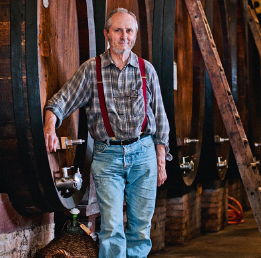
Mauro Mascarello seems to epitomize tradition as leans on his giant botti, but in fact he was a great modernizer in the 1980s, who has now seamlessly married good tradition with good modernity.
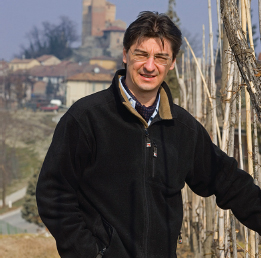
Davide Rosso makes some of Barolo’s most balanced, attractive – and generally affordable – wines despite being based in Serralunga d’Alba, famous for powerful, long-lasting, sturdy reds.
VITICULTURE AND VINIFICATION
Nebbiolo is a grape at odds with its reputation. For many Barolo is the epitome of the brutal, tannic wine that needs years in bottle before it is tamed into relative politeness. Modern Barolo, and modern Nebbiolo, is a very different creature. It is softer and more forward but still keeps its tannic rasp. It can exhibit a divine rose petal scent, black chocolate and prunes richness, tarry intensity – all lovely, but all in danger of becoming just one more braggart on the new-oaked circuit of the international superstars. I have to say that almost without exception I prefer the new styles. And yet, shining among a sludge of bitter, fruitless old-style Barolos and Barbarescos, I have tasted a few ancient jewels far more thrilling, more individual, more indelible in taste, than anything the modernists have yet produced.
Climate
Nebbiolo is extremely fussy about its climate, and getting the climate wrong is probably the biggest single reason why so few New World Nebbiolos have been successful. In Piedmont it needs the best exposed, south- and southwest-facing sites, at altitudes of between 150 and 300m (500 and 990ft). Higher than that is too cool. Nebbiolo suffers horribly from colatura (which sounds like a plague of sopranos, but is merely poor fruit set at flowering) and so must be sheltered from cold and wind, especially since it is the earliest of all Piedmontese varieties to bud. Wet weather at flowering doesn’t help, either.
Nor does wet weather in September and October help. These are relatively rainy months in the Langhe and Roero hills of southern Piedmont, and it is notable that the best Nebbiolo vintages are those in which September is fairly dry. Weather conditions in spring and summer affect the quantity of a vintage; weather after véraison affects quality.
The Piedmont climate is markedly continental, with hot summers and cold winters, and its shortish growing season means that Nebbiolo (early budding, late ripening) is at the limit of its cultivation here. Experience in Australia, however, suggests that planting in much warmer climates doesn’t work. Research there points out that Piedmont has a curiously contradictory climate: continental, but with relatively little variation from year to year. Australian growers trying to match Piedmont’s growing conditions won’t have it easy.
Soil
Nebbiolo seems to be able to cope with a wide variety of soils in northwest Italy, though it produces its greatest quality only on the clay and limestone of the Albese, the area around Alba, on the south bank of the Tanaro river. The soil type, as well as the climate, is reflected vividly in the wine: soils in Roero, on the other side of the Tanaro from the Langhe, are sandy, with a neutral or slightly acid pH, and produce earlier-maturing wine. The hills between Novara and Vercelli, where lighter Gattinara and Ghemme come from, are porphyry and acidic; Valtellina’s soils are schist, and those of the lower Aosta Valley are granitic. Good drainage is important, and the presence of ores such as potassium and magnesium can affect the style of the wine.
Cultivation and yields
Around 40 different clones of Nebbiolo have been identified, but the three that are most widely grown are Lampia, Michet and Rosé, though the last is genetically different and is therefore presumably a different variety. Lampia has large three-lobed bunches with good colour and yields well, sometimes too well. Michet has smaller, more compact bunches and gives lower yields; it is a genetic mutation of Lampia, the mutation having been caused by a virus. Rosé is paler in colour, as its name suggests, and is unpopular for this reason. Nebbiolo is often problematically light in colour even without this clone. New clones based on these three have been developed, and almost all growers prefer to grow a mix of clones rather than confine themselves to one or two. Different regions have their specialities, too: in Aosta and the far north of Piedmont the local clone is called Picoutener, or ‘tender stem’, and in Valtellina, in Lombardy, it is the Chiavennasca.
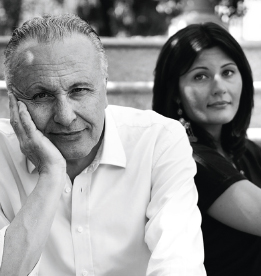
Angelo Gaja was one of the first in Piedmont to turn to international winemaking practices, determined to make the world take notice of his Barbaresco. He was also one of the first to charge sky-high prices – and achieve them. And he’s a fanatic for detail: the extra-long corks he specifies proved such a problem for restaurant wine waiters that he had to become the Italian agent for Screwpull. You don’t normally catch him looking as relaxed as this, but he and his daughter Gaia now make a formidable pair.
Unless weakened by viruses Nebbiolo is vigorous, but since the basal buds are not very fertile it is usual to leave a long cane with ten to 12 buds on a guyot training system. But the better growers of the Langhe maintain that about 40–60 quintals (4–6 tonnes) per hectare is the maximum for top quality, even though the DOCG regulations allow 80 quintals. So they might cut the cane back to seven to ten buds. A smaller crop also has the advantage, in this marginal climate, of ripening earlier.
At the winery
In terms of vineyards and clones, the Nebbiolo of Barolo is probably further ahead than the Sangiovese of Tuscany – but then it had less far to come. The quality of the grapes is generally very good. All the controversy hinges on the winemaking. In Barolo (and, indeed, in Barbaresco) you are a traditionalist or a modernist. Time was when the divisions between the two were as sharp, and as sharply felt, as between Montague and Capulet. One winemaking family even built a wall physically to divide the traditionalist sibling from the modernist.
Now modernism has affected (infected, some might say) most of the traditionalist producers to some extent. Most Barolo is, accordingly, more forward and fruity than it was, but that is a question of degree. Let’s look at Barolo winemaking as it was before anything changed.
Nebbiolo is late ripening, and so by the time it is picked the weather, and the cellars, are getting cold. Starting the fermentation was not easy in the past: it could take eight or 15 days before there was any sign of action in the must. Delayed fermentations like this, in old wood or cement where hygiene was not absolute, could lead to bacterial infection. That was the cause of the off-flavours that necessitated opening the bottles 24 hours in advance. Once the fermentation began the temperature of the must could rise extremely high, to 35° or 38°C (95° or 101°F); this tended to reduce aroma and fruit flavours. But the weather was getting colder all the time: the fermentation would slow, and drag out for two or three months. The amount of tannin extracted was enormous, and had to be softened by leaving the wines in big old casks. or botti, for five years or more, which in turn could cause problems of volatile acidity.
Today’s traditionalism is based on long macerations of 20 to 30 days and long aging. Technical improvements such as starting the fermentation swiftly, and hygiene, can be taken for granted. Modernism, meanwhile, centres on the use of barriques, on shorter fermentation and maceration times and on earlier bottling. The idea is that with temperature control you can keep the temperature down to 28° or 30°C (82° or 86°F) to preserve fruit and aroma. Rotovinifiers are fashionable in Barolo: 1996 was the first vintage in which they were generally used. They give better extraction, so that a short maceration of seven to 10 days may be all that is necessary. Heating the cellars towards the end of the alcoholic fermentation will encourage the malolactic one, which in turn means less aggressive acidity.
The point of small oak barriques, for fermentation, aging or both stages, is not to add tannin but to soften the wine for two years or so with their gentle oxidative effect. But they do, of course, give a certain saminess to the wines. Barolo is cleaner than it was, easier to understand, fruitier, more supple and less unpredictable to buy and drink. But new oak can cover the wonderful rose scents of Nebbiolo with its vanilla richness. And tamer wines, by definition, are less exciting wines. Modernism is both a gain and a loss.
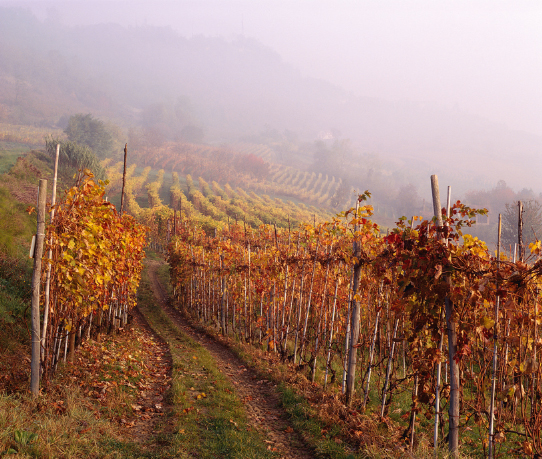
If Nebbiolo derives from nebbia, Italian for ‘fog’, this picture of La Morra, hidden in an autumn fog, says it all. Nebbiolo is such a late ripener, fog frequently coats the vineyards before and during harvest.
BLENDING NEBBIOLO
In Piedmont most Nebbiolo is made as a varietal wine. Barolo is 100 per cent Nebbiolo; so is Barbaresco. Across the Tanaro river from Barolo and Barbaresco comes Roero which is supposed to contain between 2 and 5 per cent Arneis, but often doesn’t these days. In Gattinara, Ghemme, and the less familiar wines of northern Piedmont, blending is also officially required, the other grapes being Vespolina, Croatina and Bonarda, but not all producers opt for obeying the law on this point. In Lombardy’s Valtellina, Nebbiolo (called Chiavennasca here) may be blended with Rossola, Pignola, Prugnolo, Pinot Nero and Merlot for basic Valtellina, and with other red grapes up to 5 per cent for Valtellina Superiore. That’s the dull bit.
The interesting bit, for those curious about how things are really done, as opposed to how they’re supposed to be done, is whether or not other grapes are blended into Barolo and Barbaresco. Officially, of course, this is completely forbidden, and if you want to add a dash of Barbera or whatever, you must demote the wine to Vino da Tavola. But some tasters have noted smells of Cabernet Sauvignon or Syrah in Barolo; others have pointed to unusually deep colours in wines from this rather poorly coloured grape. Some go so far as to point out that Barbera was always the traditional blending grape in Barolo, because of its greater colour and lower acidity. Purely hypothetical, of course. No one ever admitted to doing it, though an amused smile could be seen playing on the lips of some successful producers.
In 1998 there was a proposal to make it legal to add 10–15 per cent of other grapes to Barbaresco – the grapes could have been Cabernet Sauvignon, Merlot or anything else. They would have pepped up the wine in a bad vintage, and made it rounder and richer; more saleable, in other words. The growers of Barolo were invited to join in the party, but they declined, and then the idea got a bad press in the Italian media. It was then discarded in the interests of (as the official line went), maintaining the individuality of Barbaresco in the face of increasing international standardization. Well, good for them for making a stand. Especially if, as some commentators believe, they’re doing it on the quiet anyway.
NEBBIOLO AROUND THE WORLD
Attempts at making Nebbiolo worldwide seem so far to be having only limited success, and while it’s true that even in its native Piedmont quality can vary hugely, it is Barolo that is the ultimate target of every ambitious producer in California or Australia. At the moment I’d be thrilled if most of them could make anything as good as simple Langhe Nebbiolo.
Italy
Nebbiolo is extremely sensitive to differences in soil and mesoclimate, yet pinpointing the differences between the wines from neighbouring Barolo and Barbaresco is not easy. Barbaresco is said to be the lighter, softer wine, though differences between communes in Barolo can be as great as differences between Barolo and Barbaresco. The regulations are a little less stringent in Barbaresco: slightly shorter minimum aging (21 months, including nine months in oak for normale, compared to Barolo’s three years total, and one year in wood; Barbaresco Riserva must have 45 months’ total aging, compared to Barolo Riserva’s four years and nine months) and a slightly lower minimum alcohol level (12.5 per cent to Barolo’s 13 per cent).
Within Barolo – which is a tiny zone, though three times the size of Barbaresco – Serralunga is the latest-ripening commune. Picking begins here some 15 days after it starts in La Morra, even though the latter is higher; the closer proximity of the river in La Morra makes for a slightly warmer mesoclimate. The wines of Serralunga are among the weightiest in the Barolo region; those of La Morra are at the other extreme: silky, and appealing when young. The other communes in the Barolo zone are Castiglione Falletto, Grinzane Cavour, Monforte, Novello, Verduno, and of course Barolo itself. Castiglione Falletto makes concentrated, powerful wines of great finesse; Monforte wines are firm and long-lived; Barolo wines combine structure with supple fruit. Well, that’s the theory anyway.
The main difference in soil is between the sand and limestone in the east, in the communes of Castiglione Falletto, Monforte and Serralunga, which give burly, aggressive wine, and the chalky marl in the west, in La Morra and Barolo, where the wines are less robust and more perfumed. But clay is found everywhere, and it is the clay of Barolo (and Barbaresco, too) which gives the wines their remarkable tannin. Elsewhere Nebbiolo is seldom quite as tannic.
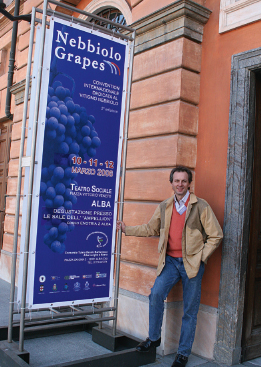
Luca Paschina grew up in the Nebbiolo vineyards of Piedmont, but now leads the way at Virginia’s Barboursville Vineyards in showing the variety’s potential in North America.
The best (and certainly the most expensive) wines are from single vineyards or crus. There is no established cru system, though this has been mooted for a while, and vineyard names are used on labels. So far only individual subzones in the communes are legally recognized.
In theory Nebbiolo is planted on the best sites here. But by 2000 optimism was running so high in the region that other, less suitable sites were also being planted – the lower slopes, which are usually given over to Barbera, or vineyards at too high an altitude, or with poor exposure. The same thing has happened before, in times of boom; such vineyards were abandoned later, and will no doubt be abandoned again.
Roero has traditionally made lighter, less tannic, more supple wines than those from Barolo and Barbaresco south of the Tanaro river. Occasional examples are bigger and more complex, however. Nebbiolo d’Alba, from the same area, is simpler and earlier-maturing; Langhe Nebbiolo is a catch-all DOC that covers anything that doesn’t fit into the other DOCs.
In the Novara and Vercelli hills in northern Piedmont, Nebbiolo is known as Spanna, and in Carema it goes by the name of Picoutener. Gattinara and Ghemme, from the former, tend to be somewhat earthy; Carema can be more perfumed, but also less ripe. In Valtellina Nebbiolo becomes Chiavennasca, and all too often becomes a touch stringy. Greater ripeness would help, and perhaps lower yields. Frankly, I think a bit of blending with softer, earlier-ripening varieties would also help, but there you go. There is also an Amarone-type red called Sfursat or Sforzato which, when it’s good, is very good. But the wines from here are seldom exported further than Switzerland.
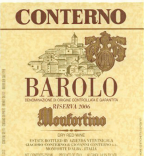
Giacomo Conterno
Giacomo Conterno is an ultra-traditional Barolo producer and produces Nebbiolo wines that will last for decades.
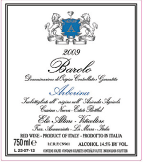
Elio Altare
A modernist par excellence, Altare seeks balanced wines that are supple in youth yet will age. This cru spends time in both barrique and botte.
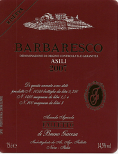
Bruno Giacosa
Giacosa is a semi-traditionalist: his macerations are long, but shorter than they used to be, and he ages his wines in French, not Slavonian, botti.
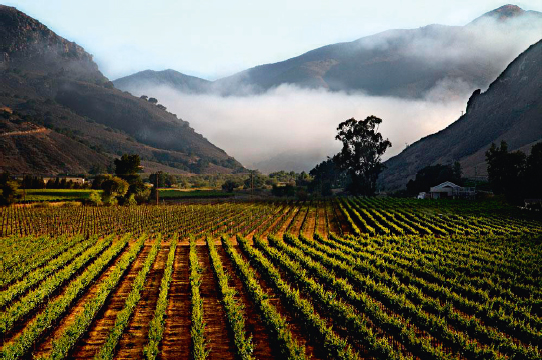
Those fogs again. This is the Bien Nacido vineyard in California’s Santa Maria Valley. It’s one of California’s coolest sites, significantly aided by the morning fogs that roll in off the Pacific and blanket the vines. Frequently they don’t clear till the afternoon, when the brighter sunshine attempts to make up for all those lost hours. Nebbiolo thrives in the fogs of Piedmont in northern Italy. Attempts to find suitable sites elsewhere in the world have met with little success, but Jim Clendenen of Au Bon Climat makes a fine Nebbiolo from Bien Nacido fruit, and it just might have something to do with those Pacific fogs.
Some is grown in Lombardy for Franciacorta Rosso, for which it is blended with Cabernet Franc, Barbera and Merlot.
Australia
Nebbiolo should have great potential here, but finding the right sites for this very site-specific vine has been tricky. Clones have also been a problem, usually giving too much vigour and not enough colour. According to research in Australia by Alex McKay, Garry Crittenden, Peter Dry and Jim Hardie, Margaret River (Western Australia) and Mornington Peninsula (Victoria) can match the Langhe in terms of sunshine hours, relative humidity and rainfall. If heat summation is to be matched, however, then Clare Valley, Adelaide Hills, Mudgee and Bendigo might be appropriate. Despite the problems, S.C. Pannell produces some of the greatest non-Italian Nebbiolo I have tasted.
USA
Given the Italian influence in establishing America’s vineyards, there was a reasonable amount of Nebbiolo in the old days. But it never had much success. I’ve done a tasting of just about every varietal Nebbiolo in California, mostly produced by a variety of old codgers I’d never heard of, and I might as well have stepped back 50 years, the wines were so lumpen and stewed. A bit like traditional Barolo, perhaps, but not at all like modern Barolo. It’s strange: you’d expect California to be able to apply first-rate winemaking principles to the grape, and you’d have thought they could identify the right location and viticultural techniques to get concentration, colour and ripe tannins in the finished wine. But no – in this Cabernet- and Merlot-obsessed world, little thought has been given to the notoriously moody Nebbiolo. There are only about 200 acres/70ha of Nebbiolo in California and most of the original plantings are scattered forlornly about the bulk-producing Central Valley, but with some in the Sierra Nevada foothills, Paso Robles and Santa Barbara. The best wine so far is from Jim Clendenen at Au Bon Climat in the Santa Maria Valley; he has planted lower-yielding clones and sanguinely talks about moving from making good wine to great wine – next year. And next year. The Cal-Ital cooking movement, a fusion of Italian and West Coast styles, should have given Nebbiolo a shove, but, I could have told them: Nebbiolo doesn’t like being pushed around.
Nebbiolo has been equally problematical in Washington State, where the climate ought at least to be warm enough for it. Probably its greatest success has been in the warm yet humid conditions of Virginia, where Barboursville and Breaux have produced a few superb examples.
Rest of the world
Experiments with Nebbiolo in Chile have produced wines with poor colour and high acidity, perhaps partly because the clones were less than ideal. Argentina has a little planted, but yields are high. Mexico has made some rather attractive examples in Baja California, up towards the US border. Austria’s Mittelburgenland has a little.

Matteo Correggia
The Roero hills are across the river Tanaro from Barolo and Barbaresco. Their wines make up for less depth and power with elegance and enticing scent.

Nino Negri
This 100% Nebbiolo, aged in barrique, is one of the stars – in fact, it’s probably the greatest star – of the Valtellina region in northern Lombardy.
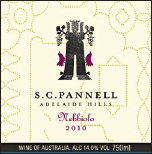
S C Pannell
Steve Pannell made the first Nebbiolo from outside Piedmont that persuaded me the grape was capable of great things worldwide.
ENJOYING NEBBIOLO
The traditional view is that not only does Nebbiolo age well, but that it positively must be aged for decades if it is to be even drinkable. Well, there’s no doubt Nebbiolo can age well. If it had the ripeness in the first place and wasn’t wrecked by incompetent winemaking – this still happens, but far less than before – Nebbiolo should last a decade at the least. But tough, dry Nebbiolo will usually remain just that – tough and dry, but older. However, you don’t have to age modern Nebbiolo. The grape actually has a rather beautiful perfume and beguiling black cherry, sloes and damson fruit when carefully made. Add a splash of new oak to this and you’ve got a very attractive though sturdy drink that is challenging but enjoyable at only three or four years old.
The lighter sort of Nebbiolo – from Carema or Langhe – can certainly be drunk within a few years of the vintage and will last from five to eight years or so; perhaps longer in the case of the most concentrated Caremas. Gattinara is slower maturing and longer lived: it often needs six to eight years before it reaches its best, and will live in bottle for another 10 or more. Roero is nearly always much lighter, and should be drunk within a few years, but you’ll sometimes find weightier examples from adventurous producers.
Barbaresco is supposed to be lighter than Barolo, but there are as many differences between wines and communes in Barolo as there are between Barolo and Barbaresco themselves. Lighter wines from both regions may be at their best before their 10th birthday; the top, most concentrated cru wines should probably not be opened until they are about eight years old, and will easily live for 20 or 30 years.
The wines made in Australia and California so far have aged relatively rapidly compared to the wines of Piedmont, but Virginia’s Nebbiolo ages rather well.
The taste of Nebbiolo
The classic description of the scent of Nebbiolo is tar and roses, immortalized in Michael Garner’s and Paul Merritt’s 1990 Barolo study of the same name. It sounds an improbable combination, but then Nebbiolo is an improbable grape, combining as it does high levels of tannin with high acidity and (in its best examples) some of the most complex, exotic scents to be found on any red wine.
To tar and roses one might add cherries, damsons and mulberries, leather, herbs both fresh and dried, spice, liquorice and dried fruit. The tannins mature to a powdery softness; the acidity should be ripe, and there should be sufficient weight of fruit and alcohol to balance the tannin and acidity while the wine ages. There is often a certain austerity about Barolo and Barbaresco, though this is less common in wines from modernist producers where the fruit is fleshier and rounded out by aging or fermentation in new oak barriques. Even in the most traditionalist examples, mature Barolo should be supple.
It is a pity if Barolo or Barbaresco smells strongly of new oak. Any wine from anywhere in the world can do this: a whiff of new oak is one of the easiest of all aromas to achieve in the winery. But only Nebbiolo has this extraordinary, haunting aroma. To mask it with add-on scents is to lose the point of the wine completely.
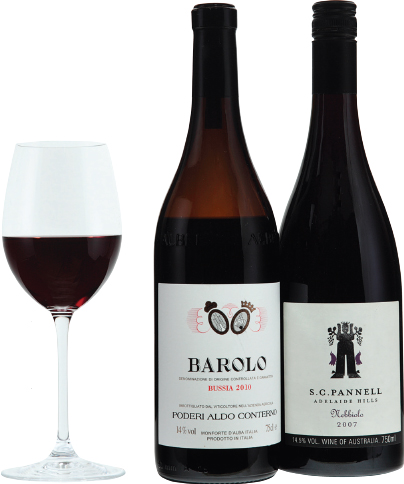
Bussia is one of Barolo’s most renowned vineyards, divided into three distinct parts, with Aldo Conterno the most famous producer. The grapes for this wine come from sheltered southwest-facing vines angled towards the afternoon sun and looking out towards the village of Barolo itself. Steven Pannell proves it is just possible to make great Nebbiolo away from Italy by producing scented, stony, appetizing wines from grapes grown in the northern part of Adelaide Hills.
MATCHING NEBBIOLO AND FOOD
Fruity, fragrant, early-drinking styles of Nebbiolo wine are best with local salami, pâtés, bresaola (wind-dried beef sliced wafer-thin) and lighter meat dishes. The best Barolos and Barbarescos need big, substantial food to stand up to them; bollito misto (a hotchpotch of boiled meats served with a green garlicky sauce), jugged hare, spiced beef casseroles and brasato al Barolo (a large piece of beef marinated then braised slowly in Barolo) are just the job in Piedmont, or anywhere else for that matter.
CONSUMER INFORMATION
Synonyms & local names
Also known in Piedmont as Spanna (especially in the north in the provinces of Novara and Vercelli) and Picoutener (especially in Carema and the Aosta Valley); and as Chiavennasca in Lombardy.
Best producers
ITALY/Piedmont/Barolo/Barbaresco/Langhe Nebbiolo/Nebbiolo d’Alba/Roero Alario, Fratelli Alessandria, G Alessandria, Altare, Azelia, Produttori del Barbaresco, Boglietti, S Bolmida, Bongiovanni, Brezza, Bricco Maiolica, Brovia, Burlotto, G Canonica, Cappellano, Cascina Chicco, Cascina Fontana, Cascina Luisin, Cascina delle Rose, Ceretto, Cigliuti, Clerico, Aldo Conterno, Giacomo Conterno, Conterno-Fantino, Corino, Correggia, Stefano Farina, Fenocchio, Fontanabianca, Gaja, Bruno Giacosa, Elio Grasso, Marchesi di Gresy, Lano, Poderi Marcarini, Manuel Marinacci, Bartolo Mascarello, Giuseppe Mascarello, Massolino, Monfalletto-Cordero di Montezemolo, Fiorenzo Nada, Castello di Neive, Andrea Oberto, Oddero, Vigneti Luigi Oddero, Paitin, Parusso, Pelissero, Pio Cesare, Pira, E Pira di Chiara Boschis, F Principiano, Punset, Renato Ratti, Revello, F Rinaldi, G Rinaldi, Rizzi, Roagna, Albino Rocca, Bruno Rocca, Roccalini, Rocche dei Manzoni, G Rosso, Sandrone, M Sebaste, Sottimano, La Spinetta, Trediberri, Vajra, Castello di Verduno, Vietti, G Voerzio, R Voerzio; Lombardy/Valtellina ArPePe, La Castellina, Enologica Valtellinese, Fay, Nino Negri, Nera, Rainoldi, Conte Sertoli Salis, Triacca, .
USA/California Clendenen Family Vineyards, Renwood, Viansa; Washington State Cavatappi, Morrison Lane.
MEXICO L A Cetto.
AUSTRALIA Coriole, Crittenden, Dromana, First Drop, Happs, Henschke, Maglieri, S C Pannell, Pizzini, Primo Estate, Scaffidi, Trentham Estate.
SOUTH AFRICA Morgenster, Steenberg.
RECOMMENDED WINES TO TRY
Twenty classic Barolo wines
Altare Brunate
Azelia San Rocco
Brovia Villero
Domenico Clerico Ciabot Mentin Ginestra
Aldo Conterno Gran Bussia
Giacomo Conterno Riserva Monfortino
Luigi Einaudi Nei Cannubi
Fenocchio Pianpolvere Soprano
Bruno Giacoso Villero di Castiglione Falletto
Elio Grasso Ginestra Vigna Casa Maté
Bartolo Mascarello Barolo
Giuseppe Mascarello Monprivato
Monfalletto-Cordero di Montezemolo Enrico VI
Francesco Rinaldi Cannubbio
Roagna La Pira
Giovanni Rosso Cerretta
Luciano Sandrone Cannubis Boschis
G D Vajra Albe
Gianni Voerzio La Serra
Roberto Voerzio Cerequio
Ten classic Barbarescos (or equivalent)
Produttori del Barbaresco Barbaresco
Cascina Luisin Barbaresco
Gaja Barbaresco
Bruno Giacosa Barbaresco Santo Stefano
Marchesi di Gresy Barbaresco Martinenga Gaiun
Castello di Neive Barbaresco
Punset Barbaresco
Albino Rocca Barbaresco Vigneto Brich Ronchi
Bruno Rocca Barbaresco
Roccalini Barbaresco
Fifteen other Italian wines
Silvano Bolmida Langhe Nebbiolo
Brezza Nebbiolo d’Alba
Brovia Nebbiolo d’Alba
Burlotto Nebbiolo d’Alba
Carema Cantina dei Produttori Nebbiolo di Carema
Michele Chiarlo Langhe Barilot
Aldo Conterno Langhe Il Favot
Conterno-Fantino Langhe Monprà
Matteo Correggia Nebbiolo d’Alba la Valle dei Preti
Luigi Ferrando Carema Black Label
Mauro Franchino Gattinara
Gaja Langhe Sperss
Nino Negri Valtellina Sfursat 5 Stelle
Luigi Oddero Langhe Nebbiolo
G D Vajra Langhe Nebbiolo
Five non-Italian Nebbiolo wines
Barboursville Reserve Nebbiolo (Virginia)
Breaux Nebbiolo (Virginia)
Clendenen Family Vineyards Nebbiolo (California)
S C Pannell Nebbiolo (Australia)
Pizzini Nebbiolo (Australia)
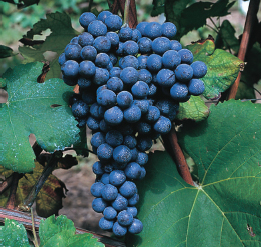
Delinquent or just misunderstood? Nebbiolo is proving to be one of the most frustrating grapes to grow outside its Piedmont heartland. Growers are examining the minutiae of soil and climate, but the grape still obstinately refuses to play ball.
Maturity charts
Even Barolo is drinkable much earlier than it used to be. Tannins are softer these days, and the fruit is more to the fore.
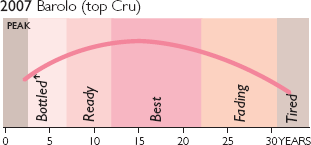
2007 was a hot, dry year for Barolo, but the vines in the best vineyards thrived and the wines are deep and concentrated.
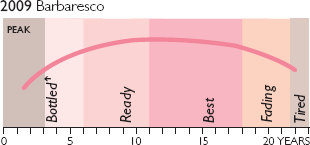
Barbaresco had a good vintage in 2009 – a warm and dry summer producing rich but balanced reds to drink or age.
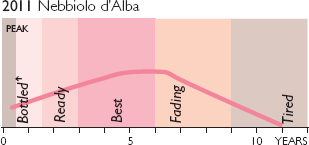
The hot dry 2011 harvest produced only small quantities of ripe lush wines for early drinking.
NEGOSKA 
Soft, richly fruity grape found in northern Greece and blended in small quantities with the much tougher, more acidic Xynomavro (see here) to make Goumenissa. Best producer: (Greece) Boutari.
NEGRA MOLE 
The most important grape of the Atlantic islands off the coast of Africa, either as Negramoll in the Islas Canarias or as Tinta Negra Mole on Madeira (Tinta Negra since 2000). It even reaches the Azores, where it is called Saborinho. Mole means ‘soft’ and though this may refer to the berries, the vines are generally light, vaguely aromatic – and soft. It is identical to Mollar, a variety known in Andalucia since the 18th century.
NEGRAMOLL 
This is the new name for Tinta Negra Mole, a high-yielding vine grown on the Portuguese island of Madeira which had all but replaced the four noble varieties of Sercial, Verdelho, Bual and Malvasia or Malmsey. Efforts to revive the production of these four continue, and they have increased to around 12 or 14 per cent of the vineyard. Negramoll (or Tinta Negra) is the basis of most Madeira wine and covers about 68 per cent of the total plantings. The discrepancy is explained by the presence of hybrids.
Only since 1993 has it been required by law that any bottle bearing the name of one of the noble varieties should contain at least 85 per cent of that grape; nowadays, if the label does not mention a grape name, it will have been made from Negramoll.
Wine from the four noble varieties is superior in quality to that from Negramoll but if Negramoll were cropped at the 4 tonnes per hectare that is usual for the noble varieties, instead of the 10 tonnes or more (sometimes much more) that it is currently encouraged to give, its quality might be much improved. It is picked early, at 9.5–10 per cent potential alcohol, because viticultural practices on Madeira tend to encourage rot. It is, however, pretty disease-resistant, and this was the reason it became so widely planted on Madeira after phylloxera. The Madeira shippers are trying hard to get the law changed so that they may put the name of Negramoll on Madeira labels since several producers such as Barbeito are turning it into serious, well-aged Madeira. It is permitted rather than recommended for table wines.
Although initially thought to be an unlikely crossing of Pinot Noir and Grenache – where would that have occurred? – it now seems to be an ancient variety from Cadiz in Andalucia, a port from which many ships would depart and make a stop in Madeira en route to the Americas. It’s also found on the Canary Islands where it has long been called Negramoll and, as Saborinho, in the Azores – again, trading routes would explain that.
NÉGRETTE 
A grape of southwest France, found in the Côtes du Frontonnais appellation, where it must constitute 50 to 70 per cent of the blend. Négrette contributes a wonderfully silky texture and raspberry perfume to the best wines. It is also found in other wines from north of Toulouse. Common blending partners include Fer and Syrah, but inevitably there is a fair bit of Cabernet around as well, which tends to hijack the style of wines to which it is added. Admittedly, Négrette’s tendency to a slightly high level of volatile acidity means it sometimes needs a bit of stabilizing, but too often Cabernet ejects the silky Négrette baby with the bath water. Négrette is usually best drunk young and without oak aging. The hot, dry climate of the region suits the grape well – it gets botrytis bunch rot rather easily in wet conditions. Best producers: (France) Bellevue-la-Forêt, la Colombière, Ferran, Dom. Montauriol, la Palme, le Roc.
NEGROAMARO 
A rather odd-tasting grape found in the south of Italy, particular in Puglia. It could hardly be more Italian in its combination of perfume and bitterness – the name means ‘black bitter’ and the wine is indeed very dark in colour. It is sturdy in structure and can be both slightly farmyardy in flavour and have a distinctly medicinal edge. The combination takes a bit of getting used to but is certainly interesting.
It is far more easy to appreciate, however, if blended with a little of the far more scented, succulent Malvasia Nera (see here). Some of Puglia’s best reds, notably Salice Salentino, feature this double act. Best producers: (Italy) Giuseppe Calò, Michele Calò, Candido, Leone de Castris, Pervini, Taurino, Vallone.
NEGRU DE DRAGASANI 
A new Romanian crossing which seems promising. One of its parents is Saperavi, one of Eastern Europe’s best grapes (see here).
NERELLO 
A Sicilian grape that comes in two versions, Nerello Mascalese and the less commonly planted and less good Nerello Cappuccio. Both contribute high alcohol to a blend, though they lack the concentration of Nero d’Avola, with which they are usually blended. Even so, the growers around Mount Etna are getting very excited by the wines’ transparent character, which allows the sometimes ferocious lava-esque minerality and chewy herb flavours to shine through. Best producers: (Italy) Benanti, Palari, Duca di Salaparuta.
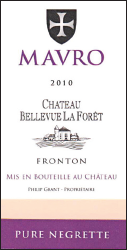
Château Bellevue-la-Forêt
Negrette is usually blended with Syrah or Cabernet Sauvignon, so it is a a delight to find this 100% ‘Pure Negrette’ taking the chance to express the variety’s delightful silky texture and lush but acidic raspberry fruit.
NERO D’AVOLA 
Increasingly fashionable Sicilian grape which is leading the revival in Sicilian quality reds due to its ability to provide deep colour, robust but gentle texture and an irresistible combination of floral scent and blackberry and black cherry fruit. It can benefit from a little oak aging, but doesn’t need it, and for such an immediately appetizing grape variety, matures surprisingly well. One or two growers in Australia and California are trying it out, and they should succeed. Best producers: (Italy) Abbazia Santa Anastasia, Calatrasi, COS, Cusumano, Donnafugata, Morgante, Planeta, Duca di Salaparuta, Spadafora, Tasca d’Almerita.
NERO DI TROIA 
This is the new name for Uva di Troia, a grape found in central and northern Puglia. It can be complex and can age well if properly handled. It is part of the blend in several DOCs, and brings deep colour and substantial alcohol to the blend, but its potential for quality is outweighed, as far as most growers are concerned, by its low yields. Best producers: (Italy) Rivera, Santa Lucia, Torrevento.
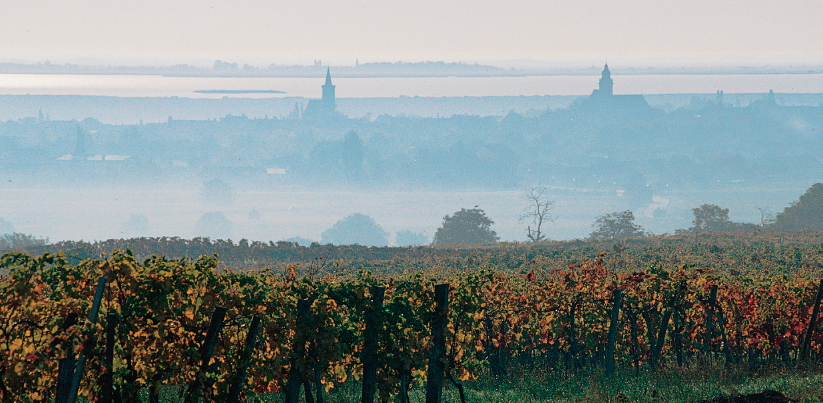
Looking across the Feiler-Artinger vineyards to the little town of Rust and the shallow Lake Neusiedl, you can almost feel the sticky late season warmth as the humid mist hovers over the vineyards and the lake. Noble rot attacks the vines naturally every year, making this the world’s most consistent supplier of intensely sweet wines. The Neuburger grape makes a fairly broad-boned dry white, but is very susceptible to noble rot and is best suited to syrup-sweet wines.
NEUBURGER 
Austria’s Neuburger grape gives rich, spicy wines, sweet, semi-sweet or dry, which are not unlike a more intense version of Pinot Blanc, although in fact it is a cross between Austria’s Roter Veltliner and Silvaner. The broad, flat neutrality of Silvaner might explain Neuburger’s general lack of the thrill factor. It is happily susceptible to noble rot and its best wines are sweet, but dry or off-dry versions also age quite well in bottle, becoming nicely honeyed and nutty, but always lacking a little zing. Best producers: (Austria) Beck, Feiler-Artinger, Haider.
NIAGARA 
Vigorous, high-yielding hybrid grown especially in New York State and Michigan, where its ability to withstand winter cold comes in useful. It was bred in 1872 from a crossing of Concord (see here) and Cassady, and has a strong dose of the so-called ‘foxy’ aromas that mark many Vitis labrusca grapes. It is popular in Brazil.
NIELLUCCIO 
This robust, tannic Corsican grape is identical to the Sangiovese of Italy. It is generally blended with the less substantial though more complex Sciacarello: the two of them constitute the best of Corsica’s red grapes. Other varieties on the island are often those, like Cinsaut and Carignan, which were planted by immigrants returning from North Africa in the 1960s. However, these are on the decline, and Nielluccio and other indigenous grapes are on the increase. So, inevitably, are international varieties.
Nielluccio is more widely planted than Sciacarello, and has its heartland in Patrimonio in the North; the chalky clay here suits it particularly well. It is also grown in the South, around Porto Vecchio. Its acidity and tannins are good, though the tannins can be somewhat harsh and need careful handling. It also makes excellent rosés. Best producers: (France) Alzipratu, Antoine Aréna, Orenga de Gaffory, Leccia.
NOSIOLA 
An unusually neutral grape found in Trentino-Alto Adige – unusual because most of the white vines in this part of northeastern Italy have more character. Nosiola is crisp, light and ephemerally aromatic, although some producers are now finding a nutty depth in it. It is probably at its best in terms of personality when made into Vino Santo, the Trentino sweet wine made from dried grapes. It is grown only in small and diminishing quantities. Best producers: (Italy) Concilio Vini, Pojer & Sandri, Pravis.
NOUVELLE 
A South African crossing of Crouchen and Ugni Blanc, which when picked slightly underripe gives a pungent leafy, green peppery flavour that can add welcome freshness and tang to fat or soft examples of Sauvignon Blanc. Some critics in South Africa decry it, but I think it’s rather a useful performer.
NURAGUS 
Prolific Sardinian vine which makes light, neutral, perfectly attractive and perfectly unmemorable wine. Best producers: (Italy) Argiolas, Dolianova, Santadi, Trexenta.
OJO DE LIEBRE 
The Catalan name for Tempranillo (see here). The name means ‘hare’s eye’.
ÖKÜSGÖZÖ 
Turkish grape which, when blended with Bogazkere, is responsible for most of the country’s good reds. On its own it is bright, fresh and aromatic
OLASZ RIZLING 
The Hungarian name for Welschriesling (see here). For all its poor reputation in some countries, the grape can make very attractive wine if well handled. Hungary’s problem was that it exported mainly the dirtier and cheaper examples, thus comprehensively destroying the grape’s reputation in its export markets.
ONDENC 
Almost extinct grape found occasionally in southwest France. Nowadays it is unpopular for its low yields and susceptibility to rot but is hanging on in Gaillac, primarily because noble rot can produce excellent sweet wine there. It used to be grown in Australia, most recently in Victoria, where it made a very dry, cold-hearted base for sparkling wine, and Barossa Valley. Best producers: (France: Causses-Marines, Robert Plageoles.
OPORTO 
Slovakian name for Blaufränkisch (see here), where it is also known as Frankovka Modrá and is the most planted black variety.
OPTIMA 
Mercifully declining German crossing, produced in 1930 from a Silvaner x Riesling vine crossed with Müller-Thurgau. Its virtue for the grower is that it ripens very early, and reaches high sugar levels; it is hard to think of any advantages it has for anyone else. Its wines are blowsy, dull and crudely sweet, but its late-budding habit endeared it in the past to growers in the Mosel. The Rheinhessen was its main field of operations; I have had one or two fairly rich dessert examples, but it is declining there as well. Best producer: (Canada) Quails’ Gate.
ORANGE MUSCAT 
There is a little grown in Australia and California, of which the most famous example is made by Andrew Quady as a fortified wine called Essencia. He picks early for aroma and lightness, and stops the fermentation by adding grape spirit. The wine, which is elegant with a tangily sweet finish, has an intense orange-flower and orange peel aroma and flavour. Best producers: (USA) Quady; (Australia) Brown Bros.
ORMEASCO 
Ligurian name for Dolcetto (see here).
ORTEGA 
A modern German crossing (Müller-Thurgau and Siegerrebe) which has little more than high sugar levels to recommend it. It has plenty of flavour but no complexity, which rather misses the point of the Spätlese, Auslese and higher Prädikat levels that it reaches with such ease. Acidity can be low, and the vine is prone to various diseases. In Germany it is mostly found in the Rheinhessen.
To be honest, the best Ortegas I’ve had have been from England, where the vine only just ripens in the cool conditions and gives wine with good grapefruit acidity and breezy elderflower scent with good potential for aging. Best producers: (England) Biddenden, Denbies, Stanlake Park, Throwley.
ORTRUGO 
A grape found in the Colli Piacentini zone in Emilia, central Italy. The wine is deep in colour, with high alcohol and decent acidity, and may be blended with Malvasia. It also comes as frizzante. Best producers: (Italy) Gaetano Lusenti, Pernice.
OSELETA 
An old variety reckoned newly interesting in Valpolicella in northeast Italy, with small berries and little juice. It gives acidity, colour and body to the blend, though it can have rather too much of all those, plus a good helping of rusticity, to be much fun on its own. Best producer (Italy): Masi.
PAGADEBIT 
Found on Italy’s Adriatic coast, where its name refers to its ability to pay a grower’s debts. But Pagadebit is a name given to several varieties, one of which is Bombino Bianco (see here), and another of which is Mostosa.
PAIEN 
Gewürztraminer (see here) may be called by this name in the Valais area of Switzerland.
PAÍS 
See Mission here.
PALOMINO FINO 
One of the dullest grapes in the world, which just happens, when grown in a small area of white, chalky albariza soil in the south-west tip of Spain, and aged in a solera system, to produce wines of matchless complexity and pungency. The wine is, of course, sherry – a name that cannot, under EU law, be applied to the fortified wine of any other country or region. Palomino Fino is effectively the only grape grown in the sherry region and has replaced the lesser Palomino de Jerez or Palomino Basto.
The Pedro Ximénez grapes that may be used for sweetening some sherry nowadays largely comes from nearby Montilla-Moriles. A few bodegas opt for the rarer but fruitier Moscatel as a sweetening wine, but Moscatel’s intense grapy perfume doesn’t make for great sherry. Various ways of concentrating the sweetness of Palomino – leaving the grapes in the sun or concentrating the must – may also be used to produce sweetening wine, according to the desired quality and style of the final result.
The wine is always fermented to dryness, and fortified later. Considering the aridity of the climate and the lack of irrigation, yields are on the high side – between 75hl/ha and perhaps 150hl/ha. High yields are aided by the nature of the region’s albariza soil, which has the capacity to retain 25 per cent of its volume in water. Not surprisingly, vineyards on less good soils have now been uprooted.
The vines are generally trained as low bushes, though training on wires is increasingly popular. Rot is less of a problem with wire-trained vines. In addition, wire training is necessary for mechanical harvesting, and while this has never so far been permitted in the region it is by no means impossible that it won’t sometimes be allowed. It was a ban imposed for social reasons, to provide seasonal work for unskilled labour, but nowadays the number of pickers looking for work is smaller each year.
However, high yields do not really seem to be a problem for quality. Some 90 per cent of the style and quality of sherry comes from the aging, and the position of the bodega and how the solera is managed are far more important than the base wine.
Sherry is divided into two basic styles: those that grow flor, and those that do not. Those that do are Fino and Manzanilla, and by extension Amontillado, since proper Amontillado is Fino or Manzanilla on which the flor has, after some years, died. Flor is a yeast, or rather several yeasts, and each bodega, indeed each solera, may have its own particular balance of yeast strains in its flor.
Flor grows on the surface of the wine in a porridgey white layer perhaps 1cm (⅜ in) thick. It feeds on the wine, keeping it free of contact with oxygen (thus preventing oxidation while keeping it fresh-tasting) but it also changes the chemical make-up of the wine so that it develops a characteristic pungency.
Oloroso sherry does not grow flor. Wines for Olorosos are selected at an early stage – they may well come from the third pressing of the grapes, and thus be higher in phenols and coarser in flavour. (The most delicate wines are used for Finos and Manzanillas, and generally come from free-run juice.) Oloroso gains its dark colour and pungent flavour of nuts, prunes and coffee from long aging in solera, during which time the wine oxidizes and becomes more concentrated.

Ripe Palomino Fino grapes growing in the almost pure chalk soil of Jerez. Palomino’s neutrality becomes a virtue here – but only because sherry gains nearly all its flavour from the solera system in the winery.
The solera system is a system of fractional blending in which wine is drawn off for bottling at one end, with the barrels in the last stage of the solera being replenished from those in the next stage back, and so on. New wine is added to the barrels in the first stage. Wine is drawn off for bottling perhaps four times a year, with perhaps a quarter of each barrel being taken at any time. All sherry is thus a blend of old and much younger wine; it is this that helps give it its balance of freshness and mature depth.
Palomino is also used for producing table wine in the three sherry towns of Jerez de la Frontera, Puerto de Santa María and Sanlucar de Barrameda. Many sherry bodegas now produce such a wine, and without exception they prove the utter dullness of the Palomino grape. The wine is low in acidity unless acidified in the winery, and neutral in flavour.
Palomino is also grown elsewhere in Spain, for table wines as well as for fortifieds and rancio styles: in Condado de Huelva, west of Jerez towards the Portuguese border, it is increasingly popular at the expense of Zalema, but in northern Spain, in Rueda and Galicia, it is fading in importance. It is a key variety in the Canary Islands, where its wine even manages to have a little character.
Where it is drunk as a table wine, the solution is sometimes to make it deliberately rancio by leaving it in glass demijohns in the sun to oxidize. It then acquires a taste reminiscent of sherry, even if not very good sherry. It is drunk this way in Rueda. And you wonder why Palomino is disappearing in Rueda.
It is found in decreasing quantities in western France, where it goes under the name of Listán or Listán de Jerez. It is the same grape as Portugal’s Malvasia Rei.
Outside Europe it has almost vanished from South Africa, where it was known as Fransdruif. There are relatively small plantings in California’s San Joaquin Valley, where the variety used to be known as Golden Chasselas, and in Australia, where it makes sherry-style fortified wines. There are still smaller plantings in New Zealand and Cyprus, where it is used for fortified wines, and Argentina. Best producers: (Spain) Argüeso, Barbadillo, Delgado Zuleta, Díez Mérito, Domecq, Garvey, Gonzalez-Byass, Hidalgo, Lustau, Osborne, Valdespino.
PAMID 
Bulgarian grape that comes in various colours, from white through pink to red. The wine is light in colour and body, low in acidity, and isn’t going to cause anyone to die of excitement. It’s also a table grape.
PANSA BLANCA 
This is the name given to Xarel-lo (see here) in Spain’s Alella region, on the coast north of Barcelona, where it seems to acquire some extra bite and aroma. It ripens to perhaps 14 per cent potential alcohol without losing its lime cordial aroma and flavour, and seems to suit the region’s sandy sauló soil. Best producers: (Spain) Marqués de Alella, Parxet, Roura.
PARDILLO 
There’s a lot of this neutral white grape in central Spain, and it’s really very dull.
PARELLADA 
One of the three grape varieties grown for Cava, the Spanish name for Champagne-method fizz, Parellada contributes lemony freshness to the blend, providing that it is not overcropped: it tends to be high yielding in fertile soils. It is outplanted in the Catalan region of Penedès by the other Cava varieties, Macabeo and Xarel-lo. It also makes still wines, light, fresh and gently floral, with good acidity and, for Spain, lowish alcohol (between 9 and 11 per cent). Drink it as young as possible – and I mean young – while it still has the benefit of freshness.
It can be blended with other varieties, notably Chardonnay and Sauvignon Blanc, and is also found in the Costers del Segre region inland of Barcelona. Best producers: (Spain) Castellblanch, Codorníu, Freixenet, Juvé y Camps, Marqués de Monistrol, Parxet, Raimat, Torres.
PASSERINA 
An old Italian variety rediscovered some 20 years ago. It has quite large berries, highish yields and a long ripening period. It makes appealing wines with clear, focused fruit and is DOC in Offida, in the Marche.
PECORINO 
And you thought Pecorino was a cheese. Well, so did I. This Pecorino is native to the Marches and Abruzzo in Italy, and is DOC in Offida. It’s low yielding, and for this reason fell out of favour some 50 years ago as growers concentrated instead on Verdicchio, but it will ripen at high altitudes, and though there are different clones it hasn’t been studied in great detail. It’s early ripening and has a good deep, rich, aromatic, nutty character.


































































































